Zipcar
description: a car-sharing company that provides automobile reservations to its members, billed by the hour or day.
122 results

Peers Inc: How People and Platforms Are Inventing the Collaborative Economy and Reinventing Capitalism
by
Robin Chase
Published 14 May 2015
Recognizing the role of excess capacity was the first of my epiphanies. Unpacking my Zipcar experience, seeing the commonalities with other emerging companies, and appreciating the scale of the firestorm that Zipcar helped catalyze, took many years. When Zipcar formally launched in 2000, less than 40 percent of Boston’s households had Internet access. Nobody had smartphones. Wikipedia would not be launched until 2001, followed by Facebook in 2004 and YouTube in 2005. It was important that we include the “.com” on the end of zipcar.com so anyone who saw it would know to look for us on the World Wide Web. But by 2014, investment into companies whose core assumptions mirrored the ones we pioneered in 2000 had exploded.
…
It’s the perfect example of excess capacity, invisible until you learn to think differently … and then you can’t help but see it everywhere. Leveraging excess proved to be an important component of Zipcar’s success. Before Zipcar, people in Boston who needed a car had just two options. They could rent in twenty-four-hour bundles, or they could own their own car, paying an average of $8,000 a year in depreciation and costs for insuring, parking, maintaining, and fueling it.1 Zipcar allowed people to book cars near them in less than twenty seconds and rent them for as little as thirty minutes. An early Zipcar member told me that he had decided to join when he realized he hadn’t driven his own car in so many months that he’d basically lost it in the downtown Boston garage where he paid $250 a month for a space.
…
Slicing and Aggregating: Right-Sizing Supply Zipcar slices. It takes big, lumpy options (owning a car or renting one in twenty-four-hour increments) and slices them into half-hour increments so that people can consume just the amount of driving time they want and can pay only for what they actually use. Zipcar’s success has led to scores of companies that describe themselves as “We’re like Zipcar for …” Each business has found a way to slice a previously existing asset into smaller pieces, to match the way we actually want to consume that asset. Bixi, B-cycle, CitiBike, DecoBike, Hubway, Social Bikes, and Velib are “like Zipcar for bikes.”3 Hello Health is “like Zipcar for online concierge medicine.”4 Ziplens is “like Zipcar for photographers.”5 SnapGoods is “like Zipcar for Gadgets.”6 And Cohealo is “the Zipcar for hospital gear.”7 Other platforms aggregate the excess capacity of assets that were individually too small to bother with and make them into something reliable and consistent, thus creating enough value to make tapping into those resources worthwhile.
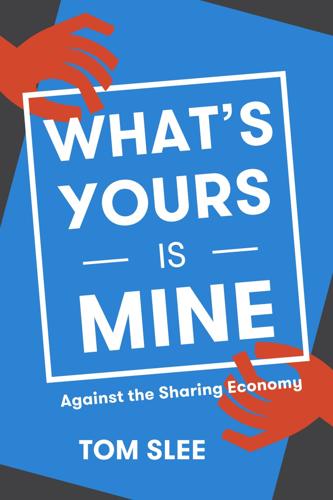
What's Yours Is Mine: Against the Sharing Economy
by
Tom Slee
Published 18 Nov 2015
Sociologist Jathan Sadowski traced it to a report from the Transportation Research Board dated 2005 (the early days of Zipcar), which covered all kinds of car-sharing (profit and non-profit), and the main cause of the result is families foregoing the purchase of a car and choosing to car-share instead.7 The Transportation Research Board did not make a big deal of this as an environmental benefit (there is nothing to suggest that the total number of car-miles driven decreases after all, just that car ownership decreases). Zipcar’s claim of an environmental benefit depends on the baseline comparison. It is plausible that a Zipcar has less environmental impact than fifteen personal cars. It is equally plausible that a Zipcar has more environmental impact than more widespread use of public transit. So it is cheeky, to say the least, that Zipcar is using the “15-car” figure as part of an effort to encourage university students to take up car-sharing: efforts that are likely to add to the number of cars on the road rather than reduce it. Zipcar’s universities page promises “a different degree of freedom . . . the convenience of car ownership without the hassles of having a car on campus”; the freedom and convenience are in comparison to the use of public transit.
…
Sadly, the appeal to community turned out to be more hope than reality. In 2012, researchers Fleura Bardhi and Giana Eckhardt interviewed a set of Zipcar users in Boston, rode with them, and found that Zipcar users are motivated by self-interest and utilitarianism rather than by any altruistic community motives.3 The researchers expected a community to emerge around the Zipcar brand, but found that users resisted the company’s efforts to create a community beyond the straightforward fact of market exchange. Zipcar users were prepared to “look out for their own interests at the expense of the object [the car] as well as the other users,” so that “surveillance and command controls are welcomed” to stop other users from treating the shared cars badly.
…
Consumers like and even want more of this surveillance, as they feel it is the only way the system can work effectively, since they don’t trust each other to obey the rules without Zipcar’s heavy handed enforcement.”4 Bardhi and Eckhardt also expected Zipcar users to be motivated by political consumerism, especially as it relates to anti-car, environmental concerns, but they found no evidence of these motivations either. The Zipcar experience was clearly a lot more of a normal, mainstream consumer exchange than advocates were claiming, so perhaps it should have been no surprise when, in January 2013, Zipcar was bought by rental company Avis.5 With that purchase there is no longer a suggestion that the relationship between Zipcar users and the company is anything other than a straightforward commercial exchange (with the usual company brand promotion), and there is no suggestion of any relationship at all between Zipcar users and each other. The brand continues to promote its environmental message, saying on one of its university pages that: “Every day we are working towards a place with less dependence on personally-owned vehicles.
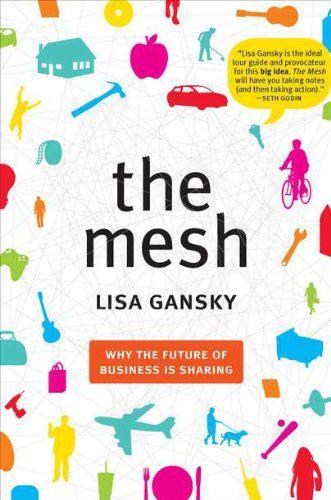
The Mesh: Why the Future of Business Is Sharing
by
Lisa Gansky
Published 14 Oct 2010
Meanwhile, far from the national spotlight, a different kind of car company was quietly breaking business records. That company, Zipcar, had established itself in less than nine years throughout the United States, Canada, and Europe. From its inception in 2001, Zipcar had one of the decade’s fastest growth rates. Revenues doubled and tripled in the second and third years. In 2009 it generated over $130 million in revenue, up over 30 percent from the previous year. Zipcar is a near perfect example of a successful Mesh business. It doesn’t make, sell, or repair cars. It shares them. The Boston-based company was the brainchild of two friends who first met in kindergarten.
…
The details included things like how and when the cars would be washed, finding and negotiating just the right parking spots at the right cost, and figuring out the basic rules that drivers would find reasonable, and honor. The robust information platform and focus on building the brand distinguished Zipcar from early car-sharing companies that were merely long on good intentions, many of which failed. In fact, Zipcar is primarily an information business that happens to share cars. The company collects information about who is using the car, and when, how, and where it’s being used. That data makes the business work and generates the greatest value. As the number of people using Zipcar grows, the collected data enables the company to better know specific groups of customers, defined by demographics or location.
…
As this “ecosystem” of businesses grows, the network delivers better, more personalized services to customers. And when customers appreciate the service, they tell their friends. Zipcar has built a brand, challenged formerly entrenched business models, and helped create a new category in personal transportation. A measure of its success is that Hertz, Enterprise, and Daimler have all launched car-sharing services. But Zipcar remains the largest car-sharing company, and recently filed an initial public offering for raising additional funds to scale the service. my date with mini mucho. Although Zipcar appealed to me as an entrepreneur, I always want to understand a business from the perspective of a customer.
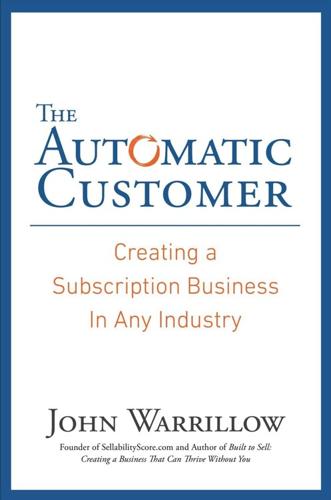
The Automatic Customer: Creating a Subscription Business in Any Industry
by
John Warrillow
Published 5 Feb 2015
In Boston’s well-to-do Beacon Hill neighborhood, Zipcar provided Volvos and BMWs.5 In the left-leaning area of Cambridge, the fleet was made up mostly of Toyota’s Prius hybrids. Zipcar also matched the fleet in each zone with the usage pattern of subscribers in the area. Boston’s Back Bay users often took their cars to Cape Cod for the weekend, so Zipcar made sure its vehicles were larger and more comfortable. Harvard Square subscribers were mostly students who wanted small cars for quick trips. Once the fleet matched the demographics of a zone, Zipcar blitzed the neighborhood with advertising to sign up subscribers and build density. The immediate experience of users in the zone was positive, and they told their friends. Zipcar used this density model to scale up the company.
…
Hart, Myra M., Michael J. Roberts, and Julia D. Stevens, “Zipcar: Refining the Business Model,” Harvard Business School, May 9, 2005. newentrepreneurship.files.wordpress.com/2012/01/zipcar-refining-the-business-model.pdf. 4. Clifford, Stephanie, “How Fast Can This Thing Go, Anyway?” Inc., March 1, 2008. inc.com/magazine/20080301/how-fast-can-this-thing-go-anyway.html. 5. Ibid. 6. Naughton, Keith, “Avis Budget Embraces Car Sharing with Zipcar Acquisition,” Bloomberg News, January 2, 2013. bloomberg.com/news/2013-01-02/avis-budget-makes-491-million-offer-to-acquire-zipcar.html. 7. “Number of World of Warcraft Subscribers from 1st Quarter 2005 to 3rd Quarter 2014 (in millions),” Statista. statista.com/statistics/276601/number-of-world-of-warcraft-subscribers-by-quarter. 8.
…
At the time it was acquired, WhatsApp did not employ a single marketing executive.2 Driven by Density Like WhatsApp, Zipcar has a base of passionate subscribers who actively promote the service to their friends. Zipcar’s road to becoming a successful network model subscription company, however, was a little rockier. The company was started in 1999 by Robin Chase and Antje Danielson. Danielson had returned from a trip to Berlin, where she had been impressed by a car-sharing scheme used in Germany and Switzerland. The partners decided to bring the model of sharing cars to North America. The model was simple. You paid an annual membership fee of $50 a month, which granted you access to one of Zipcar’s fleets.

What's Mine Is Yours: How Collaborative Consumption Is Changing the Way We Live
by
Rachel Botsman
and
Roo Rogers
Published 2 Jan 2010
Just as fans celebrate when their sports team wins, members of strongly branded collaborative communities have even held self-organized parties when the product or service they love hits a milestone. Take Zipcar, a poster child of a Collaborative Consumption brand built from the bottom up. On May 17, 2007, “Zipsters” organized a party for Zipcar’s seventh birthday at City Hall Plaza in downtown Manhattan. The invitation on Yelp declared, “Zipcar was born right here in your own backyard. And what was once just a cool idea now has 25,000 members in Boston and over 90,000 around the world. Oh, they grow up so fast! So come out and sing ‘Happy Birthday,’ grab some free grub and test your skills at any one of our birthday party games.”
…
Retrieved October 2009, www.nielsen-online.com/pr/pr_050823_uk.pdf. 5. Fred Turner, From Counterculture to Cyberculture: Stewart Brand, the Whole Earth Network, and the Rise of Digital Utopianism (Chicago University Press, 2006). 6. “Zipcar Rolls Out National Low-Car Diet.” Zipcar press release (July 21, 200), http://green.autoblog.com/2009/08/25/zipcars-low-car-diet-results-save-money-lose-weight 7. Ibid. 8. Philip Ball, Critical Mass: How One Thing Leads to Another (Farrar, Straus and Giroux, 2006). As cited on Wikipedia http://en.wikipedia.org/wiki/Critical_mass_(sociodynamics). 9.
…
Driving costs retrieved from AAA, www.aaanewsroom.net/Assets/Files/200844921220.DrivingCosts2008.pdf. 24. Paul Keegan, “Zipcar: The Best New Idea in Business,” CNNMoney.com (August 27, 2009), http://money.cnn.com/2009/08/26/news/companies/zipcar_car_rentals.fortune/. 25. Reid J. Lifset, “Moving from Products to Services,” Journal of Industrial Ecology 4, no. 1 (February 13, 2002), www.greenbiz.com/research/report/2002/02/14/moving-products-services. 26. Keegan, “Zipcar: The Best New Idea in Business.” 27. Mark Levine discussed a similar idea in “Share My Ride,” New York Times (March 5, 2009), http://www.nytimes.com/2009/03/08/magazine /08Zipcar-t.html. 28.

MacroWikinomics: Rebooting Business and the World
by
Don Tapscott
and
Anthony D. Williams
Published 28 Sep 2010
See: http://en.wikipedia.org/wiki/Orteig_Prize. 19. Jeremy Korzeniewski, “Chevy Volt will cost GM $750 million,” autobloggreen (December 9, 2008). 20. See Zipcar Press Release: http://zipcar.mediaroom.com/index.php?s=43&item=8. 21. “Case Study: Zipcar,” District of Columbia—Department of the Environment. See: http://ddoe.dc.gov/ddoe/cwp/view,a,1210,q,499698.asp. 22. Ibid. 23. See Zipcar Corporate Overview: http://zipcar.mediaroom.com/file.php/61/corporate_overview.pdf. 24. Paul Keegan, “Zipcar: The best new idea in business,” Fortune (August 27, 2009). 25. Bill Ford, quoted in ibid. Chapter 8 1. “Education at a Glance 2009,” OECD (2009). 2.
…
Without incurring any maintenance costs, Aaron was looking at about $645 per month to own and run a small car in downtown Toronto. Then Aaron considered Zipcar—something he had seen all over Toronto but knew little about. (Toronto residents have embraced the Zipcar with considerable enthusiasm. One cannot walk more than a few blocks in Toronto’s inner city without sighting several Zipcar parking spots.) He learned that he could join the service for a $35 membership fee, on an “Occasional Use” plan. He calculated that if he took 6 car trips per month, at an average of 2 hours each, for about $13 per hour, he would spend about $156 monthly. Aaron decided the economics of the Zipcar model looked pretty sharp at first glance, so he decided to give the service a try.
…
Chase likes to say that Zipcar is the car your mother always said you couldn’t have—all the fun and none of the responsibilities. For a significant demographic, the trade-off makes a whole a lot of sense. At the time of writing, Zipcar was serving sixty-seven cities in the United States, Canada, and the United Kingdom, using a fleet of 6,500 vehicles.23 As the largest car-sharing company in the world, Zipcar has cultivated a roster of 300,000 faithful and enthusiastic members, called “Zipsters,” who have shared access to this trendy, useful, and generally fuel-efficient fleet. Zipcar estimates that for every vehicle added to its fleet, fifteen to twenty single-user automobiles are removed from the road.24 The claim may be somewhat exaggerated.
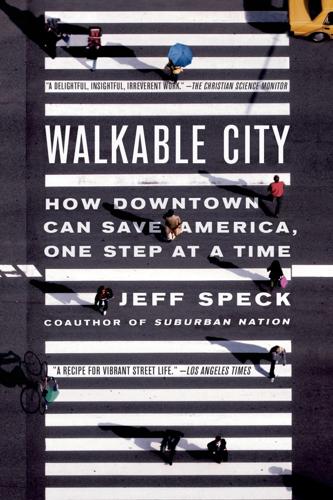
Walkable City: How Downtown Can Save America, One Step at a Time
by
Jeff Speck
Published 13 Nov 2012
If so, you are probably ready for Zipcar. And then go for it, as the benefits are tremendous. After a year of service, Zipcar Baltimore polled its members and found that they were walking 21 percent more, biking 14 percent more, and taking transit 11 percent more than before joining. Only 12 percent of members had taken more than five driving trips in the previous month, compared to 38 percent before joining Zipcar. About a fifth of members had sold their cars, and almost half claimed that Zipcar had saved them from having to buy a car.36 There is only one challenge to Zipcar, which is that they are too smart to locate in unwalkable cities.
…
But, for most of the profession, Upton Sinclair’s famous observation still holds sway: “It is difficult to get a man to understand something when his salary depends on his not understanding it.” ●AAA: “Your Driving Costs,” 2010 edition, 7. The marginal operating cost of most vehicles is well below twenty cents per mile. This explains why Zipcar and the other urban car-share programs are so effective at reducing auto use. According to the company website, each “Zipcar takes at least 15 personally-owned vehicles off the road.” For a Zipcar member, the fixed costs—a twenty-five-dollar application fee and a sixty-dollar annual membership fee—are negligible compared to the marginal costs of hourly rental. ●Walk Score website: “America’s Most Walkable Neighborhoods.”
…
These don’t need rails, but they function as pedestrian accelerators in already-populated corridors, and each one costs less than the cheapest Ferrari.● Although technically buses, they are also cute, and can serve as an effective gateway drug to more hard-core rail transit in the future. ZIP IT IF YOU CAN Every city wants Zipcar. Does Zipcar want them back? Probably not. By all means, invite them to dinner, give them the key to your city, and offer them all of the concessions they usually ask, including dedicated parking spaces in the best locations—as many as they want. But understand that this superficially pro-driving enterprise cannot thrive in your city unless you have already moved beyond the pro-driving paradigm.
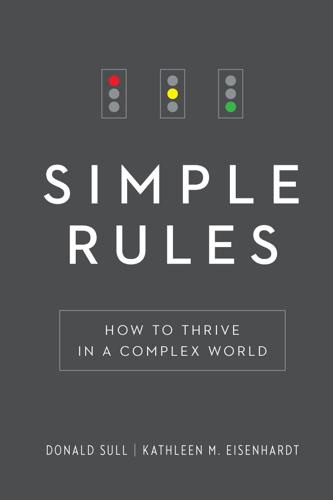
Simple Rules: How to Thrive in a Complex World
by
Donald Sull
and
Kathleen M. Eisenhardt
Published 20 Apr 2015
To see how simple rules balance coordination with individual interests, consider the case of Zipcar, which was founded in 2000 by Antje Danielson and Robin Chase. Zipcar emerged as the world’s leading car-sharing network, with approximately 810,000 members and over ten thousand vehicles in cities and on college campuses spread across the United States, Canada, the U.K., and Europe. Unlike car rental firms like Hertz or Enterprise, Zipcar has no drop-off centers or staff to clean, check, and refuel the cars. Instead, Zipcar relies on its members to ensure that the vehicles they used are fit for the next driver’s use.
…
. [>] Instead, for its first: Since its acquisition by Avis Budget, Zipcar’s six simple rules have been incorporated into fifty-one frequently asked questions, which were themselves organized into ten categories, including “driving rates, billing and fees,” “insurance and vehicle damage,” and “manual driving record checks.” The rules are no longer simple. “No smoking” was stretched out to 26 words (plus an appendix), “pets in carriers” to 73 words, and “return on time” to a 142-word statement of policy. Accessed January 28, 2014, http://www.zipcar.com/how#faqs. [>] Students might use them: Examples of how people use Zipcars from company website, http://www.zipcar.com/?
…
Finally, simple rules allow the members of a community to synchronize their activities with one another on the fly. As a result, communities can do things that would be impossible for their individual members to achieve on their own. Bee colonies, for example, use simple rules to find a new nest, and members of Zipcar relied on simple rules to share cars across thousands of users. In the next chapter, we’ll expand on why simple rules are so powerful. At first glance, the rules of triage have nothing in common with, for example, the rules geese follow to flock in tight formations. But a deep unity lies beneath the variety.
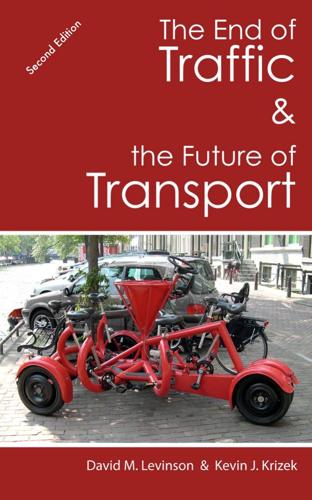
The End of Traffic and the Future of Transport: Second Edition
by
David Levinson
and
Kevin Krizek
Published 17 Aug 2015
Krizek. 177 Carsharing is by-and-large in the US context not even analogous to a time-share, where different people do share ownership of a property, but get to use it at different times. 178 This varies by city, so in Minneapolis, cars are on-street, in other cities like Boston, restriction affect this. 179 Zipcar was originally founded by Robin Chase and Antje Danielson in 2000; Danielson was forced out in 2001, Chase in 2003. 180 For more on carsharing: http://www.shareable.net/blog/should-products-be-designed-for-sharing http://www.bizjournals.com/boston/blog/startups/2013/01/zipcar-acquisition-avis-carsharing.html?page=all http://www.theverge.com/2014/4/1/5553910/driven-how-zipcars-founders-built-and-lost-a-car-sharing-empire 181 Zipcar went public with 8,000 cars, 500,000 members and $186 million in revenue. Never profitable, it was acquired by Avis in 2013 at about one-third its 2011 market capitalization.
…
Report of the American Planning Association, May 2014, https://www.planning.org/policy/polls/investing/pdf/pollinvestingreport.pdf 49 US PIRG (2014) "Millennials in Motion" http://www.uspirg.org/reports/usp/millennials-motion 50 This has health effects, the beneficial effects of greater walkability (and thus walking) in urban centers is offset by the additional pollution intake in those same places. See Hankey, Steve, Julian Marshall and Michael Brauer (2012) Health Impacts of the Built Environment: Within-Urban Variability in Physical Inactivity, Air Pollution, and Ischemic Heart Disease Mortality. Environ Health Perspectives 120(2): 247–253. 51 Zipcar (2013) Millennials and Technology http://www.slideshare.net/Zipcar_Inc/millennial-slide-share-final-16812323 52 According to Noreen McDonald "Among young adults, lifestyle-related demographic shifts, including decreased employment, explain 10% to 25% of the decrease in driving; Millennial-specific factors such as changing attitudes and use of virtual mobility (online shopping, social media) explain 35% to 50% of the drop in driving; and the general dampening of travel demand that occurred across all age groups accounts for the remaining 40%."
…
Avis assessed its net present value at over $500 million of profit over the discounted future (For a point of reference, this is about half the price of a new NFL stadium (about one-half a giga-dollar)). 182 As a member of a two-driver, one-car family, David used Zipcar for about a year, but stopped due its inconvenience and cost. While his experience was limited (he used it for only a handful of trips), there were several problems. First the station was inconvenient from his house, the pick up and return location for the car was a parking space on campus, more than a mile from home. Second he had to know exactly how long was the trip, since overage charges were some $50. From the Zipcar perspective, with such a thin fleet of vehicles, the overage charge was essential to guarantee the car would be available for the next renter, but to avoid being late, the renter had to reserve the car for a longer time period.
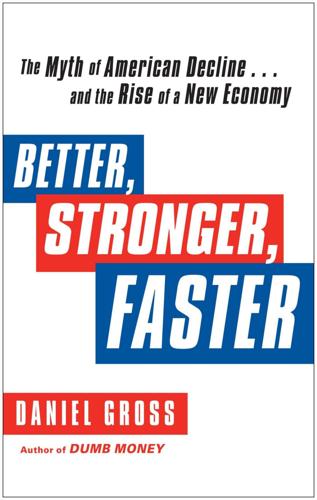
Better, Stronger, Faster: The Myth of American Decline . . . And the Rise of a New Economy
by
Daniel Gross
Published 7 May 2012
It has signed deals with the New York City Department of Transportation, the city of Chicago, and the General Services Administration to offer cars to employees.6 Zipcar, which went public in April 2011, is making money; it scraped out a small profit in the third quarter of 2011. But the profit is beside the point. The value is what it saves consumers who get the full, or near-full, utility of ownership without the enormous associated costs, and how it benefits the economy at large. Zipcar saves people money, and then encourages its customers to drive less or more strategically. On its website, Zipcar touts a study that shows “each car shared takes 15 privately owned vehicles off the road, and that vehicle miles traveled per driver is reduced almost 50 percent when car owners switch to car sharing.”
…
In the aftermath of the bust, new businesses that aimed to cash in on the growing market for efficient vehicle use were launched. Chief among them is Zipcar. Founded in 2000, it grew by focusing on cities and college campuses. It uses information technology to manage the fleet and control access; members get a card that lets them into garages where cars are housed and then into the cars. Users in New York pay a $60 annual fee and then $8.75 per hour on weekdays and $13.75 per hour on weekends; they do not pay for gas or insurance, and there is no charge per mile. As the U.S. economy contracted, Zipcar went into hypergrowth: 225,000 members in 2008 to 350,000 members in January 2010 to 650,000 members and 9,500 cars in November 2011.
…
As the U.S. economy contracted, Zipcar went into hypergrowth: 225,000 members in 2008 to 350,000 members in January 2010 to 650,000 members and 9,500 cars in November 2011. Zipcar has had predictable success in the big cities of Boston, New York, and San Francisco, but its vehicles can also be found on 350 college campuses. The company struck a deal with Ford to provide memberships to college students for as little as $25 and with rates as low as $7 per hour. As it has gained scale, Zipcar has moved from exclusively serving efficient consumers to providing solutions to efficiency-seeking businesses and institutions. It has signed deals with the New York City Department of Transportation, the city of Chicago, and the General Services Administration to offer cars to employees.6 Zipcar, which went public in April 2011, is making money; it scraped out a small profit in the third quarter of 2011.
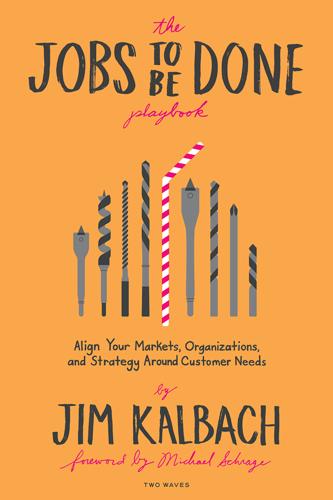
The Jobs to Be Done Playbook: Align Your Markets, Organization, and Strategy Around Customer Needs
by
Jim Kalbach
Published 6 Apr 2020
For example, I once experienced a mismatch in goal levels while interacting with Zipcar, the popular carsharing service. On one occasion, I showed up to my reserved car spot, and the vehicle wasn’t there. After immediately calling customer service, they offered to pay for a cab ride to my destination. Job done. But on Mother’s Day another year, the same thing happened: I arrived to my reserved car, and it wasn’t there. This time, rather than offering an alternative ride option, the Zipcar agent proceeded to name other locations to pick up a Zipcar. All of them would have added hours to my trip. In other words, while I was trying to get to my family’s house at a specific time (a big job), in this case, the agent was trying to rent me another car (a little job).
…
As a result, our exchange was longer than needed and was more contentious. We weren’t seeing eye-to-eye. Eventually, the agent was able to find another car, but not for the same time period. We arrived late and had to leave early. Zipcar failed to help me accomplish my job to be done that day. My interaction with Zipcar begs the question: What business are they really in? Does Zipcar just rent cars, or do they provide reliable mobility? How might the agent have helped me differently? And how might everyone in the company align around the customer need in order to serve customers and ultimately to innovate?
…
In the end, innovations that get a job done for the end consumer have a higher chance of succeeding. Focusing on the job to be done isn’t just about creating better products—it’s about whether your business will ultimately survive or not. PLAY Provide Relevant Support “Get me to my mother’s house!” That’s what I demanded over the phone to an agent at Zipcar, a leading car-sharing provider, on Mother’s Day one year. He and I seemed to have a misunderstanding about what I wanted to get done. The conflict started when I arrived at the spot of my reserved car, and there was no car there. After failing to locate the vehicle I booked, the agent proceeded to name alternate locations where I could get a different rental car.

Only Humans Need Apply: Winners and Losers in the Age of Smart Machines
by
Thomas H. Davenport
and
Julia Kirby
Published 23 May 2016
They still felt a need to work with an ecosystem, because—as we suggested in describing the LUMAscape—the amount of new technology is “overwhelmingly complex,” as both Daley and Harrington described it, and a smaller company like Zipcar still needs external expertise. But they decided to rely on focused external expertise, and found agency partners who employ automated tools within each marketing channel. Zipcar uses the partners to actually “turn the dials” on the automated systems, and Daley and his colleagues monitor the results. It’s clearly an augmentation situation rather than pure automation. To show how specialized this expertise has become, Zipcar works with one company on the programmatic buying of digital display ads, another one on automated search engine optimization, another on YouTube video advertising, another for automated Facebook ad buys, and so forth.
…
He’s the vice president of member acquisition at Zipcar, the pioneering car-sharing service acquired by the Avis Budget group in 2013. Member acquisition means finding new customers and the primary approach to that is digital marketing—much of which is automated. Daley has been in digital marketing since 1999, but he’s not sure that anyone is an expert on programmatic buying (automated purchase of digital ads) and marketing automation. But, he admits, he works with them every day, so he might qualify as much as anyone. Until a couple of years ago, Daley says, Zipcar wasn’t that sophisticated in digital marketing.
…
Daley says there is no way so few people could manage all the channels without both automation and external partners. The “programmatic” systems don’t run on automatic pilot. Daley says that Zipcar’s goal in digital marketing is to observe who signs up as a member, and then to find other people like them. The automated marketing systems let them study all the people who convert with them, and create look-alike profiles. Regardless of where they are on the Internet, Daley and his team try to find them. There is also a complicated internal Zipcar budgeting structure that Daley and Harrington have to work with. Each of the twenty-six geographic regions has a budget for marketing.
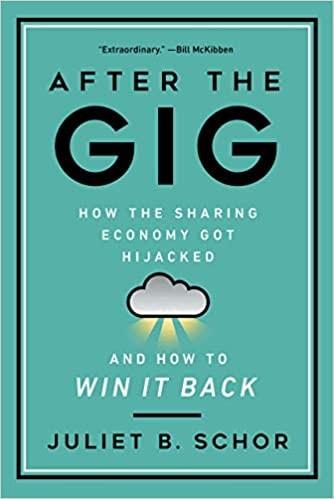
After the Gig: How the Sharing Economy Got Hijacked and How to Win It Back
by
Juliet Schor
,
William Attwood-Charles
and
Mehmet Cansoy
Published 15 Mar 2020
Couchsurfing began in 1991 after Casey Fenton, needing lodging for a trip to Iceland, hacked into the university database and sent fifteen hundred emails to students asking for a place to stay.25 Craigslist and eBay were founded in 1995 and prefigured key features of later platforms—the peer-to-peer (P2P) structure and ratings systems.26 Other goods exchanges debuted soon after, including Freecycle, a gifting site. In 2000 Zipcar was founded by Antje Danielson and Robin Chase, with the aim of reducing environmental impact by getting urbanites to forgo car ownership.27 (In the end Zipcar didn’t reduce carbon emissions because it facilitated access to cars and pulled people off public transportation, in a classic case of unintended consequences.)28 Chase had originally planned a P2P structure but couldn’t get insurance companies to cover the rentals.
…
“New Cultures of Connection in a Boston Time Bank.” In Sustainable Lifestyles and the Quest for Plentitude: Case Studies of the New Economy, edited by Juliet B. Schor and Craig J. Thompson, 95–124. New Haven, CT: Yale University Press. Duhaime-Ross, Arielle. 2014. “Driven: How Zipcar’s Founders Built and Lost a Car-Sharing Empire.” The Verge, April 1, 2014. www.theverge.com/2014/4/1/5553910/driven-how-zipcars-founders-built-and-lost-a-car-sharing-empire. Edelman, Benjamin, and Michael Luca. 2014. “Digital Discrimination: The Case of Airbnb.com.” Working Paper 14–054. Harvard Business School. www.west-info.eu/files/airbnb_research.pdf. Edelman, Benjamin, Michael Luca, and Dan Svirsky. 2017.
…
He was handy and enjoyed helping others. Part of his success, he believed, was because he’d grown up poor, which led him to develop a lot of skills: “Jamaicans have, like, a hundred jobs. And I’m not far from that stereotype. . . . If you look at my TaskRabbit profile, I’m in a lot of the categories.” Devon also rented on Zipcar and used Couchsurfing, a site that arranged lodging between individuals, without payment. When he heard about Airbnb, he began hosting on that platform, too, figuring he’d make some money doing what he’d been doing for free and really enjoyed. He was also in the middle of building a gadget to test soil moisture and water his plants while he was on the road, using an open-source Arduino digital controller.
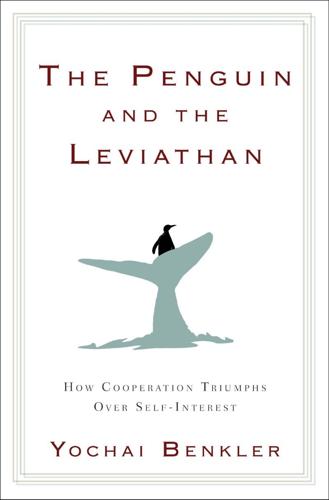
The Penguin and the Leviathan: How Cooperation Triumphs Over Self-Interest
by
Yochai Benkler
Published 8 Aug 2011
Now, CouchSurfing isn’t a for-profit enterprise. But as it turns out, even businesses and companies can benefit from framing something as a community rather than a strictly for-profit enterprise. One successful example of this is Zipcar, a “car-sharing” company that originated in Boston. Zipcar’s business model is simple. For a small membership fee, people can rent a car by the hour, for relatively low rates. The draw of Zipcar, though, is less price than convenience; the company keeps fleets of cars in central locations where renters can easily pick them up and drop them off. But this is not the only reason for its appeal. Like CouchSurfing, the company forges a sense of community among its users.
…
But communication is the most fundamental one. The most skilled and successful mediators, though, are those who not only foster the most effective communication, but also are able to frame the conflict in such a way that both parties come to see a fair resolution as more achievable than they previously thought. CouchSurfers and Zipcar Drivers: Cooperation and Framing In looking at mediation, and at the other examples of successful cooperative systems, we begin to see why it is that communication works as well as it does. First and foremost, practically every one of the elements of a successful cooperative system I discuss in this book—empathy and solidarity, moral norms, fairness, trust, and leadership—depends on communication.
…
For one, they create a sense of solidarity and shared purpose by targeting a certain type of customer: the environmentally conscious. Their advertising and website tout their corporate mission—to help reduce pollution by making it easier for people to avoid owning a car. And most of their cars support that mission; they are small and fuel-efficient (many are hybrids). Like CouchSurfing, Zipcar frames the transaction as being at least partly social (though of course money does change hands) by calling it car “sharing” rather than rental. A strong element of trust further reinforces the community feel; there are no attendants to check the condition of a car once it is returned; members are simply encouraged to return the car clean, in good shape, with a full tank of fuel, for the next user—which they do, with amazing consistency.
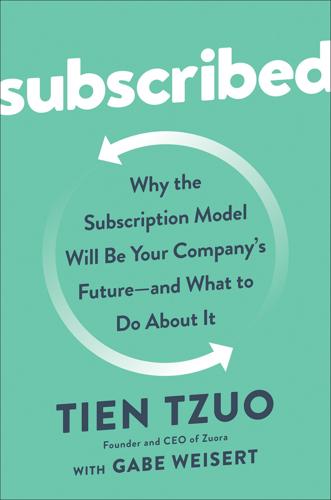
Subscribed: Why the Subscription Model Will Be Your Company's Future - and What to Do About It
by
Tien Tzuo
and
Gabe Weisert
Published 4 Jun 2018
During the first couple of years of Zuora, when we were trying to convince other people that subscription models weren’t just for software companies, we were fascinated with a company called Zipcar. Founded in 2000, Zipcar let subscribers book cars by the minute, hour, or day. It pitched itself as an alternative to car rentals or U-Haul. It was a novel service that was also simple and intuitive. Zipcar had several thousand cars scattered throughout twenty-five major American cities. You located a nearby Zipcar and reserved it online, swiped your membership card across a sensor on the vehicle, and drove off. It was also very popular—by 2012 it had more than three quarters of a million drivers paying for transportation by the hour.
…
It was also very popular—by 2012 it had more than three quarters of a million drivers paying for transportation by the hour. At one of our earlier events in New York City, for example, we found out that no one had a car—no surprise there for anyone who’s lived in New York. But what came as a surprise was that 80 percent of people we polled had Zipcar memberships. Yes, there were massive limitations to Zipcar—you had to live in a city, for example. But we could see that the next revisions of this concept (give me the ride, not the car) were just going to get better and better. That experience let us see a future world where car ownership would not be necessary. Today more than 60 million riders use Uber and Lyft.
…
WHY THIS BOOK, AND WHY NOW Ten years ago we were already starting to see the signs. Netflix was still delivering monthly DVDs in the mail, but it was already killing Blockbuster and changing how we consumed media. Online streaming was just around the corner (as many people have pointed out, Reed Hastings called it Netflix for a reason). Zipcar was also a really interesting new concept. It was initially seen as an hourly competitor to Hertz and Budget, but you could already see new ideas opening up around cars and transportation, which Uber and Lyft capitalized on later. And of course the iPhone had just come out—at the time it was more of a fun, plug-and-play app container, but there was the potential for geolocation, identity, messaging.
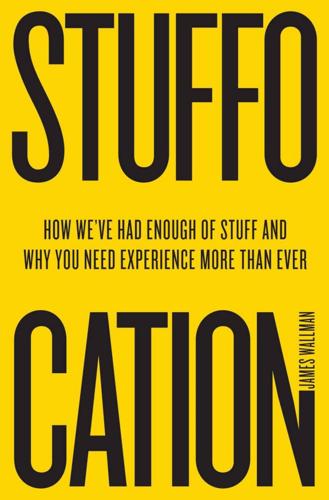
Stuffocation
by
James Wallman
Published 6 Dec 2013
The social accommodation brand Airbnb, the car-sharing service Zipcar and music-streaming site Spotify are all examples of what is variously known, from slightly different angles, as the new trend for dis-ownership, the sharing economy and collaborative consumption. Now, thanks to these trends and the technologies that make them possible, you can enjoy the experience of a room, a house, a car, a CD, a handbag, a lawnmower, a musical instrument or even a dog – without all the hassle that comes with owning them. The success of Zipcar, for instance, reflects the space and cost that comes with keeping a car in a city, and the fact that, if you live in a city, you just do not need a car so much anymore.
…
“Rather than owning a thing”: millennials not so interested in material objects Various sources, including Tammy Erickson, “Meaning Is the New Money”, HBR Blog Network, 23 March 2011; and David Brooks, “The Experience Economy”, New York Times, 14 February 2011. The rise of services like Zipcar, Spotify, and Netflix For excellent introductions to how these companies operate, read Rachel Botsman and Roo Rogers, “Beyond Zipcar: Collaborative Consumption”, Harvard Business Review, October 2010; and, for the rise of these services, read “All Eyes on the Sharing Economy”, The Economist, 9 Mar 2013. CHAPTER ELEVEN Are You Experienced? Your Government Wants to Know This chapter is informed by many sources, including Roger Cohen, “The Happynomics of Life”, New York Times, 12 March 2011; Richard Layard, Happiness: Lessons from a New Science (London: Penguin, 2011).
…
Joseph Pine II and James H Gilmore, “Welcome to the Experience Economy”, Harvard Business Review, July 1998. More on TOMS shoes: www.toms.com. More on the Common Threads Initiative between eBay and Patagonia: www.patagonia.com/us/common-threads. Watch Puma’s Clever Little Shopper disappear on YouTube. Stay with Airbnb: www.airbnb.com. Rent a car from Zipcar: www.zipcar.com . Get your music from Spotify: www.spotify.com. “London, one of the world’s most visited cities” Source: Deborah L. Jacobs, “The 20 Most Popular Cities In The World To Visit In 2012”, Forbes, 20 June 2012. In the 2013 rankings, Bangkok pipped London to the number one spot. CHAPTER FOURTEEN What about the Chinese?
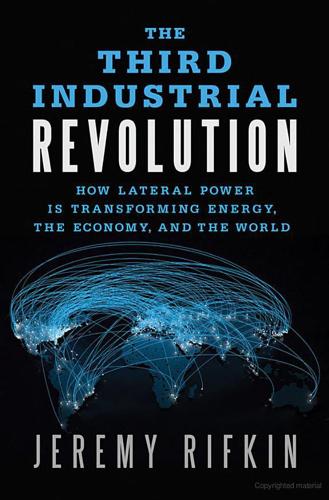
The Third Industrial Revolution: How Lateral Power Is Transforming Energy, the Economy, and the World
by
Jeremy Rifkin
Published 27 Sep 2011
Retrieved from http://www.kiva.org/about/facts. 29.Community Supported Agriculture. (n.d.). Local Harvest. Retrieved from http://www.localharvest.org/csa/. 30.Keegan, P. (2009, August 27). Car-Rental, Auto Industry React to Zipcar’s Growing Appeal. CNNMoney. Retrieved from http://money.cnn.com/2009/08/26/news/companies/zipcar_car_rentals.fortune; Green Benefits. (2011). Zipcar. Retrieved from http://www.zipcar.com/is-it/greenbenefits. 31.Ibid. 32.Fenton, C. (n.d.). Guiding Principles. CouchSurfing. Retrieved from http://www.couchsurfing.org/about.html/guiding. 33.Statistics. (n.d.). CouchSurfing. Retrieved from http://www.couchsurfing.org/statistics.html. 34.British Have Smallest Homes in Europe. (2002, May 3).
…
Communauto, the Canadian car sharing service in Quebec, reports a 13,000-ton reduction in CO2 emissions by its 11,000 members. A study in Europe found that car sharing cut CO2 emissions by as much as 50 percent.30 Zipcar, the world’s largest car-sharing business is a for-profit operation founded in 2000. In just ten years, the company has grown to hundreds of thousands of members. There are several thousand Zipcar locations around the world and more than eight thousand vehicles to choose from. The company, whose revenue topped $130 million in 2009, is growing at a phenomenal rate of 30 percent a year. In 2010, Zipcar launched a hybrid electric vehicle pilot project in its San Francisco location. The brand has become popular among the environmentally conscious millennium generation who refer to themselves as “zipsters.”31 As renewable energy and the TIR infrastructure become more widespread, car-share lots, like Zipcar, will be able to provide green electricity on site to power electric plug-in vehicles.
…
The brand has become popular among the environmentally conscious millennium generation who refer to themselves as “zipsters.”31 As renewable energy and the TIR infrastructure become more widespread, car-share lots, like Zipcar, will be able to provide green electricity on site to power electric plug-in vehicles. Car-share commons are likely to become a significant alternative to the conventional model of purchasing cars in markets, especially in dense urban areas where the cost of maintaining a car that is used only infrequently makes little practical sense. I had the occasion to meet Robin Chase, the founder and former CEO of Zipcar, at the 2011 OECD International Transport Forum in Leipzig, Germany. I was there to give an opening address on the need to create an integrated post-carbon transport and logistics network—pillar 5—across each continent between now and 2050 in order to advance the creation of seamless continental markets.
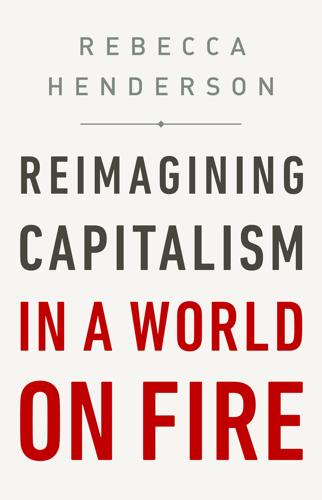
Reimagining Capitalism in a World on Fire
by
Rebecca Henderson
Published 27 Apr 2020
AutoGrid, CLP Holdings Signs Multi-Year Strategic Commercial Agreement with AutoGrid to Deploy New Energy Solutions Across Asia-Pacific Region, Dec. 12, 2018, www.prnewswire.com/in/news-releases/clp-holdings-signs-multi-year-strategic-commercial-agreement-with-autogrid-to-deploy-new-energy-solutions-across-asia-pacific-region-702571991.html. 58. Nico Pitney, “A Revolutionary Entrepreneur on Happiness, Money, and Raising a Supermodel,” Huffington Post, Dec. 7, 2017, www.huffingtonpost.com/2015/01/30/robin-chase-life-lessons_n_6566944.html. 59. “Avis Budget Group to Acquire Zipcar for $12.25 Per Share in Cash,” Zipcar, Jan. 2, 2013, www.zipcar.com/press/releases/avis-budget-group-acquires-zipcar. 60. Jackie Krentzman, “The Force Behind the Nike Empire,” Stanford Magazine, Jan. 1997, https://alumni.stanford.edu/get/page/magazine/article/?article_id=43087. 61. Nike Annual Report 1992, NIKE, https://s1.q4cdn.com/806093406/files/doc_financials/1992/Annual_Report_92.pdf. 62.
…
It can persuade consumers to favor your products and services over those of your competition. It can reduce costs. It can create entirely new businesses—particularly if, like CLP, you are sophisticated enough to see how the world is changing before others do. Robin Chase founded Zipcar—a car sharing service—in 2000, nearly twenty years ago, years before the rest of us discovered the sharing economy. She saw Zipcar as part of a much larger vision for how the economy might be transformed. In one interview she explained: The collaborative economy is larger than the sharing economy. The sharing economy feels to me like it’s about assets. The collaborative economy is everything.
…
I can start to rely on the fact that I can reach out and find the right person at the right moment. That dramatically transforms how you live. Instead of on-demand cars, it’s an on-demand life, in a much larger fullness.58 Zipcar grew to be the largest car sharing company in the world and was acquired by Avis in 2013 for half a billion dollars.59 It now has over a million members in five hundred cities in nine countries. Since leaving Zipcar, Chase has founded or helped to found at least three other ventures with similar goals—Buzzcar, a peer-to-peer car sharing service; GoLoco.org, a ride sharing company; and Veniam, a firm that uses cars and trucks to blanket a city with public Wi-Fi.

Street Smart: The Rise of Cities and the Fall of Cars
by
Samuel I. Schwartz
Published 17 Aug 2015
According to a 2014 study by the business consultants Alix Partners, car-sharing services like Zipcar or RelayRides are responsible for auto manufacturers selling half a million fewer cars from 2004 to 2014. If the trend continues (that is, unless it gets worse), another 1.2 million aren’t going to leave dealers’ car lots between now and 2020. It’s not as if automobile manufacturers can make up for this shortfall by fleet sales to the car-sharing companies. Every new car they sell to a company like Zipcar equals thirty-two cars not purchased by civilians. Nearly one American household in ten is now a “zero-car” family.
…
In Urban Public Transportation Systems, 2013, Steven L. Jones (ed.), 357–368. Reston, VA: American Society of Civil Engineers, 2013. Koslowsky, M., et al. Commuting Stress: Causes, Effects, and Methods of Coping. New York, NY: Plenum Press, 1995. KRCResearch. Millennials and Driving: A Survey Commissioned by Zipcar. Cambridge, MA: Zipcar, Inc., November 2011. Lachman, M. L., and D. L. Brett. Generation Y: America’s New Housing Wave. Washington, DC: Urban Land Institute, 2011. Lee, I. M., C. C. Hsieh, and R. S. Paffenbarger Jr. “Exercise Intensity and Longevity in Men: The Harvard Alumni Health Study.” Journal of the American Medical Association 273, no. 15 (April 1995): 1179–1184.
…
You don’t have to spend ten years learning the commuting ropes to know whether the train or bus you’re on is an express or a local, or even when it’s going to show up. You just need a smartphone. Smartphones are also all that’s needed to take advantage of other revolutionary new transportation options: ridesharing services like Via, car-sharing like Zipcar, and—especially—dispatchable taxi services like Uber and Lyft.c However, these and other cool new businesses didn’t create Millennial distaste for driving. They just exploited it. The question remains: why do Millennials find the automobile so much less desirable than their parents, grandparents, and great-grandparents did?

Smart Cities: Big Data, Civic Hackers, and the Quest for a New Utopia
by
Anthony M. Townsend
Published 29 Sep 2013
The basic idea is to use energy-intensive manufactured goods more intensively, so we don’t have to make as many in the first place. Take the car-sharing service Zipcar, for instance. By transforming cars from something you own into a service you subscribe to, Zipcar claims that each of its shared vehicles replaces some twenty private ones.29 Smart technology plays a huge role in making Zipcar practical, by automating many of the traditional tasks involved in renting a car. GPS telemetry tracks vehicle location and use, Web and mobile services eliminate centralized rental depots so cars can be placed close by, and an RFID card identifies allows the renter to unlock one. But as smart as Zipcar is, it’s not very social. But take the same business model and weave in social software to connect people to others with idle vehicles, and suddenly you don’t even need Zipcar.
…
Ratti, “Real Time Rome,” Networks and Communications Studies 20, no. 3–4 (2006): 247–58. 28J. Borge-Holthoefer et al., “Structural and Dynamical Patterns on Online Social Networks: The Spanish May 15th Movement as a Case Study,” PLoS ONE, (2011); doi:10.1371/journal.pone.0023883. 29April Kilcrease, “A Conversation with Zipcar’s CEO Scott Griffith,” GigaOM, last modified December 5, 2011, http://gigaom.com/cleantech/a-conversation-with-zipcars-ceo-scott-griffith/. 30Ron Lieber, “Share Your Car, Risk Your Insurance,” New York Times, last modified March 16, 2012, http://www.nytimes.com/2012/03/17/your-money/auto-insurance/enthusiastic-about-car-sharing-your-insurer-isnt.html?pagewanted=all. 31“Our Carbon Footprint,” Corporate Responsibility Report, InterContinental Hotel Groups, 2011, http://www.ihgplc.com/index.asp?
…
But take the same business model and weave in social software to connect people to others with idle vehicles, and suddenly you don’t even need Zipcar. San Francisco–based RelayRides helps its members to rent their cars to each other, using a social-reputation system to instill trust and good behavior. While insurance companies have recoiled, three states have passed laws to protect car-sharers from losing coverage.30 The model is spreading, and now there are social technologies powering peer-to-peer systems for sharing all kinds of expensive private assets. Airbnb does the same for renting out homes for short-term stays, and logged 5 million bookings worldwide in 2011.

WTF?: What's the Future and Why It's Up to Us
by
Tim O'Reilly
Published 9 Oct 2017
Understanding that what used to be hard is now free and easy due to the work of others is essential to the leapfrogging progress of technology. Robin Chase, author of the book Peers Inc, describes how services ranging from Zipcar, which she founded in 1999, to Uber, Lyft, and Airbnb are all platforms for unlocking what she calls “excess capacity” and sharing it with others. They put together ordinary people (“the peers”) and a platform (“the Inc”) to do something neither could do alone. In the case of Zipcar, whose cars were owned by the company, she says the “excess capacity” was the capacity for self-service: the trust that the customers themselves could be relied upon to return a car clean and full of gas for the next customer.
…
The “Inc” was, of course, her company, which provided the cars themselves, but also the reservations platform that kept track of when and where cars were available so that they could be reserved on demand for as little as an hour or two, much smaller increments than a 1990s-era rental car. The advance of technology has made Zipcar’s advances, remarkable as they were at the time, rather quaint. Where Zipcar required cars to be returned to the same location from which they were rented, newer entrants into the space, like Car2go, use modern location-tracking technology and allow customers to leave the car wherever they like. And taking the “peer” model even further, services like Getaround allow users to put up their personal cars for rental.
…
It’s easy to forget that these devices that can now do so much once were used only for making phone calls and sending texts. One can see the progress of the car-sharing industry, for example, as an exercise in realizing just how much more is possible with the untapped capabilities of the sensors in the phone. Where Zipcar and Car2go users were originally sent a special smart card to access the car they’d reserved, Zipcar, Car2go, and Getaround users now do it with their smartphone. And as I’ve outlined here, the ability of Uber to coordinate driver and passenger, communications, and payment and enable navigation relied on similar realizations of hidden capabilities just waiting to be tapped.
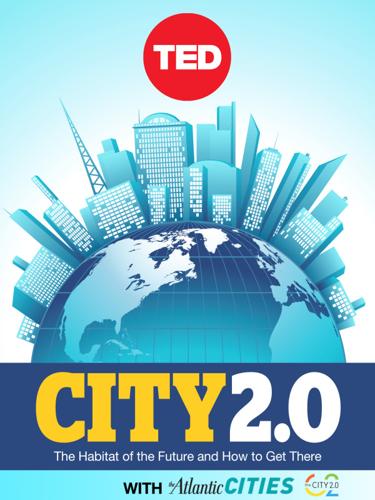
City 2.0: The Habitat of the Future and How to Get There
by
Ted Books
Published 20 Feb 2013
They’re costly to own individually, making the incentive to share them that much higher. And most cars sit unused for the majority of their lives, meaning that owners pay hefty costs to drive them only a fraction of the time. Getaround, a San Francisco-based car-sharing company, pushed the idea pioneered by companies like Zipcar even further into the realm of what would once have been considered impossible. The company, launched in mid-2011, enables individuals to share their private vehicles. Skeptics insisted that people would never share their own cars (by which they really meant, “I would never share mine.”) It turned out plenty of other people were willing to take the risk, including the owner of a Tesla Roadster.
…
These two images were accessed on the same day in December 2012, minutes apart. The use of technology is, like the autocatalytic city, built up incrementally responding directly to needs. Nowhere is the power of this process more pronounced than in transportation. While services like Uber, Waize, Zimride, and Zipcar are disrupting the established regime in the developed world, entrepreneurs in emerging markets are also using information technology and cell phones to radically reinvent transportation, improving services for users and boosting the livelihoods of drivers. Unlike most cities in the U.S., urban centers in the developing world are transit rich.
…
In return for signing up, Fazilka Ecocabs provides the cycle pullers and their families with free visits to the doctor, educational support for their children, and traffic safety training. Ecocabs and similar services are starting to roll out apps to prepare for the influx of smartphones. They could create services that will not only dwarf the customer base of Uber or Zipcar, but also improve the trifecta of environment, economics, and equity. Bottoms up This essay, of course, is partly polemical. Our understanding of cities has been shaped by our Industrial Age expectations of institutional control. As urban centers boom around the globe, however, we are hitting the limits of the machine model of cities.
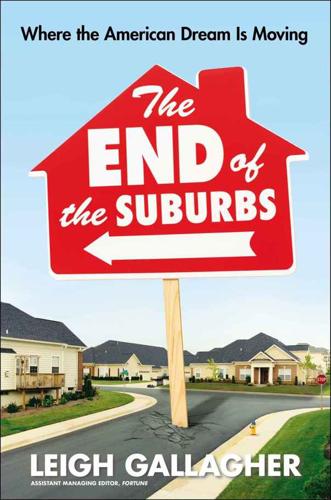
The End of the Suburbs: Where the American Dream Is Moving
by
Leigh Gallagher
Published 26 Jun 2013
Consider the success of the Prius and other hybrids, or the rise of Zipcar, the car-sharing service that saw membership grow to close to eight hundred thousand before rental car giant Avis bought it in early 2013. The company specifically markets its service as a way to reduce the number of cars on the road. “Less cars on the road mean less congestion, less pollution, less dependence on oil, and cleaner, fresher air to breathe,” its Web site says. Originally born as a service for city residents, it’s seeing more demand come from suburban markets: in early 2012, Zipcar invested in Wheelz, a peer-to-peer car-sharing service, in order to test the concept at lower densities, and it’s been expanding regular Zipcar service to suburban areas like White Plains, New York, and Montgomery County, Maryland.
…
—Sarah Susanka, author of The Not So Big House series and The Not So Big Life “Through compelling expert interviews, data, and trends analysis, Leigh affirms the notion that we’ve hit ‘peak burb.’ This book presents a strong case for America’s increasing preference for higher density lifestyles and the resulting trend to manage our lives via the information highway, not the paved kind!” —Scott W. Griffith, chairman and CEO of Zipcar “This book is a steel fist in a velvet glove. Beneath Leigh Gallagher’s smooth, elegant prose there is a methodical smashing of the suburban paradigm. When all is done, a few shards remain—but only because she is scrupulously fair. This story of rise and ruin avoids the usual storm of statistics, nor is it a tale told with apocalyptic glee—which is most amusing to me but too depressing for most people.
…
Originally born as a service for city residents, it’s seeing more demand come from suburban markets: in early 2012, Zipcar invested in Wheelz, a peer-to-peer car-sharing service, in order to test the concept at lower densities, and it’s been expanding regular Zipcar service to suburban areas like White Plains, New York, and Montgomery County, Maryland. Meanwhile, established car rental businesses like Hertz and Enterprise, and even carmakers like Ford, GM, and BMW, are getting into the car-sharing game. More and more suburban residents are experimenting with reducing their car dependency. In suburban Dallas, Rachel Meeks and her husband gave up one of their two cars a year ago and blogged about the effort. “We’ve been living in the suburbs with just one car for over a year, and I must say that it’s been 10% inconvenient and 90% awesome,” Meeks writes.
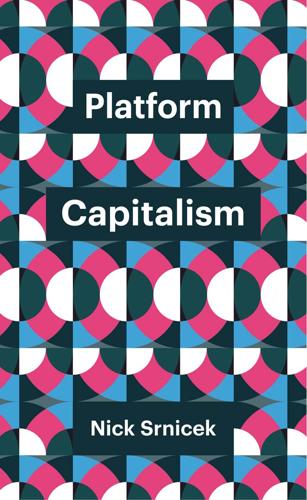
Platform Capitalism
by
Nick Srnicek
Published 22 Dec 2016
They are two closely related but distinct business models: the product platform and the lean platform. Take, for example, Uber and Zipcar – both platforms designed for consumers who wish to rent some asset for a time. While they are similar in this respect, their business models are significantly different. Zipcar owns the assets it rents out – the vehicles; Uber does not. The former is a product platform, while the latter is a lean platform that attempts to outsource nearly every possible cost. (Uber aims, however, eventually to command a fleet of self-driving cars, which would transform it into a product platform.) Zipcar, by contrast, might be considered a ‘goods as a service’ type of platform.

Vassal State
by
Angus Hanton
Published 25 Mar 2024
Life-as-a-Service: The Twin Treadmills of Subscriptions and Debt 1 ‘Trip Adler’, Quote.org [website], https://quote.org/author/trip-adler-49853. 2 For more on Benioff, see Marc Benioff and Carlye Adler, Behind the Cloud: The Untold Story of How Salesforce.com Went from Idea to Billion-Dollar Company – and Revolutionized an Industry (San Francisco: Wiley-Blackwell, 2009). 3 Marilyn Much, ‘How Salesforce’s Marc Benioff revolutionized the software industry’, Investor’s Business Daily [website] (11 February 2019), https://www.investors.com/news/management/leaders-and-success/how-salesforces-marc-benioff-revolutionized-the-software-industry/. 4 Phil Wainewright, ‘Microsoft CEO to business: your future as a SaaS provider’, Diginomica [website] (16 March 2015), https://diginomica.com/microsoft-ceo-business-future-saas-provider. 5 Erik Bullard, ‘The escalating costs buried in your Salesforce agreement’, UpperEdge [website] (26 February 2020), https://upperedge.com/salesforce/the-escalating-costs-buried-in-your-salesforce-agreement/. 6 Mario Grunitz, ‘Everything-as-a-service: a look into the subscription-based model’, WeAreBrain [website] (30 August 2022), https://wearebrain.com/blog/everything-as-a-service/. 7 Quoted in Catrin Jones, ‘Caterpillar release cloud-based system to boost performance’, Construction Briefing [website] (23 November 2022), https://www.constructionbriefing.com/news/caterpillar-release-cloud-based-system-to-boost-performance/8024919.article. 8 ‘Power by the hour (PBH)’, AJW Group [website], https://www.ajw-group.com/services/supply-chain-management/power-by-the-hour/. 9 ‘The Princess of Wales rents a gown for the Earthshot Prize ceremony in Boston’, Harper’s Bazaar (3 December 2022), https://www.harpersbazaar.com/uk/fashion/fashion-news/a42139785/kate-middleton-rents-green-dress-earthshot-prize/; Rebecca Cohen and Madison Hall, ‘AOC only paid for her Met Gala outfit and other possible “impermissible gifts” after investigators asked about it, ethics agency finds’, Business Insider [website] (2 March 2023), https://www.businessinsider.com/aoc-ethics-prove-paid-met-gala-outfit-house-report-2023-3?r=US&IR=T. 10 ‘The story of Zipcar’, Zipcar [website], https://www.zipcar.com/en-gb/about#:~:text=We’re%20on%20a%20mission,vehicles%20that%20support%20environmental%20sustainability. 11 Richard Thaler, Nudge: Improving Decisions about Health, Wealth, and Happiness (New Haven, CT: Yale University Press, 2008). 12 Daniel Kahneman, Thinking, Fast and Slow (New York: Farrar, Straus & Giroux, 2011). 13 Quoted in Tim Bradshaw, ‘Apple aims to double service revenues by 2021’, Financial Times (31 January 2017), https://www.ft.com/content/a3e00a3a-4372-3f96-b8d6-d673ac4a5d57. 14 Quoted in ‘Apple paid subscriptions top 1 billion, doubling in three years’, Pymnts [website] (2 November 2023), https://www.pymnts.com/apple/2023/apple-paid-subscriptions-top-1-billion-doubling-in-three-years/. 15 ‘Media nations UK 2023’ [PDF], Ofcom [website] (3 August 2023), https://www.ofcom.org.uk/__data/assets/pdf_file/0029/265376/media-nations-report-2023.pdf. 16 Quoted in ‘Pain of paying – everything you need to know’, InsideBE [website], https://insidebe.com/articles/pain-of-paying/. 17 Florent Geerts, ‘The jam experiment – how choice overloads makes consumers buy less’, Medium [website] (17 August 2017), https://medium.com/@FlorentGeerts/the-jam-experiment-how-choice-overloads-makes-consumers-buy-less-d610f8c37b9b. 18 Barry Schwartz, The Paradox of Choice: Why More Is Less (New York: Harper Perennial, 2004).
…
A rented dress doesn’t need storage or mothproofing, and this same pay-as-you-use model also drives car rentals. In London, Zipcar has 200,000 customers (oddly called ‘members’), who pay for the use of cars and vans by the hour, or minute. Based in Boston, Massachusetts, the company’s website announces: ‘we’re on a mission to enable simple and responsible urban living – a future filled with more car-sharing members than car owners… from the Big Apple to Big Ben.’10 Owned by the Avis Budget Group of New Jersey, Zipcar also satisfies drivers’ desire for less polluting solutions with the positive message of a ‘sharing economy’.
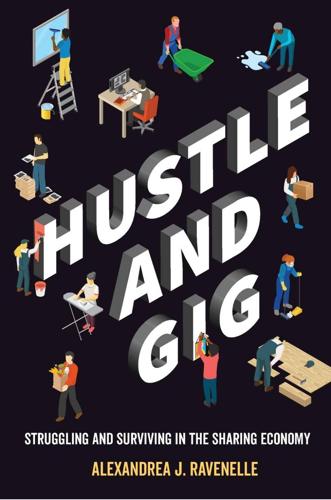
Hustle and Gig: Struggling and Surviving in the Sharing Economy
by
Alexandrea J. Ravenelle
Published 12 Mar 2019
Juliet Schor, a preeminent researcher in the field, notes that definitions of the sharing economy tend to be “pragmatic, rather than analytical: self-definition by the platforms and the press defines who is in and who is out.”2 After the Great Recession in 2009, there was increased attention on utilizing unused assets for economic gain, with particular focus on “durable goods, such as lawn mowers, tools, or expensive equipment for specialized uses.”3 These efforts, although often compared to Zipcar (the hourly car rental service, which was an early entrant in the sharing economy),4 are perhaps most similar to the tool libraries that had developed decades earlier in low-income communities. Much like the tool libraries, most of the free websites that originally comprised the sharing economy are now defunct: Snapgoods, Neighborrow, Crowd Rent, and Share Some Sugar.5 The somewhat better-known Neighborgoods lingers, but only as the pet project of an investor; among its forty-two thousand members, only ten thousand users are active.6 The technological version of the sharing economy, also described interchangeably as connected consumption, collaborative consumption, or the gig economy, is often dated back to the 1995 inventions of Craigslist by Craig Newmark and PayPal by Pierre Omidyar.7 Later contributory organizations included the free hospitality-exchange website couchsurfing.com, founded in 2003.
…
Anny Fenton, a Harvard graduate student who studied social interactions among RelayRides users, found that car owners using the site said their relationships with users were “sterile,” “anonymous,” and “nothing”; however, they felt that they had something more personal to offer and assumed that users would treat their cars better than a typical rental car.28 Research on Zipcar, a service often described as part of the sharing economy, found that users experienced the service in the same anonymous way that one experiences a hotel: “They know others have used the cars, but have no desire to interact with them.” Rather than viewing fellow Zipsters as cosharers of the cars, users were mistrustful of them and relied on the company to police the system.
…
Jessie Daniels, Karen Gregory, and Tressie McMillan Cottom, 27–46 (Bristol, UK: Policy Press/Bristol University Press, 2017); and from Alexandrea J. Ravenelle, “Sharing Economy Workers: Selling, Not Sharing,” Cambridge Journal of Regions, Economy and Society 10, no. 2 (2017): 281–95. 1. Mathews (2014). 2. Schor (2014a). 3. Schor and Fitzmaurice (2015). 4. Zipcar is now owned by Avis, which illustrates how successful platforms are co-opted by corporations. 5. Kessler (2015b). 6. Kessler (2015b). 7. Alden (2014). 8. Nadeem (2015). 9. As of April 2018, Zaarly was available only in Denver, Minneapolis, Kansas City, and northern Virginia. 10. Schor (2014a). 11.
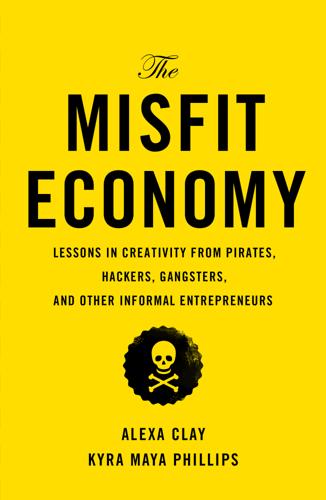
The Misfit Economy: Lessons in Creativity From Pirates, Hackers, Gangsters and Other Informal Entrepreneurs
by
Alexa Clay
and
Kyra Maya Phillips
Published 23 Jun 2015
This trend toward “collaborative consumption” is taking place worldwide. As Rachel Botsman and Roo Rogers chronicle in their book, What’s Mine Is Yours, sharing, trading, and selling idle items, time, and services is a rising trend. From Airbnb (a rental website that has gone from 120,000 listings in early 2012 to over 300,000 at the time of this writing) to Zipcar (the car-sharing service that was sold to Avis for $500 million in January 2013), people the world over are moving away from the fixed, formal “own it” model to a more fluid “exchange it” approach. The importance of the informal economy is starting to become more apparent in other European countries.
…
A similar dynamic can be observed in the commercial world, where smaller players are adopting the hacker mind-set, acting decisively to take on bigger, better-resourced, and highly established competitors; in doing so, they are disrupting industry after industry. Airbnb is disrupting the mammoth hotel industry. Spotify—and the wider wave of companies helping consumers experience music rather than own it—is forcing the music industry to change its business model. Car-lending and -sharing firms like Zipcar are inducing the automobile industry to rethink itself, suggesting a shift from selling cars to making them available without ownership. Even drug-trafficking organizations and the contemporary Mafia have started to adopt a hacker’s approach. As Moises Naim, the author and former editor of Foreign Policy, writes about the changing nature of the drug industry, “Rigid hierarchies in which authority is centralized don’t do well in a high-speed global marketplace where opportunities and risks change too fast.”18 Naim goes on to point out how drug-dealing organizations have moved from hierarchical approaches to decentralized networks.
…
G., 148 We-Think (Leadbeater), 89 What’s Mine Is Yours (Botsman and Rogers), 65 Where Good Ideas Come From (Johnson), 98 Whitby, England, 107 “white hat” hacking, 108–9 Whole Earth Catalog, 141 Whole Earth Review, 141–42 Whole Foods, 9 Wilkins, Maurice, 86 Wilmington, Ohio, 67–70 Wimdu, 83 Wired, 83, 84 Wisdom Hackers, 220 Woodroof, Ron, 8 Woolf, Arthur, 89–90 World Bank, 17 World Economic Forum, 163 World Health Organization (WHO), 129, 136 World Trade Organization (WTO), 95, 154–55 World War II, 145 WPP, 158 Wright, Helena, 21, 143 Yes Lab, 155 Yes Men, 153–55, 214 York, University of, 108 YouGov, 66 Youthstream Media Networks, 104 YouTube, 83, 152 ZICO, 184 Zimbabwe, 188 Zipcar, 65, 124 Zuckerberg, Mark, 104, 122–23 Simon & Schuster 1230 Avenue of the Americas New York, NY 10020 www.SimonandSchuster.com Copyright © 2015 by Alexa Clay and Kyra Maya Phillips All rights reserved, including the right to reproduce this book or portions thereof in any form whatsoever.
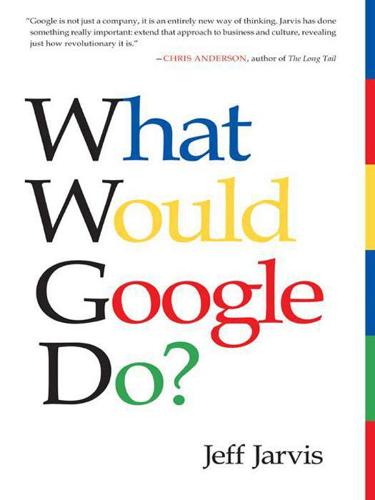
What Would Google Do?
by
Jeff Jarvis
Published 15 Feb 2009
I discussed my rationale for the open-source car platform with Fred Wilson, a venture capitalist you’ll hear from shortly, and asked him what a Googley car company would look like. He said it already exists. It’s Zipcar, which provides 5,000 cars to 200,000 drivers in various cities and campuses. Drivers join Zipcar for $50 a month, then make reservations online and pick up a car in any of a number of garages, paying $9 an hour or $65 a day in New York, including insurance, gas, and 180 miles. I can get similar rates from traditional rental companies but with less flexibility and convenience. Zipcar says each of its cars replaces 15 privately owned cars and that 40 percent of its members decide to give up owning a car.
…
See vendor relationship management Waghorn, Rick, 56 Wales, Jimmy, 60, 87 Wall Street Journal, 129 Wal-Mart, 54–55, 101 Washlet, 181 Wattenberg, Laura, 233 Weinberger, David, 3, 82, 96–97, 137, 149, 232 Westlaw, 224 widgets, 36–37 Wikia, 60 Wikileaks.org, 92–93 Wikinomics (Tapscott), 113, 151, 225 Wikipedia communities and, 50 growth of, 66 mistakes in, 92–93 open-source and, 60 speed of, 106 wikitorials, 86–87 Williams, Evan, 105–6 Williams, Raymond, 63 Wilson, Fred, 35, 176, 189–92, 225, 237 Wine.com, 158 WineLibrary.TV, 157 The Winner Stands Alone (Coelho), 142 Wired, 33 wireless access, 166 airlines and, 182–83 wireless spectrum, 166 The Wisdom of Crowds (Surowiecki), 88 The Witch of Portobello (Coelho), 142–43 WNYC, 128 Wojcicki, Anne, 205 Wolf, Maryanne, 235 World Economic Forum, 48, 113 Wyman, Bob, 211 Yahoo, 5, 36, 58 China and, 99–100 communities and, 50 Yang, Jerry, 36 Y Combinator, 193 youth, 191–94, 212 YouTube, 6, 20, 33, 37 Zappos, 161 Zara, 103–4 Zazzle, 180 Zell, Sam, 129 zero-based budgeting, 79–80 Zillow, 75, 80, 187 Zipcar, 176 Zopa, 196 Zuckerberg, Mark, 4, 48–53, 94–95 About the Author Jeff Jarvis is the proprietor of one of the Web’s most popular and respected blogs about the internet and media, Buzzmachine.com. He also writes the new media column for the Guardian in London. He was named one of 100 worldwide media leaders by the World Economic Forum at Davos in 2007 and 2008, and he was the creator and founding editor of Entertainment Weekly.

Frugal Innovation: How to Do Better With Less
by
Jaideep Prabhu Navi Radjou
Published 15 Feb 2015
The ownership of physical objects, he predicts, will be seen as an albatross around consumers’ necks, as people come to prefer access and experience to ownership.7 The sharing economy that Rifkin predicted is now upon us. An example is Zipcar (and its equivalents from around the world), a cheap pay-as-you-go car-sharing service popular among urban Americans. The service is easy to use, convenient and better for the local community and the environment. Why own a car, say its customers, when you can get wheels when you need them? Today, nearly 10 million people are less than 10 minutes’ walk from a Zipcar. Similarly, why pay $400 for a night in a New York hotel when Airbnb will find you a couch to crash on in Manhattan (or 8,000 other cities the site covers) for $40?
…
It now sells a package of services with every car. This is because any mid-level car, such as a Volvo Gold, is similar to a BMW. Thus BMW no longer asks “how do we make and sell cars?”, but “how do we engage users through our cars and services?” BMW is also asking how it can be part of innovative car-related services such as ZipCar and ParkatmyHouse and offer related financial services. Although it is important to flex a firm’s physical and service assets, it is more crucial to make greater use of a company’s most valuable assets: its staff. Frugal organisations In 1958, Bill Gore, a chemical engineer with 16 years’ experience as a research scientist at DuPont, decided to go it alone.
…
Gore & Associates 63–4 women 87, 103, 122, 140 work environment 70, 80 workforce, ageing 13, 29, 49, 153 “workspaces” 128 World Business Council for Sustainable Development 194 World Economic Forum 9, 81, 194 X Xerox Research Centre India 169 Y Yahoo! 38 Yamazaki, Tomihiro 29–30 Yatango Mobile 146 yerdle.com 85 young people 79–80, 85, 122, 139 as consumers 16, 85, 86, 122, 124, 131 as employees 14, 79–80, 124, 204 YouTube 17, 29, 108, 144, 147 Z Zara 55 Zipcar 10, 63 Zopa 10 Praise for Jugaad Innovation GAPPAA .ORG ‘Innovation is a western word. In spoken Indian languages, there is no equivalent. The act of innovating is referred to as jugaad, meaning an adaptation or practical solution. Although jugaad sometimes has mildly pejorative overtones, it is used by crores of Indian entrepreneurs to create effective solutions to pressing socioeconomic issues.
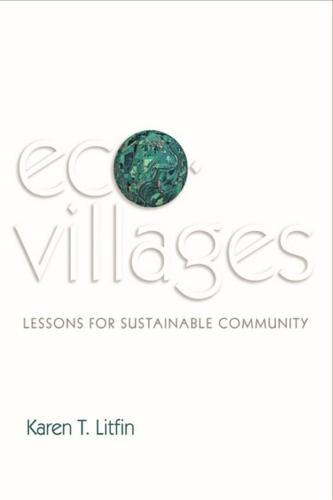
Ecovillages: Lessons for Sustainable Community
by
Karen T. Litfin
Published 16 Dec 2013
At Svanholm, the community owns a fleet of cars and a task force handles the insurance, registration, and maintenance. When a major decision, like buying a new vehicle, needs to be made, the task force brings a proposal to the community. The idea of car sharing is not new; carpooling is probably as old as the car itself. Today, companies like ZipCar are turning it into a growth industry despite – and, no doubt, partly because of – the recession. In principle, noncommercial car sharing could flourish in existing neighborhoods, but it would require two preconditions: first, a commitment to economic and ecological efficiency over convenience; and, second, strong relationships based upon trust and accountability.
…
Much like asking a neighbor for a cup of sugar, which I suspect was a more common practice when I was growing up than it is today, sharing things can help to forge those social relationships – relationships we may count on in the future if the predictions of climate change and energy descent come to pass. And, in the meantime, does each of us really need a vacuum cleaner, a tent, a big-screen TV, a lawn mower, a fancy food processor, and a garage full of tools? The idea is catching on. Sharing and shared ownership networks like GoLoco, NeighborGoods, ZipCar, and CitiBikes are cropping up all over.12 The basic principle is simple: use social networks, especially via cell phones and the internet, to reduce consumption. But I can also envision low-tech forms of collaborative consumption. The transformational neighborhood map comes to mind. If my neighbors and I wanted to green our lives while building a sense of community, our skill-set map might also include whatever we would be willing to share.
…
With respect to production, this means cradle-to-cradle manufacturing, the end of excessive packaging, and a rigorous adherence to the triple bottom line (economic, ecological, and social). Companies like Patagonia offer an environmentally conscious manufacturing model. With respect to consumption, the future is in sharing, or collaborative consumption, through businesses like ZipCar and second-use stores. With respect to ownership and decision-making, the wave of the future lies in cooperatives and decentralized leadership through team-based organization. Much has been written elsewhere about the ecology of commerce; there are many models.10 Among light-green practices, we find businesses like Bayer Corporation that are far from sustainable and yet adopt policies that surpass legal requirements.
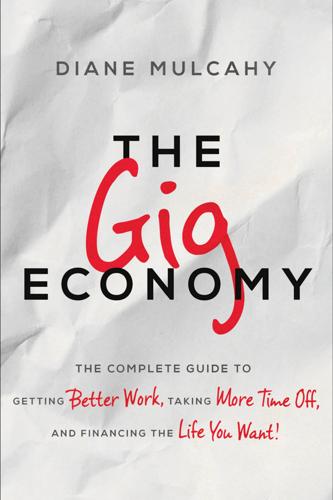
The Gig Economy: The Complete Guide to Getting Better Work, Taking More Time Off, and Financing the Life You Want
by
Diane Mulcahy
Published 8 Nov 2016
Renting an item gives much greater flexibility and access while providing a sense of freedom from the clutter and headaches of ownership. Ownership isn’t dead and it isn’t likely to completely die, but it can be deferred or discretionary in a way that’s unprecedented historically. The Gig Economy gives us options to rent or access cars (Zipcar, Uber), bikes (Hubway, Citi Bike), fully furnished apartments and homes (Airbnb, Onefinestay), clothes (Rent the Runway, Le Tote), jewelry (Haute Vault), and just about anything else. With the ability to access so much so easily, we need to come up with pretty compelling reasons to buy. There’s even a lifestyle emerging built on the foundation of the access economy.
…
What can I do to become a better saver for my retirement? How can I use all the rules and tools in this book to help me craft my own customized version of retirement? THE FUTURE GIG ECONOMY My father had one job in his lifetime, I will have six jobs in my lifetime, and my children will have six jobs at the same time. —ROBIN CHASE, FOUNDER OF ZIPCAR Our perceptions about work are formed at a very young age. From the time we’re kids, adults ask us what we want to be when we grow up, and the answers reflect what we see around us—employees in full-time jobs. We answer that we want to be teachers or doctors or firefighters. I haven’t yet heard a kid say that she wants to be a consultant, or a freelancer, or a contractor.
…
The Joint Center for Housing Studies, “America’s Rental Housing: Expanding Options for Diverse and Growing Demand,” December 9, 2015. jchs.harvard.edu/americas-rental-housing 11. Rent vs. buy a home: www.nytimes.com/interactive/2014/upshot/buy-rent-calculator.html, www.zillow.com/rent-vs-buy-calculator/ See also, Rent vs. buy a car: www.zipcar.com/is-it#savingsversusownership. 12. Roberts, David, “Our Year of Living Airbnb,” The New York Times, November 25, 2015. www.nytimes.com/2015/11/29/realestate/our-year-of-living-airbnb.html 13. Pew Research Center, February 2014, “The Rising Cost of Not Going to College,” www.pewsocialtrends.org/files/2014/02/SDT-higher-ed-FINAL-02-11-2014.pdf See also, Hershbein, Brad, and Melissa Kearney, “Major Decisions: What Graduates Earn over Their Lifetimes,” The Hamilton Project, September 29, 2104. www.hamiltonproject.org/assets/legacy/files/downloads_and_links/Major_Decisions_Lifetime_Earnings_by_Major.pdf See also, U.S.
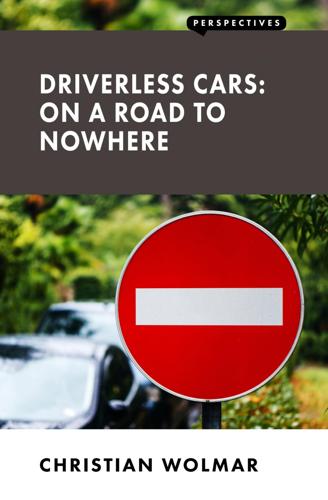
Driverless Cars: On a Road to Nowhere
by
Christian Wolmar
Published 18 Jan 2018
But this has to be put into context: global figures for car sales are still rising, in line with economic growth, and the shared-use concept has therefore only been adopted by a small urban-living minority. The idea that people will readily opt for communal vehicles is also questionable. Car clubs such as Zipcar have had some success. London has around 200,000 car-club members, who have access to 3,000 vehicles, according 48 The triple revolution to the annual survey of car-club use; there are 25,000 fewer independently owned vehicles on London’s streets as a result. But this shows that it remains a minority interest. Zipcar reckons this figure could be tripled by the end of the decade, but its general manager in the United Kingdom, Jonathan Hampson, cautions against assuming that we will all be driving communal cars one day: Car clubs, though, are not for everyone and there are many people who still aspire to car ownership, even Millennials.

Blockchain Revolution: How the Technology Behind Bitcoin Is Changing Money, Business, and the World
by
Don Tapscott
and
Alex Tapscott
Published 9 May 2016
Toni Lane Casserly, CEO, CoinTelegraph Christian Catalini, Assistant Professor, MIT Sloan School of Management Ann Cavoukian, Executive Director, Privacy and Big Data Institute, Ryerson University Vint Cerf, Co-creator of the Internet and Chief Internet Evangelist, Google Ben Chan, Senior Software Engineer, BitGo Robin Chase, Cofounder and Former CEO, Zipcar Fadi Chehadi, CEO, ICANN Constance Choi, Principal, Seven Advisory John H. Clippinger, CEO, ID3, Research Scientist, MIT Media Lab Bram Cohen, Creator, BitTorrent Amy Cortese, Journalist, Founder, Locavest J-F Courville, Chief Operating Officer, RBC Wealth Management Patrick Deegan, CTO, Personal BlackBox Primavera De Filippi, Permanent Researcher, CNRS and Faculty Associate at the Berkman Center for Internet and Society at Harvard Law School Hernando de Soto, President, Institute for Liberty and Democracy Peronet Despeignes, Special Ops, Augur Jacob Dienelt, Blockchain Architect and CFO, itBit and Factom Joel Dietz, Swarm Corp Helen Disney, (formerly) Bitcoin Foundation Adam Draper, CEO and Founder, Boost VC Timothy Cook Draper, Venture Capitalist; Founder, Draper Fisher Jurvetson Andrew Dudley, Founder and CEO, Earth Observation Joshua Fairfield, Professor of Law, Washington and Lee University Grant Fondo, Partner, Securities Litigation and White Collar Defense Group, Privacy and Data Security Practice, Goodwin Procter LLP Brian Forde, Former Senior Adviser, The White House; Director, Digital Currency, MIT Media Lab Mike Gault, CEO, Guardtime George Gilder, Founder and Partner, Gilder Technology Fund Geoff Gordon, CEO, Vogogo Vinay Gupta, Release Coordinator, Ethereum James Hazard, Founder, Common Accord Imogen Heap, Grammy-Winning Musician and Songwriter Mike Hearn, Former Google Engineer, Vinumeris/Lighthouse Austin Hill, Cofounder and Chief Instigator, Blockstream Toomas Hendrik Ilves, President of Estonia Joichi Ito, Director, MIT Media Lab Eric Jennings, Cofounder and CEO, Filament Izabella Kaminska, Financial Reporter, Financial Times Paul Kemp-Robertson, Cofounder and Editorial Director, Contagious Communications Andrew Keys, Consensus Systems Joyce Kim, Executive Director, Stellar Development Foundation Peter Kirby, CEO and Cofounder, Factom Joey Krug, Core Developer, Augur Haluk Kulin, CEO, Personal BlackBox Chris Larsen, CEO, Ripple Labs Benjamin Lawsky, Former Superintendent of Financial Services for the State of New York; CEO, The Lawsky Group Charlie Lee, Creator, CTO; Former Engineering Manager, Litecoin Matthew Leibowitz, Partner, Plaza Ventures Vinny Lingham, CEO, Gyft Juan Llanos, EVP of Strategic Partnerships and Chief Transparency Officer, Bitreserve.org Joseph Lubin, CEO, Consensus Systems Adam Ludwin, Founder, Chain.com Christian Lundkvist, Balanc3 David McKay, President and Chief Executive Officer, RBC Janna McManus, Global PR Director, BitFury Mickey McManus, Maya Institute Jesse McWaters, Financial Innovation Specialist, World Economic Forum Blythe Masters, CEO, Digital Asset Holdings Alistair Mitchell, Managing Partner, Generation Ventures Carlos Moreira, Founder, Chairman, and CEO, WISeKey Tom Mornini, Founder and Customer Advocate, Subledger Ethan Nadelmann, Executive Director, Drug Policy Alliance Adam Nanjee, Head of Fintech Cluster, MaRS Daniel Neis, CEO and Cofounder, KOINA Kelly Olson, New Business Initiative, Intel Steve Omohundro, President, Self-Aware Systems Jim Orlando, Managing Director, OMERS Ventures Lawrence Orsini, Cofounder and Principal, LO3 Energy Paul Pacifico, CEO, Featured Artists Coalition Jose Pagliery, Staff Reporter, CNNMoney Stephen Pair, Cofounder and CEO, BitPay Inc.
…
They aggregate the willingness of suppliers to sell their excess capacity (cars, equipment, vacant rooms, handyman skills) through a centralized platform and then resell them, all while collecting valuable data for further commercial exploitation. Companies like Uber have cracked the code for large-scale service aggregation and distribution. Airbnb competes with hotels on travel accommodations; Lyft and Uber challenge taxi and limousine companies; Zipcar, before it was purchased by Avis, challenged traditional car rental companies with its hip convenience and convenient hourly rentals. Many of these companies have globalized the merchandising of traditional local, small-scale services—like bed-and-breakfasts, taxis, and handypersons. They use digital technologies to tap into so-called underutilized, time-based resources like real estate (apartment bedrooms), vehicles (between-call taxis), and people (retirees and capable people who can’t get full-time jobs).
…
With open platforms, a company offers partners a broader venue for staging new businesses or simply adding value to the platform. Now with blockchain technology companies can quickly create platforms and partner with others to create platforms or utilities for an entire industry. Robin Chase founded Zipcar (a service aggregator) as well as Buzzcar (users can share their cars with others), and is now the author of Peers Inc., a lucid book on the power of peers working together. She told us, “Leveraging the value found in excess capacity depends on high-quality platforms for participation. These platforms don’t come cheap.
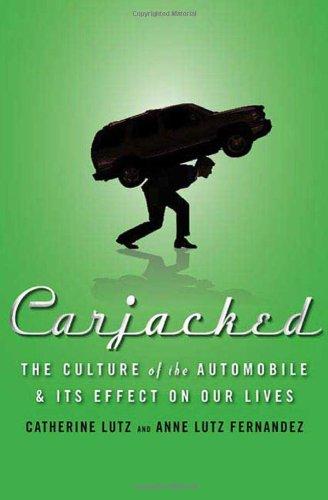
Carjacked: The Culture of the Automobile and Its Effect on Our Lives
by
Catherine Lutz
and
Anne Lutz Fernandez
Published 5 Jan 2010
Many communities sponsor services that match up interested carpool partners, like a dating service for commuters. If the car sold was only used occasionally, then take public transportation or rent a car from a traditional firm such as Hertz or Dollar or from a new hourly rental firm like Zipcar when one is needed. At $8 an hour or $60 a day, including insurance, gas, and parking, you could use Zipcar one out of every four days and still come out well ahead of owning. In mild climates, a bike or electric scooter could serve most of the functions of an extra car, particularly for a teenager who has been using the car to go short distances. Donate your second or third car.
…
Calculate your savings and consider how these savings could be put toward advanced safety features in your next car. Use a car-sharing system. Car-sharing companies have grown exponentially in the last few years, primarily in urban areas where they allow people to avoid the headache of car ownership. An industry launched in 1998 in Boston by Zipcar, there are now more than 15 car-sharing organizations in over 66 cities. These companies make it incredibly easy to get a car, even on a moment’s notice. After you’ve registered online, you can make a reservation, a minute or a year in advance, walk to the car you reserved (often at a nearby parking lot), access it with your member’s electronic card, and drive off.
…
See carpooling road construction, 5–6, 93–6, 127–9, 152, 225 road rage, 151–8 Roche, James M., 121 Rockefeller, Nelson, 9 Rolls-Royce Phantom, 75 Romney, Mitt, 9 Roosevelt, Franklin, 96 rush hour, 130–3, 156, 220, 223 Ryder, Winona, 7 Saab, 62–3 safe driving habits, 221–2 Saturn, 16, 85 Schultz, Howard, 138 Scion, 27 seat belts, 18, 116, 184, 193–7, 203, 221, 228 Selditz, Larry, 197–8 self-expression, 26–30, 53–57, 60, 78 self-reliance, 15, 27 Sloan, Alfred P. 64 Slocum, Tyson, 122 Speed (cable TV channel), 6 speed limits, 18, 153, 180, 193, 196, 221 speeding, ix, xi, 18–9, 23, 31, 196, 221 Speizer, Frank, 168 spinal cord injuries, 183–4, 187, 243n12 sport utility vehicles (SUVs): categorized as trucks, 199 crossovers and, 57 ESC in, 216 hybrid, 66, 88–9 introduction of, 62 marketing of, 199 reasons for buying, 72–3, 164 renting, 73, 142 safety and, xii, 120, 177–81, 194 sales, 3, 5, 73 sprawl, suburban, 80–1, 101, 125, 127–33, 145–6, 150, 159, 225 Stahl, Leslie, 207 Standard Oil, 10 Starbucks effect, 137–40 Stark, Ellen, 86, 98–9 253 Stevens, Ted, 95 sticker price, 65–8, 71, 75, 214–5 Stiglitz, Joseph E., 96 stimulus spending, 10, 95, 208 Stone, Judy, 188 Stone, Oliver, 123 Straith, Clair, 195 Students Against Destructive Decisions (SADD), 193, 198 Subaru, 16, 50–1, 57 Suckow, Fred, 43–6 Superbad (film), 18 talk radio, 149–51 tax credits, 235n34 technology: alternative fuels, 36, 89, 226 Americans’ faith in, 34–37 in-car technologies, 74–5, 147–9, 156 See also electric cars teenagers: car crashes and, 23, 52, 136, 181–3, 189, 197–8 cars purchased for, 3, 72 delayed driving for, 219 freedom and, 19–21 marketing to, 2, 51–4, 59 product placing and, 51–3 public transportation and, 137 trips taken by, 82–3, 139 telecommuting, 157, 219–20 Thelma and Louise, 22 Tillerson, Rex, 120 Toronto, Canada, 126 toxins, car-related, 169–71 Toyota, 16, 30, 40, 43–4, 51, 54, 57, 59, 65–9, 73, 88, 141, 157, 178, 206, 215 trade-ins, 70, 78, 86, 212–3 traffic: congestion, 6, 21, 36, 90, 92–5, 98, 127–135, 137–8, 142–148 court, 106 reduction strategies, 133–4, 152 regulation, 17–21, 112–114, Transformers (film), 7 transportation costs by income, 236n6 TREAD Act, 196 Truckers and Citizens United, 121 Turner, Terence, 30 Twitchell, James, 52 United Auto Workers (UAW), 9, 121 Used cars, 5, 8, 37, 72, 85, 99, 106–11, 119, 213–214 254 Carjacked Veblen, Thorstein, 57–8 volatile organic compounds (VOCs), 167, 169 Volkswagen, 22, 27–8, 45, 47–8, 53, 62, 77, 82, 148 Volvo, 27, 54, 74, 137, 166, 190 Wagoner, Rick, 120–1 Wahl, Wendy, 41–3, 57–8 walkable neighborhoods, 133, 165, 223, 225 Wall Street (film), 123 Wal-Mart, 8, 102–3, 110, 141 Waterworld (film), 34 Whitman, Walt, 15 Wild West, 16–7 Wilkinson, Tom, 87 Zenn, 215 Zipcar, 211–2

How to Own the World: A Plain English Guide to Thinking Globally and Investing Wisely
by
Andrew Craig
Published 6 Sep 2015
An example of this would be the emergence of companies that facilitate fractional car usage. Many readers will be familiar with Zipcar, which uses clever IT so that you can pick up a car, use it for a few hours and pay only for that time. Today, Zipcar operates in over fifty cities in the UK, the US and Canada, and has expanded into Europe. Zipcar estimates that each of their vehicles takes at least twenty personally owned vehicles off the road, and the research group Laffer Associates estimates that car sharing could halve the sale of cars in the US by 2020. As the Zipcar model is replicated across an increasingly urbanised world, growth in such companies will contribute to increasing GDP numbers and benefitting the environment at the same time.

Radical Markets: Uprooting Capitalism and Democracy for a Just Society
by
Eric Posner
and
E. Weyl
Published 14 May 2018
The tradition of car-loving in countries like the United States and Germany has been eroding as fewer people develop mechanical skills and car companies now manufacture automobiles so that they can be repaired only by professionals. Thus, the process by which an owner develops an attachment to an object by incorporating her labor into it has been undermined. People have also quickly made the transition to services like Zipcar and Uber. Now, rather than own a car, one either rents it (Zipcar) or rents a ride (Uber). RelayRides enables the owner of a car to rent it while he is not using it, almost as if the COST were already in place. One cannot develop an attachment to a car that one uses for a few hours, and no one seems the worse for this. Fetishistic attachment to a privately owned automobile—an extremely expensive durable asset, which even enthusiasts seldom drive for more than an hour or two per day—is, thankfully, becoming a thing of the past.
…
Renting carries with it the risk that you will be evicted if you miss a number of rental payments or cannot afford your rent after it has been increased by the landlord. People “self-assess” valuations in difficult circumstances whenever they buy insurance and are required, even if only implicitly, to decide how much money they would need if their house or car is destroyed. The sharing economy—exemplified by Zipcar, Uber, and Airbnb—is helping to accustom us to temporary “possessing” rather than “owning,” and simultaneously consuming and selling (and hence setting a price on) the same product. However, a COST would change life radically, which is why it should be tested in limited public and commercial markets before being applied more broadly.
…
(Lanier), 208 Wilmers, Nathan, 201 Wilson, Robert, 50 Wilson, Woodrow, 176 women, 14–15, 19, 21, 24, 96, 116, 117, 127, 154, 162–63, 209, 252, 313n4 Workers International, 45 World Bank, 138, 140, 182 World Trade Organization (WTO), 15, 138, 267 World War I era, 45, 134, 137, 247, 277 World War II era, 9, 12, 20, 23, 25, 45–46, 137, 247, 255, 288 World Wide Web, 210 xenophobia, 3, 166 Yelp, 63, 117 YouTube, 207, 212, 221, 234 Zeckhauser, Richard, 100 Zhang, Anthony Lee, 54, 69 Zhang, Jingjing, 304n34 Zingales, Luigi, 203 Zipcar, 70, 77 zoning, 156, 276 A NOTE ON THE TYPE This book has been composed in Adobe Text and Gotham. Adobe Text, designed by Robert Slimbach for Adobe, bridges the gap between fifteenth- and sixteenth-century calligraphic and eighteenth-century Modern styles. Gotham, inspired by New York street signs, was designed by Tobias Frere-Jones for Hoefler & Co.
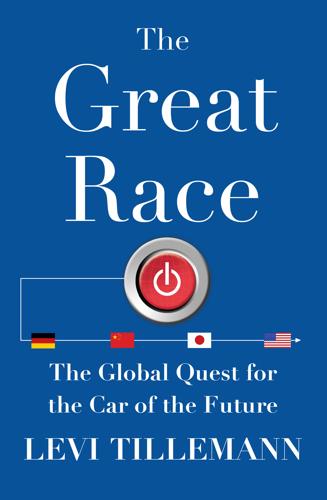
The Great Race: The Global Quest for the Car of the Future
by
Levi Tillemann
Published 20 Jan 2015
Over the coming decades we are likely to see a dramatic increase in the utilization of so-called car sharing arrangements. New business models like Zipcar or Car2Go are allowing consumers most of the perks of automotive ownership with dramatically reduced overhead, risk, and hassle. Both of the aforementioned services strategically park their vehicles in high-density residential neighborhoods and operate off automated radio frequency identification–based (RFID) rental and entry systems. In the case of Zipcar, members can use their computer or smartphone to reserve a car for an hour or a day according to their needs. When a customer is done, he or she simply returns the car to its designated spot for the next user.
…
In that context, it is much easier to imagine companies and people willing to embrace higher capital costs in exchange for lower operating costs in the form of energy savings and extended life span. These new models of vehicle ownership may accelerate the day when our cars are no longer made of steel, but of advanced composites. It is even conceivable that car services like Zipcar and Car2Go—which provide a service rather than a product—could become leading profit centers for auto manufacturers. Why Drive, When You Can Surf? Another trend that promises to change the character of the car of the future is an overall decline in driver’s license registrations among Americans.
…
(documentary), 90 Willson, Quentin, 89–90 Willys-Overland, 23 Wilson, Charlie E., 39 Wilson, Howard, 68, 69, 71 wind power, 259 Woolsey, James, 91 World Bank, 214 World Expo (Shanghai, 2010), 15–16, 17–18, 20, 21, 207, 208, 225, 251, 253, 255 World Trade Organization (WTO), 97, 211 World War I, 23, 24, 45 World War II, 2, 19, 23, 48–49, 119 Xiao Chengwei, 235, 236 Xu Guanhua, 101, 102 Yamaha, 128 Yang Jiachi, 113 Yang Liwei, 114, 206 Yoshida, Hiroaki, 123, 128, 129, 130, 134 Yoshida, Masao, 188, 191–92 Yoshida, Phyllis Genther, 169 ZEV (Zero emission vehicle) CARB mandate and, 30, 38–39, 65, 67, 72–81, 84–88, 90, 92–93, 95, 107–9, 110, 124, 128, 141–45, 172, 238, 244–46, 252 Chinese auto industry and, 107 credits for, 74, 88, 246 Honda’s work on, 86–87 Huang-Sperling meeting about, 252 Japanese auto industry and, 107, 128 and U.S. role in Great Race, 237 Zhou Enlai, 96 Zipcar, 263, 265 ZIS 150 (USSR), 96 PHOTO CREDITS 1. US Library of Congress. Ford First and Ten Millionth, 1924. http://www.loc.gov/pictures/item/det1994022920/PP/. 2. G. T. Sun Co. The devastated urban district immediately following the earthquake disaster, 1923. http://www.loc.gov/pictures/collection/pan/item/2007664607/. 3.
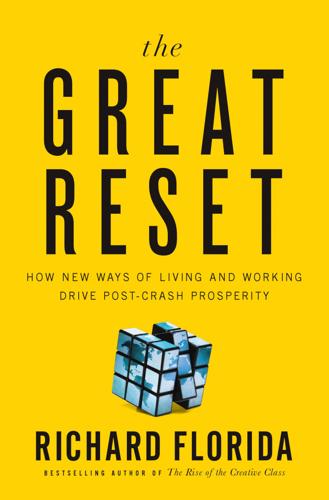
The Great Reset: How the Post-Crash Economy Will Change the Way We Live and Work
by
Richard Florida
Published 22 Apr 2010
After more than a century in which an automobile represented the American dream, car enthusiasm may no longer be a part of Americans’ DNA.”4 Car culture no longer exerts the powerful pull it once did. More and more families are deciding to share cars, and young people are putting off buying them and using public transit, bikes, their feet, or Zipcars or other auto-share services instead. It’s not just that oil and gas have become expensive, it’s that traffic and gridlock have become a deadweight time cost on us and our economy. One constant in the history of capitalism is the ever-more-intensive use of land, as mercantile towns replaced agricultural villages, major industrial cities replaced those towns, and massive complexes of suburbs, exurbs, and edge cites expanded the boundaries of those cities.
…
They don’t view the car the way their parents did, and they don’t have the money that their parents did.”18 Whether it’s because they don’t want them, can’t afford them, or see them as a symbol of waste and environmental abuse, more and more people are ditching their cars and taking public transit or moving to more walkable neighborhoods where they can get by without them or by occasionally using a rental car or Zipcar. Cars are one thing, but many of the appliances that fill our homes also no longer hold the appeal or status they once did. After the crisis, 14 percent fewer people said a dishwasher was a necessity compared to before the recession, according to the Pew Survey; 16 percent fewer people said air conditioners, 17 percent fewer said clothes dryers, and 21 percent fewer said microwaves.
…
It makes tremendous sense to rid ourselves of overly burdensome possessions—huge mortgages or car payments, money-pit houses filled with oversize appliances—if we want to gain the mobility and flexibility required in this Reset. The traditional notion of ownership itself may well be outmoded. Ironically, the once-vaunted ownership society appears to be giving way to a new form of rentership society. Car purchases which long ago gave way to car leases are now being replaced by access to Zipcars. More and more people are choosing to rent their homes, and growing numbers of homeowners are shifting to rentals. The promise of the current Reset is the opportunity for a life made better not by ownership of real estate, appliances, cars, and all manner of material goods, but by greater flexibility and lower levels of debt, more time with family and friends, greater promise of personal development, and access to more and better experiences.

Shadow Work: The Unpaid, Unseen Jobs That Fill Your Day
by
Craig Lambert
Published 30 Apr 2015
Robotic check-in and checkout also shrink the jobs of rental-car agents. Shadow work comes clearly into play with Zipcar, the worldwide car-sharing company that parks its autos in designated spaces in cities, neighborhoods, and airports. For a monthly fee, members can rent cars by the hour or day. A membership card unlocks the vehicle, and after use, the driver returns it to the same parking space. It’s an economical alternative to auto ownership. Part of its efficiency, relative to a car rental company like Hertz, is that Zipcar has no staff on-site. Shadow-working Zipcar customers and digital technology perform the tasks that rental agents do elsewhere.
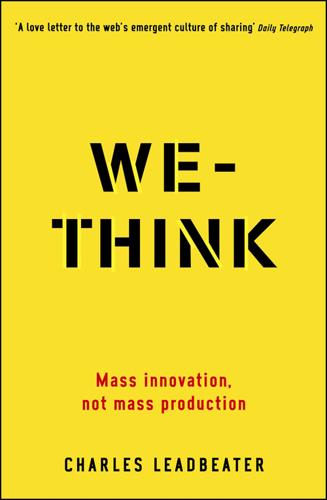
We-Think: Mass Innovation, Not Mass Production
by
Charles Leadbeater
Published 9 Dec 2010
In some cities in the UK, citizens can add information to online maps to alert councils to dumped cars and rubbish that needs collecting. A US scheme, Zipcar, gives people a share in ownership of pools of cars in cities across the country, allowing them to get access to a car just when they need it rather than have it sitting in the garage most of the year. Another scheme, GoLoco, aims to use the power of social networking to revive the flagging culture of sharing cars for commuting. At the moment we have just either very public forms of mass transit – buses and trains – or private cars and cycles. Zipcar and GoLoco’s approach, allowing people to make flexible use of shared transport resources, will become more attractive as more US cities introduce congestion charges to reduce car usage.
…
Gore and Associates 112 Woolf, Arthur 55 work 108–15 collaborative approaches to 109 division of labour 111 fragmented careers 89 loyalty and trust 110 motivate, co-ordinate and innovate 109, 110–11 offices 112–13 open and participative ways of working 114 and open-source copmmunities 109 relationships 110 satisfying 114–15 self-management 89 self-scheduling 112 worker co-operatives 90 Workers’ Party (Brazil) 201 World Health Organization 157, 200 World of Warcraft 5, 87, 98–100, 117, 227 Worm Breeder’s Gazette 63, 65, 77 worm project (C. elegans) 62–5, 68, 69, 70, 77, 87, 118 worms 3 Wright, Will 105–6, 149, 228 Wurth, Charles 95 www.toostupidtobepresident.com 183 Y Yahoo 97, 190 Yemen 189 YouTube xiii, 2, 3, 34, 45, 46, 56, 57, 85, 86, 171, 176, 182, 183, 218 Yunnus, Muhammad 205 Z Zhejiang, China 136 Zipcar scheme 153 Zittrain, Jonathan 234 Zuckerman, Mark 35

The Autonomous Revolution: Reclaiming the Future We’ve Sold to Machines
by
William Davidow
and
Michael Malone
Published 18 Feb 2020
Privately owned automobiles spend as much as 95 percent of their time parked.42 That means the average car is driven approximately nine hours a week. A number of sharing services have emerged with a goal of monetizing those idle hours. Uber and Lyft are already household names. The twentieth-century relic Zipcar is now owned by Avis.43 New aspirants keep emerging. Getaround allows neighbors to rent cars from other neighbors by the hour, while a competing service, Turo, focuses on longer-term rentals.44 Turo’s website claims that owners can cover their monthly car payments by renting their cars for as few as nine days a month.
…
That’s not surprising: cab fares in Los Angeles are $2.70 per mile, while Uber charges about $1.00.21 The oversupply of Uber drivers drives down the price of the service and the value of the work done by drivers. There are other economic impacts as well. Some consumers are discovering that using Uber and occasionally renting a Zipcar or Car2Go is so convenient and cost-efficient that they can get rid of their own cars altogether and just ride and rent. From the protests of cab drivers, you would think the sky had fallen. Yet in comparison to what is about to come, the economic impacts of all of this have been relatively small.
…
Arun Sundararajan, The Sharing Economy (Cambridge, Mass.: The MIT Press, 2016), 27. 42. Paul Barter, “‘Cars Are Parked 95% of the Time.’ Let’s Check!,” Reinventing Parking, February 22, 2013, http://www.reinventingparking.org/2013/02/cars-are-parked-95-of-time-lets-check.html (accessed June 27, 2019). 43. Brian Patrick Eha, “Zipcar Timeline: From Business Idea to IPO to $500 Million Buyout,” Entrepreneur, January 2, 2013, https://www.entrepreneur.com/article/225399 (accessed June 27, 2019). 44. Yuan Xia, “What Are the Main Differences Between Getaround and Turo (fka RelayRides)?,” Quora, November 2016, https://www.quora.com/What-are-the-main-differences-between-Getaround-and-Turo-fka-RelayRides (accessed June 27, 2019). 45.
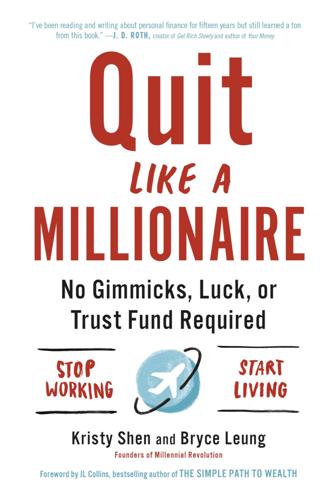
Quit Like a Millionaire: No Gimmicks, Luck, or Trust Fund Required
by
Kristy Shen
and
Bryce Leung
Published 8 Jul 2019
You reserve a car for a certain time slot, go to a predesignated lot near your house, grab the keys, and you’ve got yourself a ride! This gives you access to a car to haul groceries without the cost of buying it, maintaining it, filling it with gas, and insuring it. The one we used while we were working saved us $8,000 a year because our costs averaged only $40 a month. Zipcar is the biggest car-sharing service in North America, but there are dozens popping up all over the place. Life Insurance Life insurance is another expense people get confused about. I don’t blame them. Term life, whole life, universal life—there are so many policy types and complicated riders it makes you want to jump off a cliff.
…
And here’s the math to prove it: Say you have a married couple, earning the combined US median family income of $62,175 per year.1 Using an average tax rate of 15.2 percent,2 after taxes they net $52,724.40. By optimizing their spending—living in a small space or moving to a less expensive city, cooking at home, using car-sharing services like Zipcar—they manage to live on $40,000 per year, which is how much we lived on in expensive Toronto and how much my friend and early retiree Justin McCurry currently lives on with three kids in Raleigh, North Carolina. That means they can put $12,724.40 per year into their portfolio. This gives them a 24 percent after-tax savings rate, and according to the 4 Percent Rule, it means they’ll need $40,000 × 25 = $1,000,000 to become financially independent.
…
See becoming wealthy We Are Worldschoolers (Facebook group), 240 We Need Diverse Books, 254 Wenxiang, 7 Western Europe, 191, 191, 193, 201 what-ifs, not wasting time on, 59 WhereWeBe.com, 259 whole life insurance, 223, 225 withdrawals from tax-deferred accounts, 123, 124, 124, 125, 126, 126–27, 130, 131, 134, 144–48, 145–48 World Nomads, 198 world schooling, 233, 240–46, 246 World Wars I and II, the effect on markets, 107, 115 “wrapped” mutual funds, 91 writing, a passion for, 14, 213, 252, 252–54, 274 Yield Shield. See Cash Cushion and Yield Shield Your Money or Your Life (Robin), 63 Yousafzai, Malala, 24 YouTube, 62 zero, impossible for indexes to crash to this level, 93–94, 99, 117 Zipcar, 223, 256 Zuckerberg, Mark, 270 ABCDEFGHIJKLMNOPQRSTUVWXYZ ABOUT THE AUTHORS Kristy Shen and Bryce Leung are world travelling early retirees. Their story has been featured in media outlets all over the world, including the New York Times, CBC, CNBC, Women's Health Magazine Australia, Germany's Handelsblatt, GQ Russia, and the UK's Independent.
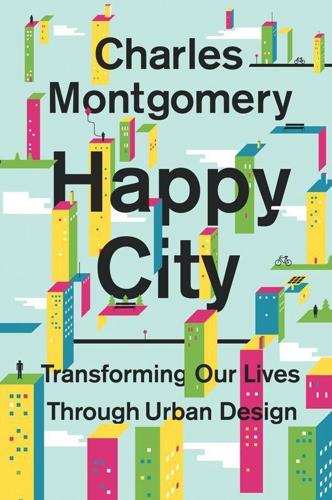
Happy City: Transforming Our Lives Through Urban Design
by
Charles Montgomery
Published 12 Nov 2013
In more typical car-share systems, such as Zipcar, whose fleet of nine thousand vehicles is spread among cities in the United States, Canada, and the United Kingdom, you book a car by phone or online, pick it up from its designated parking spot, and return it when done. But even Autolib’ and Zipcar feel clumsy compared with the versatility of what we might call smart sharing. For example, Daimler, the German car company, has scattered hundreds of Smart cars around dozens of cities, including, in 2011, Vancouver. Daimler’s CAR2GO concept is deliciously simple. Like Zipcar, you find a car using the Internet or an iPhone or Android application.
…
Like Zipcar, you find a car using the Internet or an iPhone or Android application. Like Zipcar, you unlock it with the swipe of a magnetic card over a reader on the windshield. But then you can drive that car wherever you want to go within the service area for as long as you like, and when you arrive at your destination, you just leave it there. The system tracks cars with GPS, so you don’t need to return it for the next user to find it. No planning required. The thirty-five cents per minute charge covers taxes, insurance, mileage, and even fuel. The CAR2GO system accommodates the unpredictability and spontaneity of daily life. It has taken Daimler one step toward Britton’s new mobility: the cars leave the factory ready for sharing.

Masters of Management: How the Business Gurus and Their Ideas Have Changed the World—for Better and for Worse
by
Adrian Wooldridge
Published 29 Nov 2011
Some of today’s most interesting companies are radically redefining the relationship between producers and consumers—and in the process redefining the borders of the corporation. Zipcar and Netflix are harnessing a combination of new technology and the zeitgeist (“Sharing is clean, crisp, urbane, postmodern,” says the New York Times’s Mark Levine. “Owning is dull, selfish, timid, backward.”) to pioneer a new model of collaborative consumption.13 Zipcar made $130 million in profits in 2009, a year in which car sales fell by 40 percent, and Netflix made $359.6 million. Bag Borrow or Steal allows you to rent a glamorous purse.
…
Others operate in a barter or even a communist economy. ThredUP specializes in exchanging children’s clothes. There are versions of thredUP for everything from makeup to video games. Freecycle helps people give things away. The website has 5.7 million members around the world and processes 12,000 items a day. The moguls who run Zipcar clearly have different motives from the crypto-communists who run Freecycle, but both are driven by the same two insights: that access is increasingly trumping ownership, and that a company is more a network of renewable relationships than a mighty engine churning out stuff. “Collaborative production” takes these insights even further, and turn Sloan on his head.
…
Grace, 66, 240 Wurtburgers, 326 Xerox, 248 X-factor, 162, 305 XING, 359 Yahoo!, 206, 279, 362 Yale School of Management, 61 Yang, Jerry, 358 Yew, Lee Kuan, 372 Yi, Wu, 183 Yingkui, Liu, 185 Yip, George, 59 Young, Michael, 129, 386, 387 YouTube, 184 Yozma, 180 Yum! Brands, 215–216 Yunus, Muhammad, 67, 189 Zain, 222 Zappos, 108, 353 Zients, Jeffrey, 315 Zipcar, 155–156 Zipperman, Zack, 137 Zook, Chris, 64 ZTE, 228 Zuckerberg, Mark, 174 Acknowledgments I am most grateful to Scott Moyers, formerly of the Wylie Agency, for suggesting that I should produce a new version of The Witch Doctors, which John Micklethwait and I published in 1996, and for gently persuading my publishers to put up with my slow progress; and to Andrew Wylie and the Wylie Agency in general for looking after my book-related life so wonderfully.

The Sharing Economy: The End of Employment and the Rise of Crowd-Based Capitalism
by
Arun Sundararajan
Published 12 May 2016
Early in his book, Stephany, with a nod to the influence of the “geeky school” that sent him to the dictionary for answers to his questions, provides a short definition of the sharing economy: “The sharing economy is the value in taking underutilized assets and making them accessible online to a community, leading to a reduced need for ownership of those assets.”16 He then explains each of the five limbs of his definition: (1) value (the exchange creates economic value, either through the use of money or through barter); (2) underutilized assets (akin to Botsman’s idling capacity); (3) online accessibility (the enabling power of the Internet); (4) community (the facilitation of more fluid exchange through community trust, social interaction, or shared value), and (5) reduced need for ownership (goods become services). Stephany, in his definition, does not focus exclusively on peer exchange, but rather encompasses companies like Zipcar and Rent the Runway that rent directly to consumers instead of only facilitating individual-based supply. He is explicit, however, in his interest in the “business” of sharing, and, realizing the inherent potential contradiction, explains his use of the term “sharing economy”: Why am I using the term “sharing economy” time and time again in this book?
…
Like Airbnb, which enables people to list their own homes for short-term rental, Turo enables people to rent out their personal cars to their peers. Unlike Getaround, whose cars on-demand are rented by community residents who need a ride for a short periods, Turo focused in 2015 on travelers who might need a car rental when visiting a new city—it’s a peer-to-peer version of Hertz rather than a crowd-based Zipcar. Like Airbnb, most Turo “providers” simply rent out their own primary car while it’s not in use, or make some money off a second vehicle. But like Airbnb, there are also exceptions. In 2013, a Turo member named David learned about the platform and decided to rent out a truck he was about to sell.
…
UrbanFetch, 52 Value creation and capture in decentralized exchange, 95–99 Value of spare capacity, 80–81 Van Alstyne, Marshall W., 119 Varian, Hal, 118 Vayable, 77 Venture capital, 25–26, 42–43 Visible Hand, The (Chandler), 4, 69, 71 VizEat, 3, 45, 77, 149 Von Hippel, Eric, 76 Wag, 12 Walk, Hunter, 187 Walmart, 98–99 Warner, Mark, 161, 187, 190 Warner, Sam Bass, 4 Washio, 12 Waskow, Debbie, 3 Way, Niobe, 44 WeChat, 54 Weingast, Barry, 144–145 Wenger, Albert, 90, 189, 190 Werbacah, Adam, 198–199 Westly Group, 199 West Seattle Tool Library, 15 WeWork, 6 Whang, Seungjin, 74–75 What’s Mine Is Yours: The Rise of Collaborative Consumption (Botsman and Rogers), 28 Whole Foods, 71, 213n3 Wikipedia, 199 Wilson, Fred, 17, 85 With Liberty and Dividends for All (Barnes), 189 Wong, Jamie, 77 Woolard, Caroline, 43 World Bank, 111 World Economic Forum, 162, 205 Woskow, Debbie, 121 Yahoo, 96 Yates, Joanne, 69, 72–74 YCombinator, 23 Yelp, 147, 200–201 Yerdle, 44 Yourdrive, 3 YouTube, 55, 57 Zagat, 147 Zervas, Georgios, 121 Zimmer, John, 10, 11, 12, 187 Zimride, 12 Zipcar, 30, 107 Zluf, Shay, 94 Table of Contents Title page Copyright page Dedication Author’s Note and Acknowledgments Introduction I Cause 1 The Sharing Economy, Market Economies, and Gift Economies 2 Laying the Tracks: Digital and Socioeconomic Foundations 3 Platforms: Under the Hood 4 Blockchain Economies: The Crowd as the Market Maker II Effect 5 The Economic Impacts of Crowd-Based Capitalism 6 The Shifting Landscape of Regulation and Consumer Protection 7 The Future of Work: Challenges and Controversies 8 The Future of Work: What Needs to Be Done 9 Concluding Thoughts Index Table 3.1 Platforms: hierarchies, markets, or hybrids?

Nudge: Improving Decisions About Health, Wealth, and Happiness
by
Richard H. Thaler
and
Cass R. Sunstein
Published 7 Apr 2008
If my current cell phone provider charges me a lot to make calls in Canada and I react by not making such calls, I will not be able to judge the full value of an alternative plan with cheap calling in Canada. But where past usage is a good predictor of future usage, a RECAP plan would be very helpful. *Companies such as Zipcar that specialize in short-term rentals could profitably benefit by helping people solve these mental accounting problems. PART II MONEY Not surprisingly, Humans differ dramatically from Econs in how they deal with money. Econs are sensible spenders and savers. They put money away for a rainy day, and for retirement, and they invest that money as if they had MBAS.
…
INDEX AARP ABBA, Gold: Greatest Hits “above average” effect Abu Ghraib prison accessibility accountability, in schools acid deposition program acid rain air conditioners, filters for air pollution alcohol abuse Ambient Orb American dream American Express anchoring and adjustment angels annual percentage rate (APR) anonymity arbitrage opportunity arousal, power of asbestos, warnings about Asch, Solomon aspects, elimination by asset allocation, company stock, diversification heuristic, and loss aversion, and market timing, mutual funds, and rates of return, and risk tolerance, rules of thumb for, stocks and bonds asymmetric paternalism ATM cards attention, lack of Attila the Hun Austria, organ donations in autokinetic effect automatic pilot Automatic System, and Doers, mindless choosing by, and priming, and risk, in Stroop test, and temptation Automatic Tax Return automobiles: buying, catalytic converters for, emissions from, fuel economy standards for, gas tank caps, user-friendly, Zipcar rentals autopsies, corneas removed in availability bias Ayres, Ian “back to zero” option Barrera, Ramiro basketball: “hot hands” in, “streak shooting,” behavior: dynamically inconsistent, risk-related Benartzi, Shlomo Bennett, Robert Bettinger, Eric Big Blue birth control pills Bismarck, Otto von boomerang effect borrowing, see also credit markets Boston, school system in Boston Research Group brain, functioning of Brandeis, Louis brand switching Breman, Anna broadcast programming Burke, Edmund Bush, George H.
…
Linda Vitality Bucks vouchers, school choice Wansink, Brian Watts, Duncan weight loss, strategy for Wilkins, Lauren Woodward, Susan Worcester, Massachusetts, schools in workers’ compensation work safety WorldCom World War II, London bombed in Yale University, tetanus shots at “yeah, whatever,” heuristic Yunus, Muhammad Zeckhauser, Richard Zhe Jin, Ginger Zipcar

Streetfight: Handbook for an Urban Revolution
by
Janette Sadik-Khan
Published 8 Mar 2016
Car ownership is a huge up-front financial commitment, and once you own a car for one purpose—say, for commuting—it’s a natural and seemingly cost-effective step to start using the car to shop, visit friends, and set up other habits that prompt even more car trips. The new transportation model says that cars are still helpful, even necessary for occasional tasks—shopping at a distant location, a day trip beyond city limits—but they aren’t worth the 24/7/365 commitment, expense, and hassle of car ownership. Starting with Zipcar and followed eventually even by traditional rental companies, companies now offer car rentals for just a few hours for an all-inclusive price. Once you’re done with your errand or finished visiting your grandparents on Staten Island, you park the vehicle at its designated parking lot and need not think about it—or move it on street cleaning days—again.
…
A smartphone can eliminate the anxiety of getting around, whether you’re in Boston, Bangalore, or Buenos Aires. But these new apps also pose big questions. While new transportation services like Uber and Lyft (called transportation network companies or TNCs in transport-speak), or shared-vehicle services like Car2Go, Zipcar, and Bridj, are using technology to dramatically lower the operating and entry costs for taxi and car services, they raise questions about social equity, safety, and the true costs of these popular services. Without a regulatory framework, cities could see outcomes that run counter to goals of mobility, sustainability, accessibility, and social equity.
…
See Traffic fatalities Walking lanes, 76, 77, 77 WalkNYC, 129, 130, 130, 131, 131–32, 133, 134 Wall Street, 73, 137 Wall Street Journal, 178, 201–2 Washington Post, 146 Washington Square Park, 12, 281 Wayfinding maps, in New York City, 129–32, 130, 131, 133, 134 Weekend Walks, 123 Weiner, Anthony, 174 Weinshall, Iris, 168, 171–72, 265 Wenceslas Square (Prague), 3 West Side Highway, 14–15 White, Paul Steely, 8, 177, 230 White flight, 10 Wickquasgeck Path, 73 Wider roads, 50–52, 54, 63–64 Wiley-Schwartz, Andy, 38, 89, 124 Williamsburg Bridge, 44 Willis Avenue Bridge, 144–45 Wolfson, Howard, 176, 181 Woloch, David, 163 Working Families Party, 238 Works Progress Administration (WPA), 15 World Health Organization (WHO), 228 World’s Fair (1939), 17 World’s Fair (1964), 233 Y Yanev, Bojidar, 271 Z Zipcar, 184, 284–85 “Zip” generation, 183–84, 284–85 Zip lines, during Summer Streets, 122 Looking for more? Visit Penguin.com for more about this author and a complete list of their books. Discover your next great read!
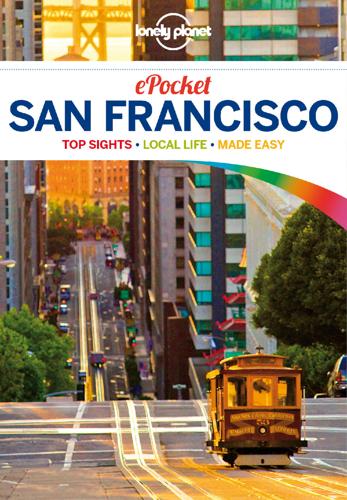
Lonely Planet Pocket San Francisco
by
Lonely Planet
and
Alison Bing
Published 31 Aug 2012
Garages Around $2–$8 per hour ($25–$50 per day) downtown; for public parking garages, see www.sfmta.com. Inquire at hotels, restaurants and entertainment venues about validation. Rentals Start at $50–$60 per day, $175–$300 per week, plus 9.5% sales tax and insurance. Car share Prius Hybrids and Minis are rented by the hour by Zipcar ( 866-494-7227; www.zipcar.com) for flat rates (including gas and insurance) starting at $6.98 per hour ($69.30 per day); $25 application fee and $50 prepaid usage required in advance. Rush hour Avoid peak traffic weekdays 7:30am–9:30am and 4:30pm–6:30pm; call 511 for traffic updates. Towed cars Retrieve cars towed for parking violations at Autoreturn (www.autoreturn.com; 450 7th St; 24hr) ; fines run $73 plus towing and storage fee, starting at $392.75/first four hours.

Terms of Service: Social Media and the Price of Constant Connection
by
Jacob Silverman
Published 17 Mar 2015
There’s a great deal of unacknowledged work involved in the sharing economy. Drivers have to keep their cars clean and insured, with no help from the company nominally employing them. Zipcar customers have to clean the cars after using them. They also may have to get extra liability insurance and can be charged for dents that are discovered after they drop off a rental car (that dent might’ve been caused by someone bumping into the car while it was parked in the rental lot, but in this mostly automated system, there are no Zipcar employees to watch over parked cars). TaskRabbits have to keep their online profiles spotless, so as to earn people’s trust with small tasks, and many workers report agreeing to a task only to find that the listing played down the amount of labor involved.
…
That, in turn, helps to hollow support for feminist movements, the rights of homemakers, and a strong social safety net which, for example, would provide child-care services that would allow women to put aside their domestic labor and enter the paid workforce. The sharing economy is loaded with shadow work, which you might discover when you learn you’re required to clean out your Zipcar but not the (similarly priced) rental from Hertz or Enterprise. Shadow work also includes many tasks—driving, paying for gas, maintaining equipment, buying office supplies to make up for a budget shortfall—that hit poor people hardest. Shadow work can easily turn a living wage into something below subsistence level.
…
(Lanier), 328 WiFi, 323–24 Wikipedia, 198 Winnebago Man (documentary), 72 Winogrand, Garry, 48 women and abusive labor practices in Asia, 266n and revenge porn, 210 and shadow work, 271 targeting ads by gender in the physical world, 298–99 tracking feelings of unattractiveness, 304 warning other women about deadbeat men, 191 Wonkblog (Washington Post), 105–7, 123, 124 Wood, Graeme, 213 World Economic Forum (WEF), 281–82, 328–29, 330–31 World Wide Web. See Internet Wu, Tim, 2, 67 Yahoo, 28, 96 Yang, Zoe, 78–80, 81, 82 Y Combinator, 324 YouTube, 13, 15, 70–71, 84, 361 Zakas, Laimonas, 353–54 Zengotita, Thomas de, 120, 346 Zipcar, 236 Zuckerberg, Mark claims for Facebook, 6 on companies over countries, 6 on Facebook’s supply of data, vii on frictionless sharing, 12 on human beings as cells of a single organism, 12, 376n on maintaining two identities, 159 on privacy, 287–88, 292 Shreateh’s post on Zuckerberg’s Facebook page, 354–55 Zuckerberg, Randi, 159 Zuckerberg’s Law, 288 About the Author JACOB SILVERMAN’S work has been published in the New York Times, the Los Angeles Times, Slate, the Atlantic, the New Republic, and many other publications.
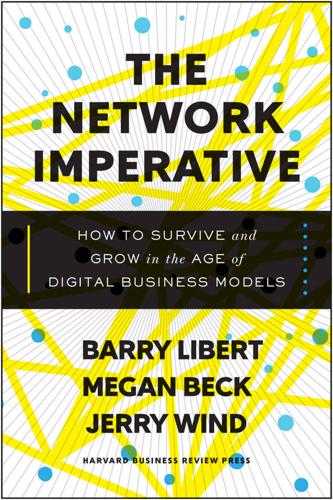
The Network Imperative: How to Survive and Grow in the Age of Digital Business Models
by
Barry Libert
and
Megan Beck
Published 6 Jun 2016
—Mark Fields, CEO, Ford Motor Company VISUALIZING YOUR ORGANIZATION AS A DIGITAL NETWORK, even in a small portion of the business, is a similar leap to the one made fifteen or more years ago by every great leader telling her teams and boards, “We need to get our organization online.” Most people did not know what that meant, but the best made the leap. To be sure, every industry is undergoing a change, including those grounded in physical assets—transportation and lodging. You’ve heard of Uber, and probably Lyft, and maybe even their car-sharing grandparent Zipcar—not to mention Getaround, RelayRides, Greenwheels, GoCar, and many more. Car sharing and driving-as-a-service are available in more than a thousand cities around the world. The accessibility and convenience of these options are a threat to the car industry as well as the taxi and limousine industries, as millennials seem happy to get around without either a driver’s license or car ownership.
…
See also mindset action by network leaders and evolution of, 192–194 as barriers in strategy shifts, 50 of boards, 106, 108 breaking habits and, 198 mentoring for, 198–199 move to intangible assets and, 46 of network orchestrators, 194–195 new stories needed for, 198 Pinpointing in PIVOT process, 137–139 reinforcing, to realize change, 197–199 mentors, 108, 162, 198–199 Microsoft, 76, 80, 133 millennials, 8, 89, 90, 130, 155, 199 mindset, 28, 113–120 diversification of new ideas and methods in, 115 examples of companies using, 118–119 General Motors’ example of change in, 113–114 move from closed to open in, 115–118, 120, 186 network orchestrators and, 114–115, 118, 202 openness to change and, 114–115 organizational culture supporting, 117–118 questions to ask about, 117 scoring your company on, 121–122 minorities, and board membership, 105, 108 mission, 67, 92, 103–104, 118, 119, 140, 163 mission statement, 117 mobile technology customers’ use of, 156 examples of companies using, 36, 53, 70, 110, 191, 197 as key technology, 32 network orchestrators and, 148 platform choice and, 162 multiplier (price/revenue) market valuation comparison among business models using, 18–19 performance comparison among business models using, 16 use of term, 17–18 Myatt, Mike, 90 NASA, 73 Netflix, 46, 82–83, 196 Net Promoter Score (NPS), 65, 83 network capital business model based on, 15, 132 inventory of, 126, 145, 146, 149–151 mental model values on, 138 network orchestrators’ use of, 16 network platforms and, 160 Network Challenge, The (Kleindorfer, Wind, and Gunther), 7 network leader on teams, 169–170, 178, 179 network leaders in organizations, 189–203 core beliefs of, 192 digital technology changes and, 190 guiding principles of, 192–193 mental model evolution of, 192–194 network orchestrators as, 202 new thinking needed by, 189 responses to rapid pace of change by, 190–191 network orchestrators as allocators, 51, 54 boards and, 106–107 digital platforms used by, 33, 36–37 economic advantages of, 15–16 evaluating organization’s performance as, 135–136 examples of, 14 financial services and, 130 identifying organization’s characteristics related to, 133–135 industry sector adoption comparison for, 22–23 intangible assets and, 42, 44 leadership and, 56, 58–59, 60, 61, 62–63 market valuation comparison for, 17–19 measurement used by, 97 mental models of, 21, 194–195 mindset openness and, 114–115, 118, 202 network capital used by, 15 as network leaders, 202 number of companies analyzed for, 13 number of companies using, 22 overview description of, 14 performance comparison for, 16 PIVOT assessment of business models with, 132–133 possible situations behind slow adoption of, 23 scalability characteristics of, 15–17 tracking network and platform metrics for, 178–179 value creation comparison for, 19–20 Visualizing business model for, in PIVOT process, 157–158 networks best practices of legacy firms compared with companies using, 20 boards and, 104–106, 110–111 customer groups within, 149–150 intangible needs met by, 21 law of increasing returns and, 12 open organizations’ use of, 116 power of, 8, 12, 24, 28 subscription model using, 80 network sentiment, 44, 97, 98, 100, 150, 179, 180 Nickell, Jake, 68 Nike, 53, 70, 82, 160, 161, 171 Nike+, 53, 161, 171 Nordstrom, 76 Ocean Tomo, 97 Oculus VR, 36 online forums, 70, 72, 162 OpenMatters, business models research of, 131 OpenMatters website additional resources and support on, 128, 131, 203 business model resources on, 121 digital tools on, 10, 131 mental model assessment on, 138 survey of organization’s characteristics on, 135 openness examples of companies with, 118–119 mindset with, 114–115, 120 open organizations diverse initiatives and business units in, 116–117 examples of, 118–119 innovation pipeline in, 116 move from closed organization to, 115–118, 120, 186 organizational culture supporting, 117–118 questions to ask about, 117 talent in, 117 Operate step in PIVOT, 126, 127, 169–176, 186 creating platform in, 170–172 Enterprise Community Partners example for, 175–176 goal of, 169 management plan for, 174–175 management practices in, 172–174 selecting network leader and team in, 169–170, 173 organizational culture, and openness, 117–118 Page, Larry, 118, 119 Palmisano, Sam, 50 partners customer contributors as, 34, 58, 59 independent workers as, 89, 90–92, 93 performance business model comparison for, 18–19 Pinpointing in PIVOT process, 135–136 Phone Case of the Month, 81 physical capital business model based on, 15, 132 inventory of, 126, 145, 146, 163 mental model values on, 138 network platforms and, 159 Pinpoint step in PIVOT, 126, 130–141, 185 assessing current business model in, 131–132 defining current business model in, 132–133 defining mental model in, 137–139 Enterprise Community Partners example for, 140–141 goal of, 130–131 identifying organization’s characteristics in, 133–135 reviewing economic performance in, 135–136 Pinterest, 44 PIVOT, 123–186 additional resources and support for, on OpenMatters website, 128, 131 change leader in, 132 Enterprise Community Partners example for, 127 five steps of, 126–127 introduction to, 125–128 Pixar, 68 plans for big data use, 99–100 for filling technology, talent, and capital gaps in platforms, 171–172 for growth, on OpenMatters website, 10 for network management, 174–175 for reallocating capital, 157–158 PricewaterhouseCoopers, 106 principles for network orchestration, 25–122 as challenges and levers for change, 27 list of, 27–28 research identifying, 21, 28 scoring your company on, 121–122 Principles of Economics (Mankiw), 49 Project Loon, 167 Red Hat, 133 referrals, 78, 79, 175, 183 Reichheld, Fred, 65 relationships with customers data collection in, 81–82 as intangible asset, 42 leaders affected by changes in, 56–58 personalized approach to, 82 in subscription model (see subscription model) revenues, 28, 75–83 advantages of subscription models for, 77–78 data acquired with, 78, 81–82 move from transaction to subscription in, 78, 79–82 Netflix versus Blockbuster example in, 82–83 nonrevenue activities in subscription model and, 78–79 recurring, in subscription model, 75–77 scoring your company on, 121–122 reverse mentoring, 108, 162, 199 ride-sharing services, 44, 85, 113, 155, 197 Rouse, Jim, 127, 128, 165, 184 Rouse, Patty, 127 Russell Reynolds, 107 Salesforce.com, 176 scalability advantages of, 31 business model comparison for, 15–17, 132 cloud technology and, 32 costs with, 12, 16, 17, 19, 33, 63, 139 digital technology enabling, 3, 33, 41, 44, 162 economics of scale contrasted with, 17 global access and, 31 of network lodging options, 156 network orchestrators and, 172, 202 Threadless example of, 69 scale economics, 17 service providers evaluating organization’s performance as, 135–136 examples of, 14 human capital used by, 15 identifying organization’s characteristics related to, 133–135 industry sector adoption comparison for, 22 market valuation comparison for, 18–19 number of companies analyzed for, 13 overview description of, 14 performance comparison for, 16 PIVOT assessment of business models with, 132–133 scalability characteristics of, 16, 17 value creation comparison for, 19–20 services as intangible asset, 41 subscription model using, 80 shared vision, and co-creators, 61 sharing-economy companies, 44, 85, 113, 155, 197 show-rooming, 45 Sidecar, 44 Sitaram, Pradip, 140, 152, 164, 175–176, 183, 184 skills assessment, 138 smartphones, 29–30, 32 social media, 29 boards’ use of, 107 CEOs’ use of, 199 customer data from, 97, 98, 101 examples of companies using, 53–54, 143, 180 interactions with companies using, 58, 80, 107, 202 as key technology, 32 leveraging for marketing and communication, 34 network sentiment tracked on, 180 platform choice and, 33, 162 public relations problems from customers’ use of, 42–43 subscription model using, 77–78, 80 Softlayer, 48 software subscription model, 76, 80 Spencer Stuart, 105 Sprint, 81 Stanford University, 107 Starbucks, 53, 109, 143, 190, 191 Starwood Hotels, 4, 43–44 strategy, 27, 47–54 barriers to changing, 48–49, 50 best practices of allocators in, 52–53 capital allocation as focus of, 49–51 IBM as example of shift in, 47–48, 50 move from operator to allocator in, 51–52 Nike-Apple partnership as example of, 53–54 questions to ask about, 52 scoring your company on, 121–122 subscription model advantages of, 77–78 customer contributors and, 77 data acquired in, 78, 81–82 examples of companies using, 75–76 moving customers from transactors to subscribers in, 78, 79–80 Netflix versus Blockbuster example in, 82–83 nonrevenue activities in, 78–79 personalized approach in, 82 recurring revenue from, 76–77 surprising and delighting the customer in, 81 themes in implementing, 80–82 types of offerings in, 80 talent big data collection and, 100 customer contribution of, 69 for digital platform operation, 170–171 experience in digital technologies needed by, 35 innovation and, 168 in open organizations, 117 tangible assets as financial liabilities in, 43–44 market valuation of intangible versus, 40, 46 move to intangible assets from, 44–45 Target, 76 TaskRabbit, 15, 159 Team of Teams: New Rules of Engagement for a Complex World (McChrystal), 55 technology, 27, 29–37 advantages of using, 31 business models incorporating, 30–31 embracing “digital everything” in, 30–31 essential aspect of, 29–30 importance of understanding and using, 30 management practices for intangible assets related to, 42 mentorships for, 199 move from physical to digital in, 34–37 platforms and, 33–34 questions to ask about, 35 scoring your company on, 121–122 talent needed for, 35 understanding five key technologies in, 32–33 technology creators evaluating organization’s performance as, 135–136 examples of, 14 identifying organization’s characteristics related to, 133–135 industry sector adoption comparison for, 22 intellectual capital used by, 15 market valuation comparison for, 18–19 number of companies analyzed for, 13 overview description of, 14 technology creators (continued) performance comparison for, 16 PIVOT assessment of business models with, 132–133 scalability characteristics of, 16, 17 value creation comparison for, 19–20 Tesla, 114 Threadless, 68–70, 72, 73, 78, 79, 81 3M, 91, 190 Thrun, Sebastian, 168 Topsy, 98 Track step in PIVOT, 126, 127, 177–184, 186 Amazon example of, 177–178 Enterprise Community Partners example for, 183–184 goal for, 178 network and platform metrics for, 178–179 network dimensions used in, 179–180 ongoing experimentation with, 182–183 platform dimensions used in, 180–181 team dimensions used in, 181–182 Trader Joe’s, 78 transactors, customers as, 78, 79–80 TripAdvisor, 10, 14, 44, 159, 174 Trunk Club, 76 Twitter, 42, 59, 60, 66, 72, 78, 79, 89, 97, 100, 107, 148, 171, 180, 199 Uber, 3, 4, 44, 66, 70, 81, 85, 91, 114, 155, 159, 160, 174, 197 United Healthcare, 133 US Board Index, 105 US interstate highway system, 11–12 Upwork, 12, 15, 43 value creation business model comparison for, 19–20 co-creators and, 61, 62–63 mental model beliefs on, 138–139 nonemployees and, 91 values assessment, 138 van Kralingen, Bridget, 47, 48 Verizon, 81 virtual reality (VR) technology, 36 Visa, 133 vision, and co-creators, 61 Visualize step in PIVOT, 126, 127, 156–165, 186 analyzing possible contribution to networks in, 160–161 beginning step for, 157–158 choosing platform in, 162–163, 170 Enterprise Community Partners example for, 163–165 goal of, 156–157 identifying potential networks in, 159–160 network orchestrator business model in, 157–158 overview of process in, 158–159 selecting network for, 161–162 team in, 158 VRBO, 156 Walmart, 4, 14, 76, 110, 133, 144 Wealthfront, 130 Weatherup, Craig, 110 WeChat, 4 Welch, Jack, 108, 199 Werhane, Charlie, 140, 164, 184 Wikipedia, 8, 46 Wind, Jerry, 6, 7 women, and board membership, 105, 108, 109 workforce. See employees Yahoo!, 148 Yegge, Steve, 33–34 Yellow Pages, 8, 197 Yelp, 8, 15, 44, 60, 66, 159, 160, 174 You Are Not So Smart (McRaney), 191–192 Young-Scrivner, Annie, 109 YouTube, 41, 72, 78 Zagat, 8 Zimmer, John, 114 Zipcar, 155 Zuckerberg, Mark, 36 ACKNOWLEDGMENTS Call it a clan, call it a network, call it a tribe, call it a family. Whatever you call it, whoever you are, you need one. —Jane Howard, author This book has been a network journey of its own. Our team of individuals and partner organizations is diverse and spread around the world—from our writers in Boston, Dallas, and Philadelphia, to our editor in California, to our researcher in Brazil and our technologists in South Africa, Malaysia, and Romania.

Age of Context: Mobile, Sensors, Data and the Future of Privacy
by
Robert Scoble
and
Shel Israel
Published 4 Sep 2013
Simultaneously, it is becoming cool to not own a car at all. Ford is not trying to reverse the trend with an expensive marketing campaign, as carmakers would have done in earlier eras. Instead, it is coping with the “democratization of technology,” and following the lead of future customers by investing in Zipcar, an urban ride-sharing service, and TechShop, where urban entrepreneurs can access advanced tech tools to germinate new city-based businesses. A Blind Spot As impressed as we were with the automotive industry’s understanding of contextual technology and its importance to the future of cars, we were disappointed to find that, as of now, none seems to be considering the impact of digital eyewear such as Google Glass.
…
“We live in the oldest and arguably most beautiful neighborhood in Brooklyn, steps away from Brooklyn Bridge Park, along the East River with playgrounds, athletic fields and breathtaking views,” he says. “We’ve traded a considerable amount of private space for one-of-a-kind public amenities.” The Lindsays don’t own a car. When they need one, there’s a Zipcar garage nearby. The rest of the time they get around by subway, bikes and on foot. Each morning Lindsay walks to his co-work space, dropping little Teddy off at daycare en route. To visit Sophie’s folks near Boston they take the Amtrak Bullet Train. “I like the buzz and connection of city life.
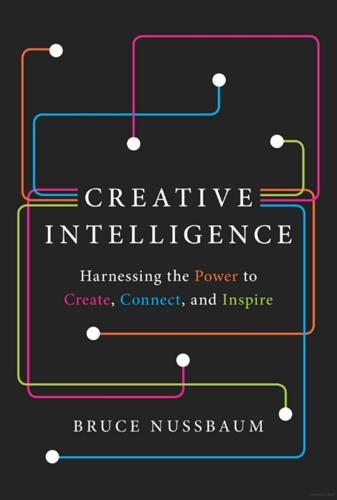
Creative Intelligence: Harnessing the Power to Create, Connect, and Inspire
by
Bruce Nussbaum
Published 5 Mar 2013
And yet our investments into innovation don’t always reflect that. Most of our efforts to promote creativity go to older, established corporations, where incremental innovation is, at best, the result. Yet where have the most important innovations that have changed our lives in recent years come from? Google, Facebook, Zipcar, Wikipedia, and Kickstarter were all founded by individuals, not big corporations. Which is not to say that big companies can’t do innovation right—but they’d do well to look to start-ups for guidance. Pivoting often requires charisma, a relationship with the community of people invested in your project: team members, partners, and a devoted audience.
…
We frame commerce and society—even our relationships—in terms of needs, but that kind of framework is limited. People are much more complicated than a list of needs; we need food and housing and shelter, sure, but what makes humanity unique are the dreams and longings that are much deeper and more complicated than mere necessity. No one needs an iPhone or a Zipcar, and yet these products have become as meaningful to us as the homes we live in or the food we eat. Mining for knowledge isn’t simply about sifting for data. It also involves an understanding of what people find meaningful. Keith Richards and Mick Jagger connected rhythm and blues and jazz and brought their music to restless kids yearning for change.
…
This sense of calling is now rare among CEOs of global corporations, who focus on shareholders and see themselves as global citizens, not leaders of local communities. CEOs often have international responsibilities that surpass local and even national obligations. But the idea of a calling is alive and well among the founders of start-ups like Zipcar or Method who often embrace a social challenge with an entrepreneurial solution. The notion of creating neighborhood jobs and sourcing materials locally is strongest today among new companies growing up, rather than big companies going global. Back in 2004, when Sergey Brin and Larry Page were taking the company they founded public, they, too, expressed a “calling” for their effort.
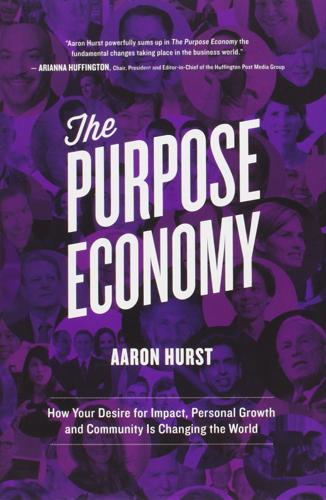
The Purpose Economy: How Your Desire for Impact, Personal Growth and Community Is Changing the World
by
Aaron Hurst
Published 31 Aug 2013
Millennials, who often carry mountains of school debt, have little interest in dumping all their cash into a car or in deriving satisfaction from the size of their front lawn. Simply put, they don’t care as much as Boomers did about acquiring possessions. They need to find ways to make money go further. Fortunately, the market for sharing has accelerated exponentially in the last decade, receiving a huge boost into the mainstream by Zipcar, the market leader in car sharing. More than just a niche, Zipcar was bought by rental car giant Avis. The business of sharing has become investment-worthy and is even sparking new venture capital funds, like New York-based Collaborative Fund. And new services such as Airbnb, an online service that allows property owners to post rental listings for as short as one night, are creating whole new markets where once there were none.
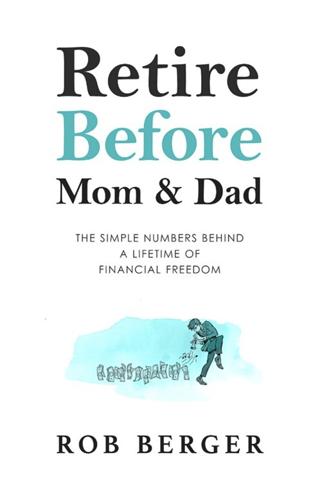
Retire Before Mom and Dad
by
Rob Berger
Published 10 Aug 2019
They would go without a car for a time and then buy a car when the experiment failed, as they assumed it would. But the experiment was a success. Of course they had to make some changes. They walked and biked more, they took an Uber or Zipcar as necessary, and they even took the bus from time to time. It changed their shopping habits, particularly where they shopped (now closer to home), and it saved them a truckload (pun intended) of money. As Ben explained, “Even with the Uber, taxi, and Zipcar bills, we saved money compared to owning a car. No more car insurance bills, parking lot charges, or campus parking fees. We were surprised at how much we had to learn in order to go car-free: Alternate services, iPhone apps, Uber rules….
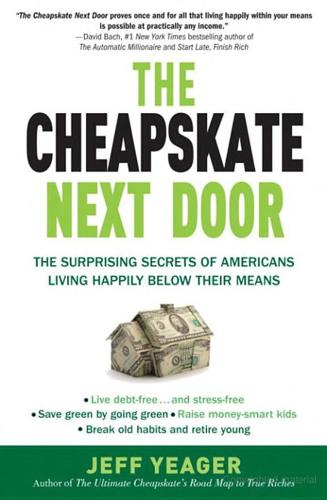
The Cheapskate Next Door: The Surprising Secrets of Americans Living Happily Below Their Means
by
Jeff Yeager
Published 8 Jun 2010
I have a terrific idea for a new invention: a car with a detachable derriere. I’m thinking a giant zipper, right behind the driver’s seat. Why tote along an empty backseat and trunk on trips when you don’t need them? Unzip the butt end and leave it parked at home. Until the automotive industry jumps on my idea for zippered cars, Zipcars (ZipCar.com) are the next best thing, particularly if you’re an urbanite or live near a college campus. Car-share members pay a nominal annual fee for 24/7 access to a fleet of vehicles parked in lots scattered across their city. Make a reservation by phone or online (last-minute is fine) and use an electronic keycard to access the car.
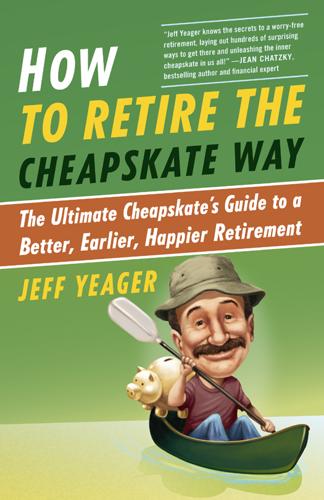
How to Retire the Cheapskate Way
by
Jeff Yeager
Published 1 Jan 2013
Often in the case of cars purchased new, this works out to twenty cents or more per mile. With rental car rates increasingly competitive—usually including unlimited free miles—on trips when you’ll be driving more than a couple of hundred miles per day, it usually pays to rent. In urban areas, check out car-sharing programs like Zipcar (www.ZipCar.com) for potentially even greater savings. And, remember, the insurance you carry on your own car frequently covers you for rental vehicles, too, so no need to pay extra for the coverage offered by the rental company (check with your insurance agent just to be sure). You might need a Cheapskate Intervention if you complain about the high cost of gas while waiting in line in your SUV to go through the drive-thru at McDonald’s.

Early Retirement Guide: 40 is the new 65
by
Manish Thakur
Published 20 Dec 2015
When it comes down to it, owning a large, powerful car is an expensive luxury that most people don't remotely get close to using to the fullest, and don't even realize the kind of luxury they have. Here are several conscientious spending alternatives: 1. Carpooling to work and split the cost of gas. 2. Signing up for a car sharing service such as Zipcar or Car2Go. 3. Use Uber or Lyft if the longer distance rides are rarer and signing up for a car sharing service doesn't add up. Get free rides just by signing up with these links and try them out if you haven't yet Savings: $8,800 Challenges: 1. Compare the cost of public transportation to all the costs of owning a car, there's probably a significant difference. 2.
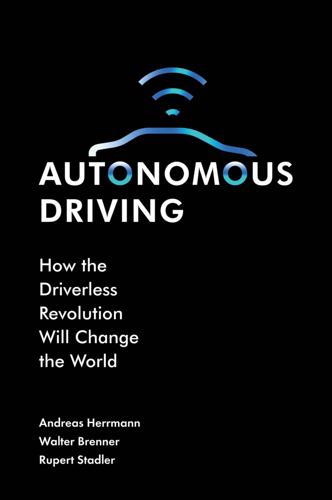
Autonomous Driving: How the Driverless Revolution Will Change the World
by
Andreas Herrmann
,
Walter Brenner
and
Rupert Stadler
Published 25 Mar 2018
Ownership Access and Sharing User as Use of one’s Rental car sharing, business-to-consumer (DriveNow, driver own car Car2Go) and peer-to-peer (Croove, Getaround) User as passenger Use of a taxi Ride sharing (Uber, Lyft) and carpooling (BlaBlaCar) Source: The authors. Note: Mobility apps can link up the various modes of transportation so that the user can identify the fastest and most convenient way to get from one place to another. The Sharing Economy 343 sharing (DriveNow, car2go, Flinkster, Mobility, ReachNow, ZipCar) and with peer-to-peer car sharing (Drivy, Tamyca, Croove, CarUnity, Sharoo, Turo, Getaround), users have to drive the cars themselves. With ride sharing (Uber, Lyft, myTaxi) or carpooling (BlaBlaCar), they are driven by a chauffeur. So far, most sharing models have been station based (A-to-A), i.e. the customers have to drop off the vehicle where they picked it up.
…
In comparison, Lyft, which offers an almost identical service, positions itself as friendly we’re your friend with a car and part of your community greet your driver with a fist bump. Lyft has not seen at all as much growth as Uber; one reason is because they put too much emphasis on consumers’ desire to bond with each other rather than gain access to a vehicle. Meanwhile, there are hundreds of car-sharing providers all over the world: Zipcar is well established in North America and Orix, Park24, PPzuche and EVCard operate in Japan and China. In Europe, the list of players includes DriveNow, Car2Go, Autolib and some peer-to-peer services such as CarUnity and Tamyca. In North America, there are about 1.7 million users and 25,000 cars. In Europe, about 3.2 million people are registered and about 50,000 vehicles are available.
…
See Radio detection and ranging technology (Radar technology) Index Radio detection and ranging technology (Radar technology), 95, 126 Railways companies, 174 177 development, 32 network, 386 Rand Corporation, 6, 191 Real-time traffic, 137, 262 Real-world model, 92, 99, 105 106 of autonomous driving, 92 computer-driven driving, 108 data from passengers, 94 95 information to passengers and to environment, 108 lane-level and intersection mapping based on lidar, 105 lidar print cloud of blackfriars bridge, 104 mapping and localising, 101 104 planning and monitoring, 106 108 sensing and detecting, 95 100 sensors for vehicle dynamics information, 97 sensors in autonomous vehicles, 95 simulation, 91 92 un-fused sensor data of static and dynamic objects, 106 Redundant steering systems, 124 Reich, Andreas, 135, 136 Reinforcement learning, 114 Relaxation, 80, 212, 218 Reliability of electronic brake systems, 122 Remote vehicle monitoring, 261 Responsibility with increasing automation, 235 Ride-sharing, 22, 184, 206, 302 companies, 404 models, 343 services, 344, 384, 397 439 RIO platform, 167 Road(s), 103 experience management, 94 networks in Chinese megacities, 382 road-safety legislation, 192 and telecommunication networks, 379 traffic, 195 users, 108 Roadmap assistance systems, 71 77 categories of first autonomous vehicles, 82 development phases, 77 81 estimated revenues by product package, 77 expected worldwide sales of cars, 85 sales forecasts, 84 86 types of vehicles, 81 84 Roadside objects, 103, 107 Roadster, 27 Robo-cars, 12, 18, 19, 83, 298, 346 349, 347, 406 autonomous, 13 from Google, 335 336 Robots, 10, 58, 238 Roland Berger & Partners, 320 Rosa, Hartmut, 217 SAE J3016 document, 244 Safety, 192 193, 295, 302 304 autonomous vehicles enabling use of alternative fuels, 305 fuel economy, 297 299 functions, 74, 78 intelligent infrastructures, 299 301 land use, 304 operating costs, 301 302 relationship between road speed and road throughput, 296 vehicle throughput, 295 297 440 Sales forecasts, 84 86 Samuelsson, Hakan, 174 San Francisco Park, 301 Savarese, Domenico, 354 Savings effects from autonomous cars, 67 68 from autonomous trucks, 68 69 Scania truck, 162, 261 Schaeffler, 9 Science fiction, 3, 39 41 Scientists, 177 Security and Privacy in Your Car Act of 2017 (SPY Car Act of 2017), 145 Segway scooter, 221 Self-determination, 147, 148, 205 Self-driving cars, 22, 24, 25, 39, 61, 203, 223, 224, 233, 244, 261, 295, 299, 304, 337, 346, 395 features, 222 fleet of vehicles, 171 172, 349 grain trailer, 263 prototypes, 198, 377 taxis, 337, 345, 374 tractors, 8, 154, 155, 156 trucks, 66, 69, 70, 164, 165 vehicles, 153, 171, 175, 222, 225, 233, 354, 368, 379, 388 Self-learning system, 55, 238 Self-parking, 74, 288, 387 Sensing, 93 and detecting, 95 100 front crash-sensing system, 78 Sensor(s), 261, 374 375 applications, 132 in autonomous vehicles, 95 data, 165 for vehicle dynamics information, 97 Sensory perception, 279 Service creators, 316 319 Index Service-oriented business model, 397 398 Sharing economy fleets, 349 350 peer-to-peer service, 350 351 robo-cars, 346 349 sharing, pooling, 342 345 trend, 341 342 Shashua, Amnon, 93 Shenzhen, 386 389 Shneiderman’s eight golden rules of interface design, 283 Shoeibi, Houchan (President, Saint-Gobain Sekurit), 271 Shuttle service, 14, 383 Simulation, 91 92, 121, 345, 350 Singapore Autonomous Vehicle Initiative, 372 373 Smart-city challenges, 383 features, 406 Smartphone, 79, 216, 222, 317, 402, 407 app, 6, 28, 358, 374 industry, 127 signals, 136 unrestricted spread, 255 Social acceptance, 402 Social discourse, 402 Social exchange, 344 Social interaction communication, 198 200 cultural differences, 195 197 mobility as, 195 pedestrians in traffic in London, 196 pedestrians in traffic in Teheran, 197 Social networks, 7, 225, 227, 341 Society of Automotive Engineers (SAE), 47, 144, 243 245 Software, 93, 111, 117 121 creators, 315 316 errors, 249 testing, 120 Index Somerville, 386 389 Spotify, 141, 316, 319 Stahl, Florian, 113 115 Stakeholders car dealers, repair shops and insurance companies, 173 174 public opinion, politics, authorities and cities, 171 173 railway companies and mobility platforms, 174 177 scientists, 177 technology and telecommunication companies, 173 train station as transportation hub, 176 Standards, 241 characterisation, 242 243 development of technology, 241 242 dominant design, 247 248 State Farm Insurance, 316 State Route 91 in Southern California, 296 Statham, Jason (British actor), 226 Status-conscious customers, 204 Steer-by-wire, 122 solutions, 324 system, 123 Steering, 76, 91, 96, 108, 122 manoeuvre, 253, 286 redundant steering systems, 124 systems, 324 ThyssenKrupp, 123 wheel, 15, 43, 72, 76, 123, 238, 285 Stop-and-go traffic, 58, 206, 218, 295, 299 Suburbs, 317, 404 Supervised learning, 113 114 441 Suppliers, 17, 35, 41, 70, 77, 125, 171, 181 182, 243, 284, 312, 323, 333, 398, 405 Swedish car manufacturer, 355 Swiss Railway Corporation, 174 176 Systematic connectivity, 403 Tactile signals, 72, 108 Take-over request, 285 287 TaxiBots fleet, 350 Technical standards, 247, 371 Technological functions, 247 Technology, 173 companies, 55, 182 183 fusion, 330 334 partnerships, 318 Teheran, pedestrians in traffic in, 197 Telecommunication companies, 173 statement by telecommunications experts, 132 Telematics data, 356 devices, 142 services, 142 Ten-point plan for governments, 401 autonomous mobility establishment as industry of future, 404 405 autonomous vehicles integration in cities, 406 industry clusters development, 405 406 initiating social discourse, 402 investing in communication infrastructure, 403 404 investing in transport infrastructure, 402 403 linking public and private transport, 404 442 promoting research, development and education, 406 407 promoting tests with autonomous vehicles, 407 setting legal framework, 401 402 Terror (film), 252 Tesla, 5, 27, 53, 125, 179, 203 204 Texas A & M University, 69 Texas Institute for Urban Mobility, 68 Thune, John, 146 ThyssenKrupp Steering, 123, 324 325 Time, 187 192, 295, 302 304 autonomous vehicles enabling use of alternative fuels, 305 fuel economy, 297 299 intelligent infrastructures, 299 301 land use, 304 management, 215 218 operating costs, 301 302 relationship between road speed and road throughput, 296 vehicle throughput, 295 297 Time-critical, reliable applications, 132 Touareg, Volkswagen, 41 Toyota, 6, 181, 332 333 research into artificial intelligence and self-driving cars, 183 Toyota RAV4 EV, 27 Tractor’s steering system, 154 Traditional automobile companies, 53 Traditional automotive suppliers, 9, 125 Traffic, 389 and art, 389 390 flows control, 248 Index infrastructure, 58, 247 248, 377, 383, 386 laws, 148, 249 regulations, 44, 107, 195, 255, 373 situation, 6, 10, 21, 55, 65, 80, 93, 102, 160, 187, 206, 251, 316, 336, 365, 386 in United States, Canada, and Northern and Central Europe, 195 Traffic jams, 21, 63, 68, 189, 247, 286, 365, 388 assistants, 10, 53, 113 in daily commuter traffic, 365 time lost in, 187 Transparency, 147, 148, 167, 255 Transport cost, 166, 346, 347 Transport infrastructure, investing in, 402 403 Transportation system, 8, 158, 324, 384 385 Trendsetters, 225 Trojans, 142 Trolley problem, 250 Truck(s), 66, 160 of de Winter Logistics transport, 167 explanation of savings effects from autonomous, 68 69 potential savings from selfdriving cars and, 66 Trust, 287 293 TRW, 9 Twitter, 26, 141, 226, 227 Type-approval authorities, 172 law, 234 Uber, 174, 184, 311, 317, 343, 358 UK automotive industry, 368 Ultrasonic sensors, 126, 333 Un-fused sensor data of static and dynamic objects, 106 Index Unbox Therapy, 226 Underused assets, 341, 351 UNECE vehicle regulations, 234 Uniform legal framework, 246 Union Square in Somerville, 387 388 United Nations General Assembly, 192 United States, 63, 67, 367, 402 current fuel economy for cars, 59 implications of congestion in, 188 legal situation in, 234 235 Luxe start-up in, 319 projects in, 369 371 roads in, 86 traffic in, 195 University of Michigan Transportation Research Institute, 120 Urban Challenge, 42 Urban development Audi urban future initiative, 384 386 megacities, 381 383 Shenzhen, 386 389 smart-city challenges, 383 Somerville, 386 389 traffic and art, 389 390 “Urban Parangolé” project, 384 385 Urban traffic, 17, 54, 79, 120, 168, 183, 384 Urbanisation, 26, 29, 341, 381, 382 US Department for Energy, 69 US Department of Transportation, 69, 298, 355, 383 US Environmental Protection Agency, 191 US Federal Highway Administration, 296 US National Highway Traffic Safety Administration (NHTSA), 145 146, 370 443 US Tech Choice study, 288 Use cases for autonomous driving driving to hub, 213 scenarios, 211 215 time management, 215 218 User groups, 66 User interfaces, 283 285 Utilitarian approach, 250 251, 257 V-to-business application, 399 V-to-dealer communication, 25 V-to-everything communication, 375 V-to-home application, 399 services, 318 V-to-life applications, 318 Valeo, 182 Value chains Baidu, 338 conditions, 328, 330, 331 economics, 328, 329 Google, 334 338 redesign, 327 328 technology fusion, 330 334 Vehicle automation, 401 connectivity, 143 digitising and design, 265 267 management, 74 manufacturers, 313 platooning, 299 surroundings, 284 throughput, 295 297 types, 81 84 Vehicle as ecosystem, 263 264 degree of autonomy, 262 263 intelligent connected vehicle, 261 262 tractor to ecosystem, 262 Vehicle detection in autonomous vehicles, 95 challenges, 98, 100, 103 104 lidar, 95, 96 444 machine-learning algorithms, 96, 98 Radar, 95 for vehicle dynamics information, 97 Vehicle sketches and drafts, 267 Audi designers’ drafts of short-distance vehicles, 269 270 Audi designers’ sketches of long-distance vehicles, 268 Budii car concept, 272 273 driverless cars, 267 269 interview with Houchan Shoeibi, 271 272 Nissan Teatro for Dayz, 273 274 Volkswagen Sedric, 274 275 Vehicle-to-cloud communication (V-to-C communication), 129 Vehicle-to-infrastructure communication (V-to-I communication), 25, 74, 129, 134 135, 143, 182, 241, 243, 246, 247, 332, 369, 371, 377, 397, 399 Vehicle-to-pedestrian communication, 136 Vehicle-to-vehicle communication (V-to-V communication), 10, 25, 74, 129, 133 134, 182, 241, 243, 246, 247, 295, 298, 332, 369, 371, 375, 377, 397, 399, 403 Vehicle-to-vehicle connectivity, 143 Vehicle-to-X (V-to-X), 25, 135 136, 241, 369 370 applications, 101, 147 communication, 272 Version control, 120 Video cameras, 227, 333 Vienna Convention (1968), 11, 172, 234, 246, 254, 401 Index Virginia Tech Transportation Institute, 278 Viruses, 142 Visions, 57 energy, 59 60 lives, 57 58 objections, 61 63 people, 60 people doing in autonomous cars, 62 preconditions, 60 61 space, 58 59 time, 58 VisLab research vehicle, 42 Visteon, 284 Visual signals, 78, 247 Visualisations of mobility hubs for Boston and Washington, 385 Volkswagen, 6, 130, 317, 332 333 e-Golf, 27 group, 198 Sedric, 274 275 Volvo Car Corporation, 45, 117, 174, 181, 316, 322 von Pentz, Markwart, 155 Vulnerability of connected vehicles, 142 Warehouse transportation, 159 Waterfall approach, 330 Waze, real-time traffic mapping app, 374 375 Wickenheiser, Othmar (Professor of Design), 266 Wilson, Joe, 145 Wissmann, Matthias, 17 18 WLAN, 154 Work and welfare Jose Castillo statement, 364 365 prisoners of city, 366 traffic jams, 365 Index World Health Organization, 191, 354, 378 WWired article, 142 YouTube, 53, 227, 319, 323 YouTubers, 226 Yueting, Jia, 183 445 Zetsche, Dieter, 290 zFAS central processing unit, 118, 124, 125 zForce steering wheel, 285 Zimmer, John, 180 Zipcar, 344 Zurich Insurance Group, 354

How to Murder Your Life: A Memoir
by
Cat Marnell
Published 30 Jan 2017
I went to bed that night, and then woke up in the morning and went to Condé. I texted Trevor around lunchtime. Have you seen Marco? Mad casual. He’s been passed out on my bed for twelve hours, Trevor wrote. Bingo. Don’t ask me how I convinced my estranged sister to leave work early, rent a Zipcar and drive to the Bronx late on a Friday evening. We pulled up to his building at around six o’clock. I banged on the kitchen door of the apartment. Marco’s dad opened it in his undershirt. I smiled like I wanted to give him a Mary Kay makeover. I cooed, “Hi!” “Hello . . .” he said in his Romanian accent.
…
His favorite sheep skin jean jacket. His favorite Black Flag T-shirt. I filled two bags and two laundry baskets; I was out of control. Marco’s dad watched television while I marauded. I didn’t say good-bye when I was through; I just ran. I threw all of my stuff in the trunk and climbed into the passenger seat of the Zipcar. “Drive!” I shouted, like we were in an action movie. The adrenaline rush was flat-out narcotic, I had to admit. No wonder Marco committed so many crimes! My sister dutifully peeled away. I was practically foaming at the mouth the entire drive back to Manhattan. “It wasn’t everything,” I jabbered.
…
I jumped out and accosted a neighbor—who let me in (if only because she was afraid to say no). I propped the door open with a rolled-up Wall Street Journal and darted back and forth through the rain, unloading my haul. When I’d dragged the last laundry basket to the lobby, I turned to run out and thank my sister—but the Zipcar was already halfway down the block. I got everything into the elevator and upstairs into my place. Then I went into the bathroom. My eyes were wild in the mirror. There was mascara on my forehead and my hair was wet. I swallowed three Adderall at once. They got stuck in my throat, so I leaned down and drank from the faucet.

Choose Yourself!
by
James Altucher
Published 14 Sep 2013
First class is a scam (not much difference between the two other than the prices). I try to stay in AirBnBs instead of hotels, because why pay the same price for a room that I can pay for a five-bedroom brownstone? I use Uber for a car service so I don’t have to wait in the cold for a cab. I use Zipcar instead of rental car agencies because Zipcars (or Cars2Go) are everywhere and require zero paperwork. I hate paperwork or waiting on line. (Does anyone like either of those things?). I’m going to repeat this: I buy experiences and not things. I don’t like to buy my kids’ gifts. But I’ll take them places and won’t hold back.
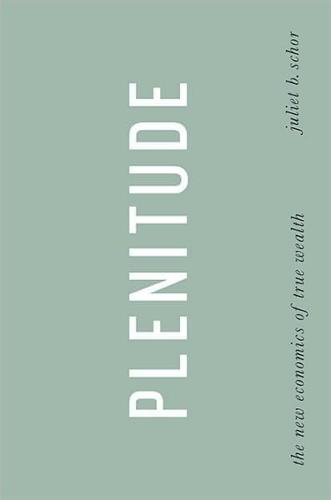
Plenitude: The New Economics of True Wealth
by
Juliet B. Schor
Published 12 May 2010
The Share Solution When I published The Overspent American in 1998, one sentence generated a reaction akin to outrage—my suggestion that neighbors could share expensive items that are only used periodically, such as riding mowers. Ten years later, it’s not only mowers that are being jointly owned, but tractors and even vehicles. The sharing economy is taking off. The best-known example is car sharing, pioneered in the United States by Zipcar, which makes vehicles available to urban members on a short-term basis. Its founder, Robin Chase, has moved on to create GoLoco, a ride-sharing service. Freecycle.org members are committed to the reciprocity of both giving and getting. IShareStuff.com allows individuals to post items they are willing to share and to contact others who have done the same.
…
oceans: acidification of dead zones in overfishing of surface warming of oil -93n Old Navy one life living open-source movement organic farming overburden overshoot overwork Overworked American, The (Schor) paper Parthasarathi, Prasannan part-time work see also labor, hours worked trends in; unemployment, working hours reduction and passive solar design patents Peccei, Aurelio pensions permaculture permafrost Peru, health care in Petrini, Carlo pharmaceuticals phosphorus cycle physical capital physophilia Piore, Michael planetary boundaries plastics plenitude: basic lifestyle security and capital requirements of consumption and definition of Earth-smart design and ecological commons and economics of efficiency and green technology and knowledge and medium-term application of natural asset restoration and open-source mechanisms and principles of reciprocity and self-provisioning and sharing and slow spending and small businesses and social capital and -13n time allocation and trade-offs and -4n transition and true materialism and well-being and working less and Pollan, Michael pollution taxation of population aggregate growth and birth rates and food production and sustainability and world, growth of Post Carbon Cities network poverty prairies prices appliances and automobiles and carbon emissions and clothing and commodities and computers and department stores and durable goods and economic bubbles and energy efficiency and food and full-cost measurement of furniture and government subsidies and supply and demand and Princeton University production possibilities curve productivity agriculture and energy efficiency and Putnam, Robert-13n putting-out manufacturing rapid prototyping machines rebound effect dynamics of Recession, Great economic future and hours reductions in savings rate and recycling Rees, William Reinhardt, Uwe relative decoupling renewable energy see also specific types RepRap digital fabricator resources: extraction and consumption of nonrenewable types of restaurants retirement risk Rosnick, David Russia, historical carbon emissions of Sabel, Charles Sachs, Jeff Salomon, Shay savings, rate of Schneider, Stephen Schumacher College Schumpeter, Joseph sea-level rise self-provisioning agriculture and clothing and food and housing and technology and self-storage Sen, Amartya Senate, U.S., climate change and shadow wages Shafer, Jay Shandra, John Share the World’s Resources sharing economy Sheldon, Kennon Shiller, Robert Shiva, Vandana shrimp Simon, Julian Sky Trust proposal Slow Food movement Slow Money movement Slow Travel movement smart machines social capital - socialism social networking Social Security Society for Ecological Economics soil solar energy Spain, ecological footprint in stagflation Stanford University Stern, Nicholas Stern Review Stiglitz, Joseph Stockholm Environment Institute stock market storage stress substitution effect sulfur oxides Susanka, Sarah sustainability: affluence and BAU economy and community and-13n economics of environment and growth and household production and knowledge and multifunctionality and natural asset restoration and one planet living and path to population and self-provisioning and sharing and slow spending and small business and technology and time wealth and working less and Sustainable South Bronx Swan, Simone Sweden: ecological footprint in productivity growth in systems dynamics Tasch, Woody taxes, taxation carbon pricing and technology climate change reduction and - diffusion of economic change and household production and productivity growth and rebound effect and sustainability and time and see also green technology televisions environmental impact of storage and disposal of Thailand, health care in Thoreau, Henry David time, allocation of tool sharing trade, balance of trademarks trade-off economics - trains Transition Town movement transportation see also specific types of transportation travel true materialism Tumbleweed Tiny House Company underemployment unemployment aggregate growth and company size and working hours reduction and United Arab Emirates, ecological footprint in United Kingdom: ecological footprint in historical carbon emissions of hours worked in rebound effects in technological change in well-being and United Nations (UN) United States: clothing exports from clothing purchases in consumption as percent of GDP in ecological footprint in expansion of consumption in furniture imports to greenhouse gas emissions in Happy Planet Index of health care and historical profitability of hours worked in Human Development Index and income inequality in market growth of materials consumption in pensions in per capita income in rebound effects in sharing economy in technological change and well-being and urban farming urban homesteading value, monetized versus non-monetized forms of Velib Vertical Garden Victor, Peter Wackernagel, Mathis wages nonmonetized value and time wealth and Wal-Mart waste stream water privatization of water footprint Waters, Alice water stress Wealth of Networks, The (Benkler) weather see also specific types Wedgwood, Josiah Weisbrot, Mark well-being West, Paul Who Killed the Electric Car? Whybrow, Peter Wikipedia wildfires Williams, Raymond wind energy winemaking Worcester, Mass. work, see labor World Bank World Wildlife Fund YouTube yurts zero waste concept Zipcar About the Author Juliet B. Schor’s research has focused on the economics of work, spending, environment, and the consumer culture. She is the author of Born to Buy, The Overworked American, and The Overspent American. Schor is professor of sociology at Boston College, a former member of the Harvard economics department, and a Guggenheim Fellowship recipient.
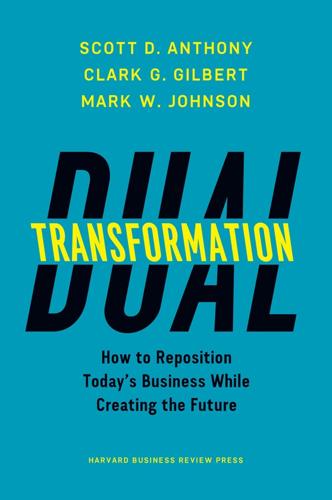
Dual Transformation: How to Reposition Today's Business While Creating the Future
by
Scott D. Anthony
and
Mark W. Johnson
Published 27 Mar 2017
If you combine them, as The Mamas and the Papas sang in 1966, you could “go where you wanna go.” The world changes, always. Now consumers summon Uber or Lyft from their smart phones to get from point A to point B. Instead of owning a car, they can participate in a fractional ownership program like Zipcar (purchased by Avis Budget Group for $500 million in 2013). Then in 2005, Sebastian Thrun, coinventor of Google Street View, led a team whose robotic car won a $2 million prize from the US Department of Defense. Over the next decade Google invested to further develop the technology behind self-driving cars and to change local regulations to welcome autonomous cars.
…
See Singapore Post (SingPost) Singtel, 24, 51, 53, 135–137, 140, 185 curiosity at, 142–150 exposing leaders to new thinking at, 145–147 reinforcing curiosity at, 147–150 Singtel Learning Fiesta, 146 Siri, 67 Skype, 136 Southern New Hampshire University (SNHU), 58, 59 space race, 115–116, 132 stakeholders, 11, 167–168 communicating to, 195–196 Starbucks, 57, 67 The Startup Owner’s Manual (Blank and Dorf), 153 startups disruption and, 58–59 established businesses versus, 72–73 Stone, Biz, 49, 138 strategic opportunity areas, 123–127, 216 strategy fitness landscape and, 5–8 future-back approach to, 129–133 at Manila Water, 117–128 predictability and, 137–139 story at the center of, 171–173 transformations A and B and, 16–20 The Structure of Scientific Revolutions (Kuhn), 68 Systrom, Kevin, 2 talent bringing in special-purpose, 44 capability development via external hires, 66–69 communicating to, 195–196 Tan, Wilson, 51 Taobao, 201–202 Tata Sons, 149 Tay Soo Meng, 135 TechCrunch, 206 Temasek, 136 template, goals and boundaries, 123, 215 Tencent, 106, 202 Tesla, 178 Theranos, 61 3Com, 13 Thrun, Sebastian, 205 Tiddler (Donaldson and Scheffler), 171 Time Warner, 96 transfer pricing, 85 transformation A, 27–45 at Adobe, 31–32, 33 aggressive implementation of, 43–45 balancing with transformation B, 173–175 business model blueprint, 214 business model innovation in, 40–42 crises of conflict in, 163–168 at Deseret Media, 29–31 determining job to be done after, 36–39 distinguishing from other strategic choices, 16–20 driving, 36–45 in dual transformation equation, 12 interface management and, 75, 80–87 leaders of the critical role of, 187 metrics in, 42–43 at Netflix, 32–36 systems for, 80–82 trigger point for, 36–37 at Xerox, 14 transformation B, 47–70 “aliens” and “diplomats” in, 68–69 at Amazon, 53–55 balancing with transformation A, 173–175 business model iterative development in, 59, 63–66 capability development in, 66–69 consumption patterns transformation in, 61–62 crises of commitment in, 161–163 crises of conflict in, 163–168 distinguishing from other strategic choices, 16–20 in dual transformation equation, 12 in higher education, 55–58 identifying constrained markets in, 59–63 interface management and, 75, 80–87 keys to success in, 58–69 at Netflix, 69–70 at SingPost, 50–53 systems for, 80–82 at Xerox, 14 transformation blurbs, 129 transformation maps, 211–212 transparency, embracing, 153–154 TripAdvisor, 50 Trustwave, 188 TurboTax, 132 Turner Broadcasting System, 2, 95–99 Turner Classic Movie, 99 Turner Entertainment Networks (TEN), 95–99 decision making at, 102, 109 early warning signs at, 108 focus at, 117 Tushman, Michael, 53, 54 TVinContext, 99 Twitter, 49, 138 Tyson, Mike, 64 Uber, 205 UK-92480, 138–139 Ulmer, Dave, 71–72 Unbreakable Kimmy Schmidt, 35 universal resource locators (URLs), 3 value, business model innovation and, 40 Vasquez, Robbie, 127 venture capitalists, 103–104, 112, 140–141 corporate, 143–144 Verizon, 49 Viagra, 138–139 Viki, 143 von Braun, Wernher, 116 vPost, 52 Walgreen, Charles R., Sr., 60 Walgreens, 60–61 Wanamaker, John, 67 warning signs, 102–113 assessment table, 213 catalysts, 104–105 circumstances, 103–104 how to spot, 107–110 impact, 106–107 underestimation of, 120 Wasson, Gregory, 60–61 Watson supercomputer, 70, 204 WebMD, 100 WeChat, 106 Welch, Jack, 177 WhatsApp, 48, 136 white space, 63, 66 will.i.am, 151 Williams, Ev, 49, 138 Wilson, Joseph C., 13 World Media Enterprises, 156 Wright brothers, 64–65 Xerox, 13–16 acquisitions and partnerships at, 67 arbitration at, 86 business model innovation at, 42, 63–64 capabilities link at, 14–15 focus at, 117 postdisruption job to be done at, 39 transformation journey at, 182 Xerox Global Services (XGS), 14, 63–64, 86 Yahoo, 49 Y Combinator, 72 Yelp, 50 Young Broadcasting, 156 YouTube, 97, 105, 108 Zillow, 50 Zipcar, 205 Zuckerberg, Mark, 48, 97 Acknowledgements From the team The central idea in Dual Transformation—that leaders need to simultaneously reposition today’s business and create tomorrow’s—has been core to each of our professional careers since 2000. In fact, if you looked at slides from the executive training sessions two of us (Clark and Mark) ran in 2001, you would see a version of the “two circle” chart that we have adapted to summarize the dual transformation framework.
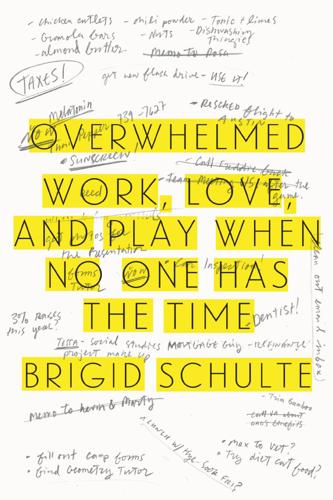
Overwhelmed: Work, Love, and Play When No One Has the Time
by
Brigid Schulte
Published 11 Mar 2014
But she has elegantly found a way to live and work. If you were a young doctor, stories like Hannah’s are an inspiration, that, ‘Wow, Hannah did that. I could, too.’ You need that sense of hope.” The designers also came up with a host of what they call Practical Home Rewards to help ease the time squeeze for everyone. Valantine arranged to put Zipcars on campus so faculty can more easily get on and off the notoriously overparked campus in the middle of the day for a preschool play or parent-teacher conference. Faculty can now bank the unpaid time they serve on university committees and trade it in for ready-made organic meals or services like yard work, elder care, or housecleaning.
…
Wall Street Journal, January 29, 2013, http://online.wsj.com/article/SB10001424052748704688604575125543191609632.html. 20. Meghan Casserly, “Female Founders: Overcoming the Cupcake Challenge and ‘Mompreneur’ Stigma,” Forbes, March 22, 2011, www.forbes.com/sites/meghancasserly/2011/03/22/female-founders-cupcake-challenge-gilt-groupe-learnvest-zipcar/. 21. Lyn Craig, Abigail Powell, and Natasha Cortis, “Self-Employment, Work-Family Time and the Gender Division of Labor,” Work, Employment & Society 26, no. 5 (October 2012): 716–34. 22. http://articles.latimes.com/2013/feb/26/business/la-fi-yahoo-telecommuting-20130226. 23. www.nytimes.com/2013/03/16/business/at-google-a-place-to-work-and-play.html?
…
Washington Post, The Washington Post Magazine, The Washington state wealth; money culture weather WellStar Health System WFD Consulting What to Expect (movie) White, Melvin Whitman, Charles Whitman, Walt, “Crossing Brooklyn Ferry” Williams, Joan Wilson, Casey Wilson, Ed Wineland, Desiree Wolfers, Justin women; ambivalence and; biological clock; breadwinner-homemaker ideal; busyness; childless; children and; Danish; divergent realities; education; entrepreneurs; family responsibilities discrimination; fear and; fertility issues; finding time; gender equity issues; guilt; housework and; husbands outearned by; ideal worker; intensive mothering; leisure and; lesbian couples; in military; mommy wars; as multitaskers; of 1950s; of 1960s; of 1970s; parental leave; play and; in politics; role overload; stress and; time diaries; in upper management; wage gap; working mothers; see also mothers WoMoBiJos Woolf, Virginia; “Professions for Women” work; all-or-nothing; blue-collar; breadwinner-homemaker stereotype; bright spots; caregiver bias; change; culture; Danish; do one thing; family responsibilities discrimination; flextime; four-day workweek; full-time; gender discrimination; gender equity issues; growing work week; hourly; ideal worker; low-wage; military; millennials; mommy wars; motherhood and; in 1950s; in 1960s; in 1970s; in 1990s; overtime; overwhelm and; parental leave; part-time; positive aspects of; productivity; as religion; salaried; “separate spheres” theory of; shift in; sludge eradication; split in time; taking breaks at; technology; telework; in 2000s; unemployment; unhappy; wage gap; see also specific occupations working class Working Mother Work-Life Conflict in Canada in the New Millennium World Happiness Report World Health Organization World Leisure Organization World War II worry Wright, Tony Wylie, Philip: Generation of Vipers Yahoo! Yale Law School Yale Stress Center yoga Yoken, Jen Yost, Cali YouTube Zaikis, Leslie Zimberoff, Diane Zipcars A Note About the Author Brigid Schulte is an award-winning journalist for The Washington Post and The Washington Post Magazine, and was part of a team that won the Pulitzer Prize. She is also a fellow at the New America Foundation. She lives in Alexandria, Virginia, with her husband and their two children.
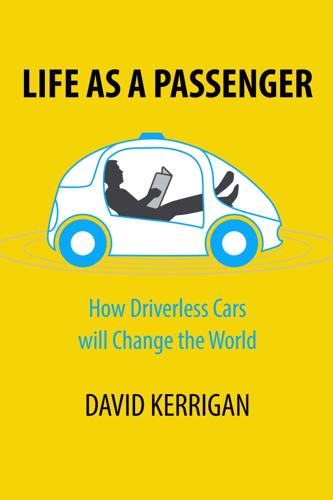
Life as a Passenger: How Driverless Cars Will Change the World
by
David Kerrigan
Published 18 Jun 2017
How will these two trends collide? America’s love affair with driving seems to be cooling off, while our obsession with urban living is heating up. The new player in the mix of urban life is cars on demand, either on a trip basis with a driver with a service like Uber or Lyft, or on a usage basis - with a service like Zipcar - essentially rental by the hour or by subscription. Taxis have long been a popular way to get around when driving yourself doesn’t suit or isn’t possible. But the modernisation of taxis via the smartphone has given the concept a new lease of life. As of May 2017, leading on-demand provider Uber operates in over 580 cities and saw over $20 billion of bookings in 12 months.
…
One need look no further than the current transportation market for an instructive analogy. Today, people get around in their daily lives in many different ways. Some people own their own cars. Some people rent cars when they need them (either through traditional car rental companies or newer models like Zipcar). Some people get everywhere through ride-sharing services like Uber or Lyft. Some people use public transportation or simply walk. People commonly switch from one of these solutions to another over the course of their lives depending on life’s changing circumstances. The same will likely be true in the driverless future of tomorrow.
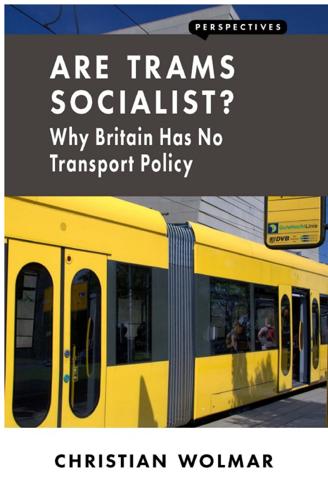
Are Trams Socialist?: Why Britain Has No Transport Policy
by
Christian Wolmar
Published 19 May 2016
A bike hire system on the scale of the London Santander Cycles scheme could not be provided like a left luggage office of the 1950s, with cap-doffing men issuing bikes from a back office and collecting them back with complaints about scratches! (It is interesting that, for the most part, hire cars are still issued in this way, though the Paris Autolib’ system is changing this, as are various initiatives such as Zipcar in the UK and elsewhere.) At the end of the day, though, it is simply a way of loaning out bikes to people in the way that late Victorians did in public parks. Knowing when the next bus is coming is hardly rocket science either. I remember being in Oakland, California in the early 1970s and simply ringing up to find out when the next bus was arriving before leaving the house in which I was staying – and that was perfectly reliable.
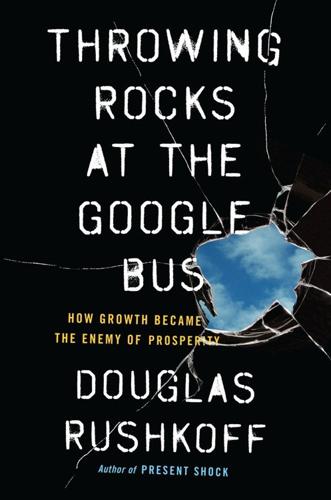
Throwing Rocks at the Google Bus: How Growth Became the Enemy of Prosperity
by
Douglas Rushkoff
Published 1 Mar 2016
We have gone from buying music on records or CDs to downloading MP3 files to simply subscribing to Pandora or Spotify. Owning music—or a car, for that matter—is becoming less important than having access to it. This is certainly a step on the path from hoarding to sharing. Except the many sharing platforms and services are not sharing at all but renting. We don’t collectively own the vehicles of Zipcar any more than we collectively own Spotify’s catalogue of music. And as private companies induce us to become sharers, we contribute our own cars, creativity, and couches to a sharing economy that is more extractive than it is circulatory. Our investments of time, place, and materials are exploited by those who have invested money and actually own the platforms.
…
See income disparity Welch, Jack, 132 welfare state, 99 Whole Foods, 109 Wiener, Norbert, 52 Wikinomics (Tapscott & Williams), 49n Wikipedia, 49, 207, 215, 219 Williams, Anthony D., 49n Williams, Evan, 7–8 Wilson, Fred, 87, 93, 94 Winklevoss twins, 146, 150 Wired,187 Wörgl, 157–58 worker-owned collectives, 219–20 workweek, reduction of, 58–60 WorldCom, 133 Worlds Fairs, 19, 20 Xerox, 98 Yahoo, 32 Yahoo Finance, 182 Young, Neil, 199 zero marginal cost society, 62 Zipcar, 218 Zobele, 107–8 Zuckerberg, Mark, 92–93, 120, 146 Zynga, 192–93 * Most notably Chris Sacca, in public statements. * Don Tapscott and Anthony D. Williams’s widely read book Wikinomics points to Wikipedia as a new model for mass collaboration and value creation online. They go on to credit Amazon Mechanical Turk with creating valuable new opportunities for the next generation of digital workers

No Ordinary Disruption: The Four Global Forces Breaking All the Trends
by
Richard Dobbs
and
James Manyika
Published 12 May 2015
The service was so popular that in one year, Homeplus expanded its virtual stores to more than twenty bus stops. US start-up Instacart now offers customers in ten cities the ability to order goods from multiple stores through one website and get them delivered in one hour. Car-sharing services such as Zipcar and Lyft and transport services such as Uber are becoming increasingly popular among urban residents who have chosen not to purchase their own cars. The growing ubiquity of such shared services may be hard to replicate outside dense urban environments, but they are not unique to developed economies.
…
Technology has leveled the playing field between large and small players and increased companies’ willingness to enter new markets and expand into new sectors. Microsoft took fifteen years to reach $1 billion in sales.14 Amazon reached that mark in fewer than five years.15 Netflix is no longer merely disrupting content distribution, but is also becoming a formidable force in original content production. Zipcar and other car-sharing upstarts are not only disrupting the car-rental business, they are also challenging traditional car ownership models. This raises an important point about the changing basis of competition. In previous decades, companies didn’t just know their competitors intimately; they recognized the way they did business.
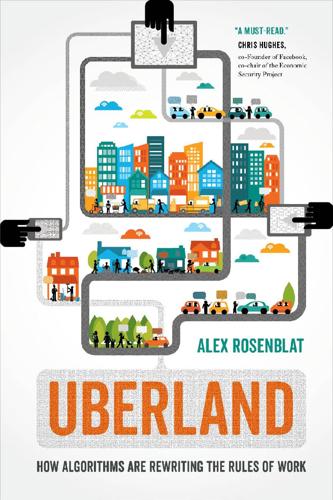
Uberland: How Algorithms Are Rewriting the Rules of Work
by
Alex Rosenblat
Published 22 Oct 2018
Technology could connect those who possessed underutilized assets, skills, or time with potential consumers, a form of commerce that reduced the costs of ownership and more efficiently distributed goods and services.17 For struggling millennials displaced by the recession, this new model provided a hopeful new paradigm for earning income. As Robin Chase, cofounder of the car-sharing service Zipcar,18 wrote in 2015, “In the new collaborative economy, sharing and networking assets, like platforms, car seats and bedrooms, will always deliver more value faster.”19 Critics, like scholar Nick Srnicek, countered the idea that the sharing economy was anything novel, branding it as a mere reiteration of the platform capitalism of the 1970s.20 Arguing that platform capitalism will hasten the end of work, Srnicek advocates a future of different possibilities.21 Meanwhile, culture scholar-activist Trebor Scholz sees platform cooperativism as a viable way of redistributing corporate profits of platforms like Uber to workers.
…
Bureau of Labor Statistics, 25–26 Utah, 223n22 valuation of Uber, 28, 29–30, 190, 204 Vancouver, Canada, 177, 205, 258n11 venture capital funding, 10, 27–28 Via, 51, 52 wage theft, 15, 114–15, 125–28, 194, 201 Wall Street collapse, 22–23 Wall Street Journal, 26 Warnshuis, Corinne, 189 Washington, DC, 12 Waymo, 161 Waze, 205 WeChat, 199 Wells, Katie, 68 Wells Fargo, 23 “Westchester Would Send Anti-business Message by Opting Out from Ridehailing” (Maredia), 181 WhatsApp, 199, 205 white supremacist rally, 167 Wikimedia Foundation, 32 Wikipedia, 32 Wilson, Christo, 128 women: attrition rate of, 72; labeled as narcissists, 230n63; sexual assault of, 161, 194; sexual harassment of, 56, 139–40, 147, 188, 193, 194, 195–96; UN work initiative for, 188; value of work of, 32, 37–38; Wikipedia and, 32. See also gender differences worker performance evaluation. See rating system World Bank, 23 Xchange program, 68 Yang, Jerry, 81 Yellow Cab, 5, 58, 60, 67, 154 Yelp, 149, 155 YouTube, 34, 83, 104 fig., 109 Zahid (driver), 67–68 Zatz, Noah, 52 Zello, 199, 202 Zendesk, 143 Zipcar, 24 Zuckerberg, Mark, 24, 81
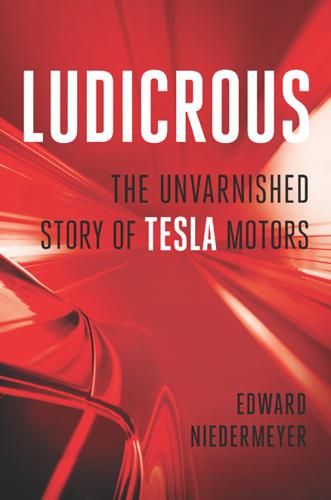
Ludicrous: The Unvarnished Story of Tesla Motors
by
Edward Niedermeyer
Published 14 Sep 2019
Whether or not these new players fully understood how tough the car business could be, their boundless optimism and often wildly experimental ideas presented a sharp contrast to the homogenized, commodified mainline auto industry. Though the explosion of new ideas and companies in the automotive world was a hint at the “mobility technology” revolution we see unfolding today, it was still firmly anchored in the privately owned car paradigm (with the exception of car-sharing pioneers like Zipcar). Some of these new green car startups, like ZAP, Miles, and Coda, imported cheap electric vehicles from China. Some, like Aptera, designed aerodynamic and hyperefficient vehicles that looked like they rolled out of an episode of The Jetsons. Companies like Brammo and Zero got into electric motorcycles; a Norwegian startup called Think Global developed a lightweight plastic-bodied electric commuter, TH!
…
(documentary), 13 “whompy wheels,” 146 Wikipedia, 34 Wired, 68, 73, 126, 198, 199 Wood, Catherine, 173 Wright, Ian, 28, 31 Wyse computers, 23 Y Yelp, 41 YouTube, 96, 101, 141, 217–218 Z Zalkon, 99 ZAP, 11 Zero, 11–12 Zero Emission Vehicle (ZEV), 12–13, 34 ZEV credits, 72–73, 117–118 Zipcar, 11 ABOUT THE AUTHOR Edward Niedermeyer has been investigating and analyzing the auto industry since 2008, and he is currently building a new online vertical for mobility technology coverage called Merge. His work has been published in the New York Times, Wall Street Journal, Bloomberg View, The Daily Beast, Quartz, The Verge, and elsewhere.
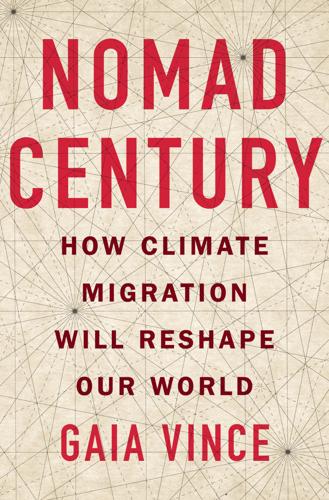
Nomad Century: How Climate Migration Will Reshape Our World
by
Gaia Vince
Published 22 Aug 2022
CIRCULATING RESOURCES The advantage of having a global population concentrated in megacity safe havens is the opportunity for efficiencies. Community resources – including transport, children’s toys, office equipment, heat, light and power – can be shared rather than owned, reducing raw materials used and waste. We already see the seeds of this sharing economy – I am a member of my local toy library and have ZipCar membership. Cities are not autonomous, they feed on the outside world. Swedish cities, for example, import 20 tons of fossil fuel, water and minerals per person per year. With many of the sources of our minerals and natural materials set to be, within decades, physically inaccessible to humans – because of dangerous temperatures or rising sea levels – we will have to find alternatives or use robotic labour.
…
Kung peoples Kutupalong refugee camp, Bangladesh Kyrgyzstan Lagos Lake Chad Lammy, David land ownership language/linguistics; language classes for new arrivals; and nation state Laos Las Vegas Latin America: Amazon region; first nation states in; fragile social systems in; impact of climate emergency; mega-El Niño (1997–8); migrants in Parla, Spain; rivers fed by glaciers; rural to urban migration League of Nations Leipzig liberalism Libya Lima livestock farming: by drone; feeding of animals; impact of drought; inhumane treatment of animals; insects as feed; land and water used for; meat and dairy subsidies; need for huge reduction in Ljubljana, Slovenia locust plagues London Macau Maillard chemical reaction maize production, global Malacca Straits Malaysia Maldives Mali Manchester Mangroves Marijuana marine life: fish populations; impact of global warming; starved of oxygen by algae marshes Mayan civilization Mayors Migration Council McCarthy, Kate McCay, Adam McConnell, Ed Medellín, Colombia media, prejudice against migrants Mediterranean Mekong River Melbourne, Pixel Building Merkel, Angela Mesopotamia Met Office, UK, methane Mexico Mexico City Miami Micronesians Middle East migrant cities: the Arctic as new region for; charter cities option; and circulation of community resources; ‘climate haven’ cities; creation of entirely new cities; as cultural factories; environmental sustainability; evidence of decline of tribalism in; expanding existing cities; in the new north; planning future cities; repurposing/adaptation of; successful urban development/planning in; as synergistic; training for rural migrants; water-management infrastructure migrants/immigrants: arrival in family groups; ‘Bangla’ communities in London; contribution to global GDP; creation of active markets by; distinction between refugees and; dominant hostile narratives of in West; ‘economic migrant’ term; evidence of decline in hostility towards; harnessing potential of; immigrant inclusion programmes; as indentured labour; internal migration; Boris Johnson’s language on; language classes for; levels of patriotism of; living in slums/shanty towns; mentoring and support for; as percentage of global population; racist and prejudicial tropes about; returning to origin countries; seasonal; situations of appalling abuse/danger; state-sponsored support needed for migration: and advantageous genetic modifications; barriers to today; as benefitting everyone; controlled by city authorities; as deeply interwoven with cooperation; and diversified genes/culture; evidence of decline of anti-immigrant feeling; free movement ends in twentieth century; and historic climate change; historical; human displacement at record levels; inherited routes and channels; and mental illness; as not reduced by aid; reluctance to move; and skin colour; of stuff/resources; as survival strategy used widely in nature; as valid and essential part of human nature; world’s major cities created by migration, arguments against/fears around: fears around crime and violence; and jobs; long evolutionary roots to prejudice; in the media; populist politicians; pressure on inadequate host services; prospect of radical change; resting on true/pure national identity idea; security/terrorism issues; and welfare systems migration, climate-driven: Covid cooperation as hopeful example; due to flooding; and geopolitical mindset; global agreement on pathways needed; hypothetical scenarios/models enabling; as inevitable; Kiribati’s ‘migration with dignity’ programme; mass movement already under way; move to higher elevations; national and regional relocation schemes; need for strong nation-states; need to plan practically now; numbers affected today; predicted future numbers; and Refugee Convention (1951); risk of domination by wealthy elites; as solution not problem; speed of movement of climate niches; water issues to be main driver migration, urban; access to health and education; community sponsorship models; family retention of farmland; and intensive infrastructure development; as most effective route out of poverty; population fall due to; role of business in migrant integration; from rural areas; successful management of; as unplanned and iterative; in the West (1850–1910); and workforce shortages in global north Miller, David mineral supples/extraction mining industry Mongla (Bangladesh) Mongolian steppes Morocco Mumbai, mussels Myanmar Nairobi Nansen, Fridtjof nation state: Anderson’s ‘imagined communities’; claims that country is ‘too full’; first created by revolutionaries; and genetic variation; and geopolitical mindset; and language; leases/purchases of territory by; model as often failing; nationality as arbitrary line drawn on map; need for reinvention of; as norm after First World War; and system of borders; translocation of existing nation states National Health Service (UK) national identity: and anti-immigrant feeling; and bureaucracy; creation of first nation states; ethnic and cultural pluralism as the norm; evidence of decline of tribalism; feelings of loss of/decline; and ideology of nationalism; lack of political meaning before end of eighteenth century; nation state as norm after First World War; need to change immigration narrative; patriotism of welcomed migrants; predicated on mythology of homogeneity; and supranational identity; transition to pan-species identity Nauru Neanderthals negative emissions technologies Netherlands; Delta Programme; Energiesprong house insulation Neukölln (Berlin) New Orleans New Story (nonprofit) New York City; ‘Big U’ seawall project; NYCID programme New Zealand; Managed Retreat and Climate Adaptation Act Newtok, Alaska Nicaragua Niger, West Africa Nigeria nitrogen Noem, Kristi nomadic pastoralism Nordic nations Normans North Korea Northern Ireland Northwest Passage Norway Notre Dame, University of, Global Adaptation Initiative nuclear power; fusion reactor technology Nusantara (Borneo) Nuuk (Greenland) Obayashi (Japanese firm) oceans/seas: acidification; as energy source in north; and enhanced weathering techniques; global warming absorbed by; impact of 4° C-hotter world; impact of carbon emissions; jellyfish explosions; long-distance migratory voyages; marine heatwaves; and migratory raiders; Miocene Era sea levels; North Atlantic currents; Northwest Passage; nutrient and oxygen circulation; ocean fertilization; release of carbon dioxide; rise in sea levels; sea grasses; sourcing food from; toxic algae blooms oil industry OmniTrax (US freight company) Ottoman Turks Overjeria, Bolivian village Paine, Thomas Pakistan Palaeo-Eskimos, Canadian palaeontology Palestine Panama Papua New Guinea Paris climate meeting (2015) Parla (near Madrid) passports Patagonia Patel, Priti patriotism Pearl River Delta Peatlands people-traffickers Peri, Giovanni permafrost, infrastructure built on Persian Gulf Peru Pfizer vaccine Philippines; nurses from Philistines Photios of Constantinople Phuket, Thailand Phytoplankton plains/steppes plants/vegetation: destruction of by wildfires; genetic tools to help adaptation; grass verge areas; heat damage to crops; during last ice age; move to plant-based diet; planted to increase crop yields; replanting of; rooftop vegetation/gardens plastic waste Pleistocene epoch Poland political and socioeconomic systems: in Africa; benefits to democracy of migration; cooperation during Covid upheaval; corporate food system; democracy based on inclusiveness; development of governance systems; end of multinational empires; erosion in the powers of global bodies; failure over decarbonization; far-right political parties/groups; fossil fuels as embedded in; geopolitical constraints; geopolitical implications of farming’s shift north; global institutions with enforceable powers needed; and ideal temperature question; inequality as failure of policy; institutional bias over skin-colour; institutional trust levels; international diplomacy; move from feudalism to centralized monarchy; nation-state model spreads; need for global planning over migration; need for redistributive policies; need for strong nation-states; new regional unions option; pledge of ‘strong borders’ as vote-winner; possible new political institutions/structures; post-war institutions and inequality; strong/stable institutions in north; translocation of existing nation states; and transnational rivers/’water towers’; vested interests in the rich world; Westphalian state system pollinators pollution Polynesians populist politicians Portugal postcolonial diaspora poverty see inequality and poverty Próspera ZEDE (embryonic charter city) Prussia Puerto Rico Putin, Vladimir Pygmies Qatar race and ethnicity: and anti-immigrant feeling; deliberately prejudicial policies; and demographic change; European colonialism; fallacy of biological ‘race’; heat related inequalities; unconscious bias in society; white supremacists rain gardens rainfall: altering patterns of; captured by roof gardens/storage; seeding of clouds rare earth metals Raworth, Kate, Doughnut Economics, recycling Refugee Convention (1951) refugees: from Afghanistan; barred from working; Burmese Rohingya in Bangladesh; climate change not in legal definition of; distinction between migrants and; EU seeks quota system for; hostile rhetoric towards; judgemental terms used about; and Nansen passports; privately sponsored; from Syrian crisis (2015–16) see also asylum-seekers renewable power production: as adding to, not replacing, fossil fuels; artificial light delivered by LEDs; hybrid hydro-solar power concept; hydroelectric plants; as leading job creator; and net zero targets; phenomenal rise in; refrigerant units in global south; solar-powered closed-cycle farming; storage technology; zero-carbon new-builds Republic of the Congo restoring our planet’s habitability; biodiversity loss; ‘blue carbon’; climate change-biodiversity loss as linked; cooling of global temperatures; decarbonizing measures; enhanced weathering techniques; future repopulation of abandoned regions; genetic tools to help species adapt; as global, labour-intensive task; natural restoration after human abandonment; nature guardianship in tropical regions; need for speed; negative emissions technologies; ocean fertilization; paying communities to protect ecosystems; regenerative agriculture; replanting of vegetation; solar radiation reduction tools, see also geoengineering retail services rice; SRI cultivation process rivers: drying out of; fed by glaciers; heavier rainfall as increasing flows; lack of in Gulf region; pollution discharged into; transnational Roatan, Caribbean island of Rocky Mountains Rome, ancient Romer, Paul Rotterdam rural living: and depopulation crisis; flight from drought/heat hit areas; impact of flooding; massive abandonment of in coming decades; migration to urban areas; and population expansion in Africa; remittances from urban migrants; as single largest killer today; and water scarcity Russell, Bertrand Russia: and charter cities model; depopulation crisis; economic benefits from global heating; economic sanctions on; expansion of agriculture in; infrastructure built on permafrost; invasion of Ukraine (2022); mega-heatwave (2010); migrant workforce in east; as potential area for charter cities; small-scale modular nuclear reactors in; water resources in Rwanda: Hutus and Tutsis in; special protective zones in; and UK asylum-seeker plan Salla, Finnish town of sanitation Saudi Arabia Saunders, Doug Sawiris, Naguib Scandinavia scientific discovery Scotland sea grasses Seasteading movement Seven Dials, London sex industry Shanghai sharing/circular economy Shenzhen Shyaam a-Mbul Siberia silicates Silicon Valley Silk Road Singapore sinkholes Skellefteå, Sweden slavery Slovenia slum dwellers; conditions at Kutupalong refugee camp; in Lagos; in Lima; and urban heat island effect; vulnerability to flooding social class/hierarchies: and anti-migrant attitudes; barriers erected against migration of the poorest; despair and anger of ‘left behind’ natives; development of; and gentrification; middle class migrants; myth of meritocracy; prejudice as often defensive fear-based reaction social networks; benefits of trade; cities as focal points for trade; Dunbar number; entangled ancestries/identities; forged by migrants; and knowledge flow; loss due to gentrification; migrants in family groups; and mistrust of outsiders; need for inclusive governance; and reluctance to migrate; in slum areas; social clustering of migrants; synergy created by; and unjust hierarchies; welcoming of strangers to social services see welfare systems and social services socioeconomic system see political and socioeconomic systems soil: ‘biochar’ use in; biomatter decay in; as carbon store; impact of heat on; impact of wildfires on; integrated soil-system management in China; and overuse of fertilizers; and perennial cereals; use of silicates in solar power Solar Radiation Management Governance Initiative South Dakota South Korea Southern Ocean Soviet Union soya production Spain Spitalfields, London stateless persons Sudan sulphate cooling concept Sumerian civilization Sunak, Rishi Sweden Switzerland Syrian crisis (2015–16) Tabasco, Mexican state of Tabassum, Marina Tahiti Tajikistan Tanzania Tasmania textiles industry Thailand Thepdet, Supranee thermal wallpaper Thiel, Peter Thirty Years War Thwaites Glacier Tokyo Toltecs Tong, Anote Tourism trade and commerce; cities as focal points for networks; free movement of goods; free trade; global trade deals; origins and development of transport infrastructure: aviation; decarbonizing of; electric-powered vehicles; equitable access to; in global south; and limitations of battery weight; problems due to extreme heat; sail power as due a revival; in successful migrant cities; use of foot or pedal trees: American chestnut trees; cycles of burn and recovery; as ‘emissions offset’; giant sequoias; ‘green wall’ tree-planting projects; vine-like lianas Trestor, Anne Marie tropical regions: benefit of solar cooling idea; impact of climate emergency; nature guardianship in; population rise in Trump, Donald Tsipras, Alexis tundra Turkey Turkmenistan Tuvalu UAE Uganda Ukraine: maize exports; Russian invasion of (2022) United Kingdom: ageing population in; anti-immigrant feeling in; Brexit; Commonwealth Immigrants Act (1962); and Covid pandemic; destruction of peatlands in; flood defences in London; historical migration to; history of granting asylum; ‘hostile environment’ policy; impact of climate emergency; and inevitability of change; low statutory sick pay level; migratory shift to southeast; planned fusion reactors; planning laws; renewable power production; Rwanda proposal for asylum-seekers; slow processing of asylum claims; small boats in English channel; wet-farming in United Nations: Global Compact for Safe, Orderly and Regular Migration (2018); HCR; Human Rights Council; International Labour Organization; International Organization for Migration; and Nansen Passport concept; suggested new global migration body United States: Chinese Exclusion Act (1882); ‘climate-proof’ cities in; as created from global migrants; dam removal in; demographic change in; and depopulation crisis; and extreme La Niña events; and future climate problems; Green New Deal; heat related inequalities; Homestead Act; immigrant-founded companies; impact of climate emergency; indigenous communities; and inevitability of change; lack of universal healthcare in; leases/purchases of territory by; low spending on social services; mass incarceration of Mexicans in; meat industry in; migration to since 1980s; and mineral extraction; municipal codes; net zero commitment; nineteenth century migration to; patriotism of migrants; refugee children in detention camps; resettlement project in Louisiana; rural to urban migration; seeding of clouds in; Trump’s work visa restrictions; ‘urban visas’ in; yield gap in university towns urban development/planning: Bijlmermeer (outside Amsterdam); and elderly populations; and inclusive government policies; machizukuri process in Tokyo; need for integrated high-rise/low-rise; new canals/water features to combat heat; parks/squares/public spaces; planning and zoning laws; slum clearance programmes; social capital investment in cities USAID Uttarakhand, Indian state Uzbekistan Venezuela Venice Vermont Vietnam Vikings war/violent conflict: over water scarcity; triggered by climate upheaval water, fresh: circulated, cleaned, stored and reused; closed-circuit water recycling; conflict triggered by scarcity; crop irrigation; desalination techniques; drip-irrigation systems; evaporative losses; geopolitics of water control; held in glaciers; impact of heat on supplies; importance of new water policies; inland lake systems; need for urban underground reservoirs; new waterways and river diversions; pumping of groundwater; purified sewage recycled; as resource anxiety of this century; running dry of aquifers; salination of groundwater; used for livestock; water pricing/tax policies Waterloo, Ontario weather systems: cyclonic storms in Bay of Bengal; El Niño events; extreme La Niña events; extreme weather events; Intertropical Convergence Zone (ITCZ); monsoon regions; trade winds welfare systems and social services: access to in migrant cities; and arguments against migration; and bureaucracy; despair and anger of ‘left behind’ natives; intensive infrastructure development needed; low spending on in USA; migrant access to; migration as benefitting social care systems; punitive restrictions on new migrants Westphalia, Peace of (1648) Whales wheat production, global Wilson, E. O. wind power; offshore wind farms Wolovick, Michael Wuhan Yakutsk Yamnaya steppes people ZipCar membership About the Author Gaia Vince is an award-winning science writer and broadcaster. She is an honorary senior research fellow at the Anthropocene Institute at University College London and is the author of Transcendence and Adventures in the Anthropocene. You can sign up for email updates here.

Future Files: A Brief History of the Next 50 Years
by
Richard Watson
Published 1 Jan 2008
The notion that everyone needs their own vehicle is beginning to sound faintly ridiculous, especially in cities, where lack of parking spaces and congestion charging are making other forms of public or group transport more logical. A number of companies are springing up offering car-sharing services of one type or another. In the US companies like Zipcar are growing at breakneck speed, partly because small organizations and businesses are trying to cut costs, and car 168 FUTURE FILES sharing makes more sense than traditional auto rental or taxis. In Switzerland 2% of drivers already use such schemes, while in the UK organizations like City Car Club are renting cars to people for as little as £4 ($8) an hour — including fuel.
…
A 311 Index ‘O’ Garage 170 3D printers 56 accelerated education 57 accidents 159, 161–6, 173, 246 ACNielsen 126 adaptive cruise control 165 Adeg Aktiv 50+ 208 advertising 115–16, 117, 119 Africa 70, 89, 129, 174, 221, 245, 270, 275, 290, 301 ageing 1, 10, 54, 69, 93, 139, 147–8, 164, 188, 202, 208, 221, 228–9, 237, 239, 251, 261, 292, 295, 297–8 airborne networks 56 airlines 272 allergies 196–7, 234, 236 Alliance Against Urban 4x4s 171 alternative energy 173 alternative futures viii alternative medicine 244–5 alternative technology 151 amateur production 111–12 Amazon 32, 113–14, 121 American Apparel 207 American Express 127–8 androids 55 Angola 77 anti-ageing drugs 231, 237 anti-ageing foods 188 anti-ageing surgery 2, 237 antibiotics 251 anxiety 10, 16, 30, 32, 36, 37, 128, 149, 179, 184, 197, 199, 225, 228, 243, 251, 252, 256, 263, 283–4, 295–6, 300, 301, 305 Apple 61, 115, 121, 130, 137–8, 157 Appleyard, Bryan 79 Argentina 210 Armamark Corporation 193 artificial intelliegence 22, 40, 44, 82 131, 275, 285–6, 297, 300 Asda 136, 137 Asia 11, 70, 78, 89, 129, 150, 174, 221, 280, 290, 292 Asimov, Isaac 44 Asos.com 216 asthma 235 auditory display software 29 Australia 20–21, 72–3, 76, 92, 121, 145, 196, 242, 246, 250, 270, 282 Austria 208 authenticity 32, 37, 179, 194, 203–11 authoritarianism 94 automated publishing machine (APM) 114 automation 292 automotive industry 154–77 B&Q 279 baby boomers 41, 208 bacterial factories 56 Bahney, Anna 145 Bahrain 2 baking 27, 179, 195, 199 Bangladesh 2 bank accounts, body double 132 banknotes 29, 128 banks 22, 123, 135–8, 150, 151 virtual 134 Barnes and Noble 114 bartering 151 BBC 25, 119 Become 207 Belgium 238 313 314 benriya 28 Berlusconi, Silvio 92 Best Buy 223 biofuel 64 biomechatronics 56 biometric identification 28, 35, 52, 68, 88, 132 bionic body parts 55 Biosphere Expeditions 259 biotechnology 40, 300 blended families 20 blogs 103, 107, 109, 120 Blurb 113 BMW 289 board games 225 body double bank accounts 132 body parts bionic 55 replacement 2, 188, 228 Bolivia 73 Bollywood 111 books 29, 105, 111–25 boomerang kids 145 brain transplants 231 brain-enhancing foods 188 Brazil 2, 84, 89, 173, 247, 254, 270, 290 Burger King 184 business 13, 275–92 Bust-Up 189 busyness 27, 195, 277 Calvin, Bill 45 Canada 63, 78, 240 cancer 251 car sharing 160, 169, 176 carbon credits 173 carbon footprints 255 carbon taxes 76, 172 cars classic 168–9 driverless 154–5 flying 156, 165 hydrogen-powered 12, 31, 157, 173 pay-as-you-go 167–8 self-driving 165 cascading failure 28 cash 126–7, 205 cellphone payments 129, 213 cellphones 3, 25, 35, 51, 53, 120, 121, FUTURE FILES 129, 156, 161, 251 chicken, Christian 192 childcare robots 57 childhood 27, 33–4, 82–3 children’s database 86 CHIME nations (China, India, Middle East) 2, 10, 81 China 2, 10, 11, 69–72, 75–81, 88, 92–3, 125, 137, 139–40, 142, 151, 163, 174–5, 176, 200, 222, 228, 247, 260, 270–71, 275, 279, 295, 302 choice 186–7 Christian chicken 192 Christianity, muscular 16, 73 Chrysler 176 cinema 110–11, 120 Citibank 29, 128 citizen journalism 103–4, 108 City Car Club 168 Clarke, Arthur C. 58–9 Clarke’s 187 classic cars 168–9 climate change 4, 11, 37, 43, 59, 64, 68, 74, 77–9, 93, 150, 155, 254, 257, 264, 298–9 climate-controlled buildings 254, 264 cloning 38 human 23, 249 CNN 119 coal 176 Coca-Cola 78, 222–3 co-creation 111–12, 119 coins 29, 128, 129 collective intelligence 45–6 Collins, Jim 288 comfort eating 200 Comme des Garçons 216 community 36 compassion 120 competition in financial services 124–5 low-cost 292 computers disposable 56 intelligent 23, 43 organic 56 wearable 56, 302 computing 3, 33, 43, 48, 82 connectivity 3, 10, 11, 15, 91, 120, Index 233, 261, 275–6, 281, 292, 297, 299 conscientious objection taxation 86 contactless payments 123, 150 continuous partial attention 53 control 36, 151, 225 convenience 123, 178–9, 184, 189, 212, 223, 224 Coren, Stanley 246 corporate social responsibility 276, 282, 298 cosmetic neurology 250 Costa Rica 247 Craig’s List 102 creativity 11, 286; see also innovation credit cards 141–3, 150 crime 86–9 forecasting 86–7 gene 57, 86 Croatia 200 Crowdstorm 207 Cuba 75 cultural holidays 259, 273 culture 11, 17–37 currency, global 127, 151 customization 56, 169, 221–2, 260 cyberterrorism 65, 88–9 Cyc 45 cynicism 37 DayJet 262 death 237–9 debt 123–4, 140–44, 150 defense 63, 86 deflation 139 democracy 94 democratization of media 104, 108, 113 demographics 1, 10, 21, 69, 82, 93, 202, 276, 279–81, 292, 297–8 Denmark 245 department stores 214 deregulation 11, 3 Destiny Health 149 detox 200 Detroit Project 171 diagnosis 232 remote 228 digital downloads 121 evaporation 25 315 immortality 24–5 instant gratification syndrome 202 Maoism 47 money 12, 29, 123, 126–7, 129, 132, 138, 150, 191 nomads 20, 283 plasters 241 privacy 25, 97, 108 readers 121 digitalization 37, 292 Dinner by Design 185 dirt holidays 236 discount retailers 224 Discovery Health 149 diseases 2, 228 disintegrators 57 Disney 118–19 disposable computers 56 divorce 33, 85 DNA 56–7, 182 database 86 testing, compulsory 86 do-it-yourself dinner shops 185–6 dolls 24 doorbells 32 downshifters 20 Dream Dinners 185 dream fulfillment 148 dressmaking 225 drink 178–200 driverless cars 154–5 drugs anti-ageing 231, 237 performance-improving 284–5 Dubai 264, 267, 273 dynamic pricing 260 E Ink 115 e-action 65 Earthwatch 259 Eastern Europe 290 eBay 207 e-books 29, 37, 60, 114, 115, 302 eco-luxe resorts 272 economic collapse 2, 4, 36, 72, 221, 295 economic protectionism 10, 15, 72, 298 economy travel 272 316 Ecuador 73 education 15, 18, 82–5, 297 accelerated 57 lifelong learning 290 Egypt 2 electricity shortages 301 electronic camouflage 56 electronic surveillance 35 Elephant 244 email 18–19, 25, 53–4, 108 embedded intelligence 53, 154 EMF radiation 251 emotional capacity of robots 40, 60 enclosed resorts 273 energy 72, 75, 93 alternative 173 nuclear 74 solar 74 wind 74 enhancement surgery 249 entertainment 34, 121 environment 4, 10, 11, 14, 64, 75–6, 83, 93, 155, 171, 173, 183, 199, 219–20, 252, 256–7, 271, 292, 301 epigenetics 57 escapism 16, 32–3, 121 Estonia 85, 89 e-tagging 129–30 e-therapy 242 ethical bankruptcy 35 ethical investing 281 ethical tourism 259 ethics 22, 24, 41, 53, 78, 86, 132, 152, 194, 203, 213, 232, 238, 249–50, 258, 276, 281–2, 298–9 eugenics 252 Europe 11, 70, 72, 81, 91, 141, 150, 174–5, 182, 190, 192, 209 European Union 15, 139 euthanasia 238, 251 Everquest 33 e-voting 65 experience 224 extended financial families 144 extinction timeline 9 Facebook 37, 97, 107 face-recognition doors 57 fakes 32 family 36, 37 FUTURE FILES family loans 145 fantasy-related industries 32 farmaceuticals 179, 182 fast food 178, 183–4 fat taxes 190 fear 10, 34, 36, 38, 68, 150, 151, 305 female-only spaces 210–11, 257 feminization 84 financial crisis 38, 150–51, 223, 226, 301 financial services 123–53, 252 trends 123–5 fish farming 181 fixed-price eating 200 flashpacking 273 flat-tax system 85–6 Florida, Richard 36, 286, 292 flying cars 165 food 69–70, 72, 78–9, 162, 178–201 food anti-ageing 188 brain-enhancing 188 fast 178, 183–4 functional 179 growing your own 179, 192, 195 history 190–92 passports 200 slow 178, 193 tourism 273 trends 178–80 FoodExpert ID 182 food-miles 178, 193, 220 Ford 169, 176, 213, 279–80 forecasting 49 crime 86–7 war 49 Forrester Research 132 fractional ownership 168, 175, 176, 225 France 103, 147, 170, 189, 198, 267 Friedman, Thomas 278–9, 292 FriendFinder 32 Friends Reunited 22 frugality 224 functional food 179 Furedi, Frank 68 gaming 32–3, 70, 97, 111–12, 117, 130, 166, 262 Gap 217 Index gardening 27, 148 gas 176 GE Money 138, 145 gendered medicine 244–5 gene silencing 231 gene, crime 86 General Motors 157, 165 Generation X 41, 281 Generation Y 37, 41, 97, 106, 138, 141–2, 144, 202, 208, 276, 281, 292 generational power shifts 292 Genes Reunited 35 genetic enhancement 40, 48 history 35 modification 31, 182 testing 221 genetics 3, 10, 45, 251–2 genomic medicine 231 Germany 73, 147, 160, 170, 204–5, 216–17, 261, 267, 279, 291 Gimzewski, James 232 glamping 273 global currency 127 global warming 4, 47, 77, 93, 193, 234 globalization 3, 10, 15–16, 36–7, 63–7, 72–3, 75, 81–2, 88, 100, 125, 139, 143, 146, 170, 183, 189, 193–5, 221, 224, 226, 233–4, 247–8, 263, 275, 278–80, 292, 296, 299 GM 176 Google 22, 61, 121, 137, 293 gout 235 government 14, 18, 36, 63–95, 151 GPS 3, 15, 26, 50, 88, 138, 148, 209, 237, 262, 283 Grameen Bank 135 gravity tubes 57 green taxes 76 Greenpeace 172 GRIN technologies (genetics, robotics, internet, nanotechnology) 3, 10, 11 growing your own food 178, 192, 195 Gucci 221 Gulf States 125, 260, 268 H&M 217 habitual shopping 212 Handy, Charles 278 317 Happily 210 happiness 63–4, 71–2, 146, 260 health 15, 82, 178–9, 199 health monitoring 232, 236, 241 healthcare 2, 136, 144, 147–8, 154, 178–9, 183–4, 189–91, 228–53, 298; see also medicine trends 214–1534–7 Heinberg, Richard 74 Helm, Dieter 77 Heritage Foods 195 hikikomori 18 hive mind 45 holidays 31, 119; see also tourism holidays at home 255 cultural 259 dirt 236 Hollywood 33, 111–12 holographic displays 56 Home Equity Share 145 home baking 225 home-based microgeneration 64 home brewing 225 honesty 152 Hong Kong 267 hospitals 228, 241–3, 266 at home 228, 238, 240–42 hotels 19, 267 sleep 266 human cloning 23, 249 Hungary 247 hybrid humans 22 hydrogen power 64 hydrogen-powered cars 12, 31, 157, 173 Hyperactive Technologies 184 Hyundai 170 IBM 293 identities, multiple 35, 52 identity 64, 71 identity theft 88, 132 identity verification, two-way 132 immigration 151–2, 302 India 2, 10, 11, 70–72, 76, 78–9, 81, 92, 111, 125, 135, 139, 163, 174–5, 176, 247, 249–50, 254, 260, 270, 275, 279, 302 indirect taxation 86 318 individualism 36 Indonesia 2, 174 industrial robots 42 infinite content 96–7 inflation 151 information overlead 97, 120, 159, 285; see also too much information innovation 64, 81–2, 100, 175, 222, 238, 269, 277, 286–8, 291, 297, 299 innovation timeline 8 instant gratification 213 insurance 123, 138, 147–50, 154, 167, 191, 236, 250 pay-as-you-go 167 weather 264 intelligence 11 embedded 53, 154 implants 229 intelligent computers 23, 43 intelligent night vision 162–3 interaction, physical 22, 25, 97, 110, 118, 133–4, 215, 228, 243, 276, 304 interactive media 97, 105 intergenerational mortgages 140, 144–5 intermediaries 123, 135 internet 3, 10, 11, 17–18, 25, 68, 103, 108, 115–17, 124, 156, 240–41, 261, 270, 283, 289, 305 failure 301 impact on politics 93–4 sensory 56 interruption science 53 iPills 240 Iran 2, 69 Ishiguro, Hiroshi 55 Islamic fanaticism 16 Italy 92, 170, 198–9 iTunes 115, 130; see also Apple Japan 1, 18, 26, 28–9, 54–5, 63, 80–81, 114, 121, 128–9, 132, 140, 144–5, 147, 174, 186, 189, 192, 196, 198, 200, 209–10, 223, 240, 260, 264, 271, 279, 291 jetpacks 60 job security 292 journalism 96, 118 journalism, citizen 103–4, 107 joy-makers 57 FUTURE FILES Kaboodle 207 Kapor, Mitchell 45 Kenya 128 keys 28–9 Kindle 60, 121 Kramer, Peter 284 Kuhn, Thomas 281 Kurzweil, Ray 45 Kuwait 2 labor migration 290–91 labor shortages 3, 80–81, 289–90 Lanier, Jaron 47 laser shopping 212 leisure sickness 238 Let’s Dish 185 Lexus 157 libraries 121 Libya 73 life-caching 24, 107–8 lighting 158, 160 Like.com 216 limb farms 249 limited editions 216–17 live events 98, 110, 304 localization 10, 15–16, 116, 128, 170, 178, 189, 193, 195, 215, 220, 222–3, 224, 226, 255, 270, 297 location tagging 88 location-based marketing 116 longevity 188–9, 202 Longman, Philip 71 low cost 202, 219–22 luxury 202, 221, 225, 256, 260, 262, 265–6, 272 machinamas 112 machine-to-machine communication 56 marketing 115–16 location-based 116 now 116 prediction 116 Marks & Spencer 210 Maslow, Abraham 305–6 masstigue 223 materialism 37 Mayo Clinic 243 McDonald’s 130, 168, 180, 184 McKinsey 287 Index meaning, search for 16, 259, 282, 290, 305–6 MECU 132 media 96–122 democratization of 104, 108, 115 trends 96–8 medical outsourcing 247–8 medical tourism 2, 229, 247 medicine 188, 228–53; see also healthcare alternative 243–4 gendered 244–5 genomic 231 memory 229, 232, 239–40 memory loss 47 memory pills 231, 240 memory recovery 2, 228–9, 239 memory removal 29–30, 29, 240 Menicon 240 mental health 199 Meow Mix 216 Merriman, Jon 126 metabolomics 56 meta-materials 56 Metro 204–5 Mexico 2 micromedia 101 micro-payments 130, 150 Microsoft 137, 147, 293 Middle East 10, 11, 70, 81, 89, 119, 125, 129, 139, 174–5, 268, 301 migration 3, 11, 69–70, 78, 82, 234, 275, 290–91 boomerang 20 labor 290–91 Migros 215 military recruitment 69 military vehicles 158–9 mind-control toys 38 mindwipes 57 Mitsubishi 198, 279 mobile payments 123, 150 Modafinil 232 molecular biology 231 monetization 118 money 123–52 digital 12, 29, 123, 126–7, 129, 132, 138, 150, 191 monitoring, remote 154, 168, 228, 242 monolines 135, 137 319 mood sensitivity 41, 49, 154, 158, 164, 187–8 Morgan Stanley 127 mortality bonds 148 Mozilla Corp. 289 M-PESA 129 MTV 103 multigenerational families 20 multiple identities 35, 52 Murdoch, Rupert 109 muscular Christianity 16, 73 music industry 121 My-Food-Phone 242 MySpace 22, 25, 37, 46, 97, 107, 113 N11 nations (Bangladesh, Egypt, Indonesia, Iran, South Korea, Mexico, Nigeria, Pakistan, Philippines, Turkey, Vietnam) 2 nanoelectronics 56 nanomedicine 32 nanotechnology 3, 10, 23, 40, 44–5, 50, 157, 183, 232, 243, 286, 298 napcaps 56 narrowcasting 109 NASA 25, 53 nationalism 16, 70, 72–3, 139, 183, 298, 302 natural disasters 301 natural resources 2, 4, 11, 64, 298–9 Nearbynow 223 Nestlé 195 Netherlands 238 NetIntelligence 283 networkcar.com 154 networks 28, 166, 288 airborne 56 neural nets 49 neuronic whips 57 neuroscience 33, 48 Neville, Richard 58–9 New Economics Foundation 171 New Zealand 265, 269 newspapers 29, 102–9, 117, 119, 120 Nigeria 2, 73 Nike 23 nimbyism 63 no-frills 224 Nokia 61, 105 Norelift 189 320 Northern Rock 139–40 Norwich Union 167 nostalgia 16, 31–2, 51, 169–70, 179, 183, 199, 203, 225, 303 now marketing 116 nuclear annihilation 10, 91 nuclear energy 74 nutraceuticals 179, 182 Obama, Barack 92–3 obesity 75, 190–92, 199, 250–51 oceanic thermal converters 57 oil 69, 72–3, 93, 151, 174, 176, 272, 273, 301 Oman 2, 270 online relationships 38 organic computers 56 organic food 200, 226 osteoporosis 235 outsourcing 224, 292 Pakistan 2 pandemics 4, 10, 16, 59, 72, 128, 232, 234, 272, 295–7, 301 paper 37 parasite singles 145 passwords 52 pictorial 52 pathogens 233 patient simulators 247 patina 31 patriotism 63, 67, 299 pay-as-you-go cars 167–8 pay-as-you-go insurance 167 payments cellphone 129, 213 contactless 123, 150 micro- 130, 150 mobile 123, 150 pre- 123, 150 PayPal 124, 137 Pearson, Ian 44 performance-improving drugs 284–5 personal restraint 36 personal robots 42 personalization 19, 26, 56, 96–8, 100, 102–3, 106, 108–9, 120, 138, 149, 183, 205–6, 223, 244–5, 262, 267, 269 Peru 73 FUTURE FILES Peters, Tom 280 Pharmaca 244 pharmaceuticals 2, 33, 228, 237 Philippines 2, 212, 290 Philips 114 Philips, Michael 232–3 photographs 108 physical interaction 22, 25, 97, 110, 118, 133–4, 215, 228, 243, 276, 304 physicalization 96–7, 101–2, 106, 110, 120 pictorial passwords 52 piggy banks 151 Pink, Daniel 285 plagiarism 83 polarization 15–16, 285 politics 37, 63–95, 151–2 regional 63 trends 63–5 pop-up retail 216, 224 pornography 31 portability 178, 183–4 power shift eastwards 2, 10–11, 81, 252 Prada 205–6, 216 precision agriculture 181–2 precision healthcare 234–7 prediction marketing 116 predictions 37, 301–2 premiumization 223 pre-payments 123, 150 privacy 3, 15, 41, 50, 88, 154, 165–7, 205, 236, 249, 285, 295 digital 25, 97, 108 Procter & Gamble 105, 280 product sourcing 224 Prosper 124, 135 protectionism 67, 139, 156, 220, 226, 301 economic 10, 15, 72, 299 provenance 178, 193, 226 proximity indicators 32 PruHealth 149 psychological neoteny 52 public ownership 92 public transport 171 purposeful shopping 212 Qatar 2 quality 96–7, 98, 101, 109 Index quantum mechanics 56 quantum wires 56 quiet materials 56 radiation, EMF 251 radio 117 randominoes 57 ranking 34, 83, 109, 116, 134, 207 Ranking Ranqueen 186 reality mining 51 Really Cool Foods 185 rebalancing 37 recession 139–40, 202, 222 recognition 36, 304 refrigerators 197–8 refuge 121 regeneration 233 regional food 200 regional politics 63 regionality 178, 192–3 regulation 124, 137, 143 REI 207 Reid, Morris 90 relationships, online 38 religion 16, 58 remote diagnosis 228 remote monitoring 154, 168, 228, 242 renting 225 reputation 34–5 resistance to technology 51 resorts, enclosed 273 resource shortages 11, 15, 146, 155, 178, 194, 254, 300 resources, natural 2, 4, 11, 64, 73–4, 143, 298–9 respect 36, 304 restaurants 186–8 retail 20–21, 202–27, 298 pop-up 216, 224 stealth 215 theater 214 trends 202–3 Revkin, Andy 77 RFID 3, 24, 50, 121, 126, 149, 182, 185, 192, 196, 205 rickets 232 risk 15, 124, 134, 138, 141, 149–50, 162, 167, 172, 191, 265, 299–300, 303 Ritalin 232 321 road pricing 166 Robertson, Peter 49 robogoats 55 robot department store 209 Robot Rules 44 robotic assistants 54, 206 concierges 268 financial advisers 131–2 lobsters 55 pest control 57 soldiers 41, 55, 60 surgery 35, 41, 249 robotics 3, 10, 41, 44–5, 60, 238, 275, 285–6, 292, 297 robots 41, 54–5, 131, 237, 249 childcare 57 emotional capacity of 40, 60 industrial 42 personal 42 security 209 therapeutic 41, 54 Russia 2, 69, 72, 75, 80, 89, 92–3, 125, 174, 232, 254, 270, 295, 302 safety 32, 36, 151, 158–9, 172–3, 182, 192, 196 Sainsbury’s 215 Salt 187 sanctuary tourism 273 satellite tracking 166–7 Saudi Arabia 2, 69 Schwartz, Barry 186 science 13, 16, 40–62, 300 interruption 53 trends 40–42 scramble suits 57 scrapbooking 25, 108, 225 Sears Roebuck 137 seasonality 178, 193–4 second-hand goods 224 Second Life 133, 207–8 securitization 124, 140 security 16, 31, 151 security robots 209 self-driving cars 165 self-medication 242 self-publishing 103, 113–14 self-reliance 35, 75 self-repairing roads 57 322 self-replicating machines 23, 44 Selfridges 214 sensor motes 15, 50, 196 sensory internet 56 Sharia-based investment 125 Shop24 209 shopping 202–27 habitual 212 laser 212 malls 211–5 purposeful 212 slow 213 social 207 Shopping 2.0 224 short-wave scalpels 57 silicon photonics 56 simplicity 169–70, 179, 186, 202, 218, 224, 226, 272 Singapore 241 single-person households 19–20, 202–3, 208–9, 221, 244, 298, 304 skills shortage 293, 302 sky shields 57 sleep 159–60, 188, 228, 231, 246–7, 265 sleep debt 96, 266 sleep hotels 266 sleep surrogates 57 slow food 178, 193 slow shopping 213 slow travel 273 smart devices 26–7, 28, 32, 35, 44, 50, 56, 57, 164, 206, 207 smart dust 3, 15, 50, 196 smartisans 20 Smartmart 209 snakebots 55 social networks 97, 107, 110, 120, 133, 217, 261 social shopping 207 society 13, 15–16, 17–37 trends 15–16 Sodexho 193 solar energy 74 Sony 114, 121 South Africa 84, 149, 242 South America 82, 270 South Korea 2, 103, 128–9 space ladders 56 space mirrors 47 space tourism 271, 273 FUTURE FILES space tugs 57 speed 164, 202, 209, 245, 296–7 spirituality 16, 22, 282, 298, 306 spot knowledge 47 spray-on surgical gloves 57 St James’s Ethics Centre 282 stagflation 139 starch-based plastics 64 stealth retail 215 stealth taxation 86 Sterling, Bruce 55 storytelling 203 Strayer, David 161 street signs 162–3 stress 32, 96, 235, 243, 245–6, 258–9, 265, 257–9, 275, 277, 283–5 stress-control clothing 57 stupidity 151, 302 Stylehive 207 Sudan 73 suicide tourism 236 Super Suppers 185 supermarkets 135–6, 184–6, 188, 191–2, 194, 202–3, 212, 215, 218–19, 224, 229 surgery 2, 31 anti-ageing 2, 237 enhancement 249 Surowiecki, James 45 surveillance 35, 41 sustainability 4, 37, 74, 181, 193–5, 203, 281, 288, 298–9 Sweden 84 swine flu 38, 251, 272 Switzerland 168, 210, 215 synthetic biology 56 Taco Bell 184 Tactical Numerical Deterministic Model 49 tagging, location 86, 88 Taiwan 81 talent, war for 275, 279, 293; see also labor shortages Target 216 Tasmania 267 Tata Motors 174, 176 taxation 85–6, 92, 93 carbon 76, 172 conscientious objection 86 Index fat 190 flat 85–6 green 76 indirect 86 stealth 86 Tchibo 217 technology 3, 14–16, 18, 22, 26, 28, 32, 37, 40–62, 74–5, 82–3, 96, 119, 132, 147–8, 154, 157, 160, 162, 165–7, 178, 182, 195–8, 208, 221, 229, 237, 242–3, 249, 256, 261, 265–6, 268, 275–6, 280, 283–4, 292, 296–7, 300 refuseniks 30, 51, 97 trends 40–42 telemedicine 228, 238, 242 telepathy 29 teleportation 56 television 21, 96, 108, 117, 119 terrorism 67, 91, 108, 150, 262–3, 267, 272, 295–6, 301 Tesco 105, 135–6, 185, 206, 215, 219, 223 Thailand 247, 290 therapeutic robots 41, 54 thermal imaging 232 things that won’t change 10, 303–6 third spaces 224 ThisNext 207 thrift 224 Tik Tok Easy Shop 209 time scarcity 30, 96, 102, 178, 184–6, 218, 255 time shifting 96, 110, 116 time stamps 50 timeline, extinction 9 timeline, innovation 8 timelines 7 tired all the time 246 tobacco industry 251 tolerance 120 too much choice (TMC) 29, 202, 218–19 too much information (TMI) 29, 51, 53, 202, 229; see also information overload tourism 254–74 cultural 273 ethical 259 food 273 323 local 273 medical 2, 229, 247 sanctuary 273 space 271, 273 suicide 238 tribal 262 Tourism Concern 259 tourist quotas 254, 271 Toyota 48–9, 157 toys, mind-control 38 traceability 195 trading down 224 transparency 3, 15, 143, 152, 276, 282, 299 transport 15, 154–77, 298 public 155, 161 trends 154–6 transumerism 223 travel 2, 3, 11, 148, 254–74 economy 272 luxury 272 slow 273 trends 254–6 trend maps 6–7 trends 1, 5–7, 10, 13 financial services 123–5 food 178–80 healthcare 228–9 media 96–8 politics 63–5 retail 202–3 science and technology 40–42 society 15–16 transport 154–6 travel 254–6 work 275–7 tribal tourism 262 tribalism 15–16, 63, 127–8, 183, 192, 220, 260 trust 82, 133, 137, 139, 143, 192, 203, 276, 282–3 tunnels 171 Turing test 45 Turing, Alan 44 Turkey 2, 200, 247 Twitter 60, 120 two-way identity verification 132 UAE 2 UFOs 58 324 UK 19–20, 72, 76, 84, 86, 90–91, 100, 102–3, 105, 128–9, 132, 137, 139–42, 147–9, 150, 163, 167–8, 170–71, 175, 185, 195–6, 199, 200, 206, 210, 214–16, 238, 259, 267–8, 278–9, 284, 288 uncertainty 16, 30, 34, 52, 172, 199, 246, 263, 300, 303 unemployment 151 Unilever 195 University of Chicago 245–6 urban rental companies 176 urbanization 11, 18–19, 78, 84, 155, 233 Uruguay 200 US 1, 11, 19–21, 23, 55–6, 63, 67, 69, 72, 75, 77, 80–83, 86, 88–90, 92, 104–5, 106, 121, 129–33, 135, 139–42, 144, 147, 149, 150, 151, 162, 167, 169–71, 174, 185, 190–3, 195, 205–6, 209, 211, 213, 216, 218, 220, 222–3, 237–8, 240–8, 250, 260, 262, 267–8, 275, 279–80, 282–4, 287, 291 user-generated content (UGC) 46, 97, 104, 289 utility 224 values 36, 152 vending machines 209 Venezuela 69, 73 verbal signatures 132 VeriChip 126 video on demand 96 Vietnam 2, 290 Vino 100 113 Virgin Atlantic 261 virtual adultery 33 banks 134 economy 130–31 protests 65 reality 70 sex 32 stores 206–8 vacations 32, 261 worlds 157, 213, 255, 261, 270, 305 Vocation Vacations 259–60 Vodafone 137 voice recognition 41 voice-based internet search 56 voicelifts 2, 237 FUTURE FILES Volkswagen 175 voluntourism 259 Volvo 164 voting 3, 68, 90–91 Walgreens 244 Wal-Mart 105, 136–7, 215, 219–20, 223, 244, 282 war 68–9, 72 war for talent 275, 279; see also labor shortages war forecasting 49 water 69–70, 74, 77–9, 199 wearable computers 55 weather 64 weather insurance 264 Web 2.0 93, 224 Weinberg, Peter 125 wellbeing 2, 183, 188, 199 white flight 20 Wikipedia 46, 60, 104 wild swimming 273 Wilson, Edward O. 74 wind energy 74 wine producers 200 wisdom of idiots 47 Wizard 145 work 275–94 trends 275–94 work/life balance 64, 71, 260, 277, 289, 293 worldphone 19 xenophobia 16, 63 YouTube 46, 103, 107, 112 Zara 216–17 Zipcar 167 Zopa 124, 134

The Corruption of Capitalism: Why Rentiers Thrive and Work Does Not Pay
by
Guy Standing
Published 13 Jul 2016
In the UK, work has started on a consumer trust mark for online platforms, including labour brokers, intended to promote good practice for handling consumer complaints. Minimum requirements will be set by the Skoll Centre for Social Entrepreneurship at Oxford University’s Said Business School, working in collaboration with Sharing Economy UK. This trade body, created in March 2015 by twenty-eight online businesses, includes Airbnb, car-hire service Zipcar and cleaner-booking platform Hassle.com. A consumer trust mark is seen by the platforms as a way of encouraging people to use their services. But if standards can be set for consumers they should also be set for the treatment of taskers. Codes of ethics and good practice should be drawn up, with tasker involvement.
…
W. 1 Phillips curve 1 ‘pig cycle’ effects 1 Piketty, Thomas 1, 2 Pinochet, Augusto 1, 2, 3 platform debt 1 Plato 1 plutocracy 1, 2, 3, 4, 5, 6, 7, 8, 9, 10, 11, 12, 13 Polanyi, Karl 1 policing 1 political consultancy 1 Politico magazine 1 Ponzi schemes 1 Poor Law Amendment Act (1834) 1 POPS (privately owned public spaces) 1 Portfolio Recovery Associates 1 ‘postcapitalism’ 1 poverty traps 1, 2, 3 precariat and commons 1, 2, 3, 4, 5 and debt 1, 2 and democracy 1, 2 emergence of 1 growth of 1, 2 and rentier platforms 1, 2, 3 revolt of see revolt of precariat predatory creditors 1 ‘primitive rebel’ phase 1 Private Landlords Survey (2010) 1 privatisation and commons 1, 2, 3, 4, 5, 6, 7, 8, 9 and debt 1, 2 and democracy 1 and neo-liberalism 1 and rentier platforms 1 and revolt of precariat 1 and shaping of rentier capitalism 1, 2, 3, 4, 5, 6, 7 professionalism 1 ‘profit shifting’ 1 Property Law Act (1925) 1 Proudhon, Pierre-Joseph 1 Public and Commercial Services Union 1 PricewaterhouseCoopers (PwC) 1, 2, 3. 4, 5, 6 QE (quantitative easing) 1, 2, 3, 4, 5, 6 Quayle, Dan 1 QuickQuid 1 Reagan, Ronald 1, 2 reCAPTCHA security system 1 ‘recognition’ phase 1 ‘redistribution’ phase 1 Regeneron Pharmaceuticals 1 rentier platforms and automation 1 and cloud labour 1 and commodification 1 and ‘concierge’ economy 1 ecological and safety costs 1 and occupational dismantling 1 and on-call employees 1 and precariat 1, 2, 3 and revolt of precariat 1, 2 and ‘sharing economy’ 1, 2, 3, 4 and underpaid labour 1 and venture capital 1 rentiers ascendency of 1, 2 and British Disease 1 classical images of 1 and commons see commons and debt 1, 2, 3, 4, 5, 6, 7 and democracy 1, 2, 3, 4, 5, 6, 7 digital/tasking platforms see rentier platforms ‘euthanasia’ of 1, 2, 3, 4, 5, 6, 7 lies of rentier capitalism 1, 2, 3 revolt of precariat see revolt of precariat shaping of see shaping of rentier capitalism subsidies for 1, 2, 3, 4, 5, 6, 7, 8, 9, 10 ‘representation’ phase 1 ‘repression effect’ 1 Research of Gartner 1 revolt of precariat and basic income systems 1 and commons 1, 2, 3, 4, 5 ‘euthanasia’ of rentiers 1, 2, 3, 4, 5 inequality of rentier capitalism 1, 2, 3 and intellectual property 1, 2, 3 and neo-liberalism 1, 2, 3, 4, 5, 6 organisational forms 1 potential growth of movement 1 progressive political reengagement 1, 2 and rentier platforms 1, 2 rights as demands 1 sovereign wealth funds 1 wage and labour regulation 1, 2 ‘right to buy’ schemes 1, 2, 3, 4 Robbins, Lionel 1 Rockefeller, David 1 Rockefeller, John D. 1 Rolling Stone 1 Romney, Mitt 1 Roosevelt, Franklin D. 1 Ross, Andrew 1 Ross, Michael 1 Rothermere, Viscount 1, 2 Royal Bank of Scotland 1, 2 Royal Mail 1 Royal Parks 1 Rubin, Robert 1, 2 Rudd, Amber 1 Ruralec 1 Ryan, Conor 1 Sainsbury, Lord 1 Samsung 1, 2, 3 Sanders, Bernie 1, 2, 3 Sassen, Saskia 1 school–business partnerships 1 Schröder, Gerhard 1 Schwab Holdings 1 Schwarz, Dieter 1 Scottish Water 1 Second Gilded Age 1, 2, 3 Securitas 1 securitisation 1, 2, 3 selective tax rates 1 Selma 1 shaping of rentier capitalism branding 1 Bretton Woods system 1, 2, 3 and copyright 1 and ‘crony capitalism’ 1, 2, 3 dispute settlement systems 1, 2, 3 global architecture of rentier capitalism 1 lies of rentier capitalism 1 and neo-liberalism 1, 2 patents 1 and privatisation 1, 2, 3, 4, 5, 6, 7 and ‘shock therapy’ 1, 2 trade and investment treaties 1 ‘sharing economy’ 1, 2, 3, 4, 5, 6 Shelter 1 ‘shock therapy’ 1, 2, 3, 4 Shore Capital 1 Sierakowski, Slawomir 1, 2, 3, 4 silicon revolution 1 Simon, Herbert 1 Sirius Minerals 1 Skoll Centre for Social Entrepreneurship 1 Sky UK 1, 2 SLABS (student loan asset-backed securities) 1, 2 Slim, Carlos 1, 2 Smith, Adam 1 Snow, John 1 Social Care Act (2012) 1 social commons 1, 2, 3 social dividend systems 1, 2 social housing 1 ‘social income’ 1, 2, 3, 4, 5, 6, 7, 8 social strike 1 SoFi (Social Finance) 1 Solidarność (Solidarity) movement 1 South West Water 1 sovereign wealth funds 1 spatial commons 1, 2 Speenhamland system 1, 2, 3 Spielberg, Steven 1 Springer 1 ‘squeezed state’ 1 Statute of Anne (1710) 1 Statute of Monopolies (1624) 1 StepChange 1 Stevens, Simon 1 ‘strategic’ debt 1 strike action/demonstrations 1, 2, 3 student debt 1, 2 subsidies 1 and austerity 1, 2 and bank ‘bailouts’ 1 and charities 1 and ‘competitiveness’ 1 direct subsidies 1 and moral hazards 1 and ‘non-dom’ status 1 and quantitative easing 1, 2 for rentiers 1, 2, 3, 4, 5, 6, 7, 8, 9, 10 selective tax rates 1 and sovereign wealth funds 1 subsidised landlordism 1 tax avoidance and evasion 1 tax breaks 1, 2, 3, 4, 5 tax credits 1 Summers, Larry 1, 2 Sun, The 1, 2 Sunday Telegraph 1 Sunday Times 1 Sutton Trust 1 ‘sweetheart deals’ 1 tasking platforms see rentier platforms TaskRabbit 1, 2, 3, 4, 5 Tatler magazine 1 tax avoidance/evasion 1 tax breaks 1, 2, 3, 4, 5 tax credits 1, 2, 3 Tax Justice Network 1 Tax Research UK 1 Taylor & Francis 1 Tennessee Valley Authority 1 ‘tertiary time’ regime 1 Tesco 1 Texas Permanent School Fund 1 Textor, Mark 1 Thames Water 1 Thatcher, Margaret 1, 2, 3, 4, 5, 6, 7, 8, 9, 10 The Bonfire of the Vanities 1 The Constitution of Liberty 1 The General Theory of Employment, Interest and Money 1 The Innovator’s Dilemma 1 think tanks 1 ‘thinner’ democracy 1 ‘Third-Way’ thinking 1, 2, 3 Times, The 1 TISA (Trade in Services Agreement) 1 Tottenham Court Road underground station 1 TPP (Trans-Pacific Partnership) 1, 2, 3 Trades Union Congress 1, 2 ‘tragedy of the commons’ 1 ‘tranching’ of loans 1 Treaty of Detroit (1950) 1, 2 Treuhand 1 TRIPS (Agreement on Trade-Related Aspects of Intellectual Property Rights) 1, 2, 3, 4 trolling (of patents) 1 Trump, Donald 1, 2 TTIP (Trans-Atlantic Trade and Investment Partnership) 1, 2, 3, 4 Turnbull, Malcolm 1 Turner, Adair 1 Twain, Mark 1 Uber 1, 2, 3, 4, 5, 6, 7 ‘ultra-loose’ monetary policy 1 underpaid labour 1 UNESCO (UN Educational, Scientific and Cultural Organization) 1 UNHCR (UN refugee agency) 1 Unison 1 Unite 1 UnitedHealth Group 1 universal credit scheme 1 universal justice 1 UpCounsel 1 Upwork 1, 2 Uruguay Round 1, 2, 3 USPTO (US Patent and Trademark Office) 1 Vattenfall 1 Veblen, Thorstein 1 venture capital 1 Veolia 1 Vero Group 1 Victoria, Queen 1 Villeroy de Galhau, François 1 Vlieghe, Gertjan 1 Warner Chappell Music 1 Watt, James 1 welfare abuse/fraud 1 Wilde, Oscar 1 Wilson, Fergus 1 Wilson, Judith 1 WIPO (World Intellectual Property Organization) 1, 2, 3, 4, 5, 6 Wolf, Martin 1, 2 Wolfe, Tom 1 Wonga 1, 2 Work Capability Assessment 1 Work Programme 1 World Bank 1, 2, 3, 4, 5, 6, 7, 8, 9, 10 World Economic Forum 1 world heritage sites 1 Wriglesworth Consultancy 1 WTO (World Trade Organization) 1, 2, 3, 4, 5, 6 Y Combinator 1 Yanukovych, Viktor 1 Yukos 1 de Zayas, Alfred-Maurice 1 van Zeeland, Marcel 1 Zell, Sam 1 zero-hours contracts 1, 2, 3 Zipcar 1 Copyright First published in Great Britain in 2016 by Biteback Publishing Ltd Westminster Tower 3 Albert Embankment London SE1 7SP Copyright © Guy Standing 2016 Guy Standing has asserted his right under the Copyright, Designs and Patents Act 1988 to be identified as the author of this work.
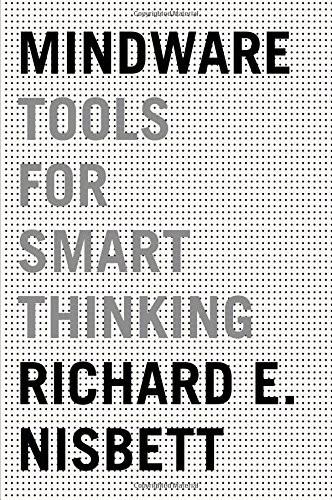
Mindware: Tools for Smart Thinking
by
Richard E. Nisbett
Published 17 Aug 2015
So the cost of driving a car seems slight (I’ve got the thing, might as well use it), whereas every trip by another means hurts a bit (fifteen bucks just to go downtown?!). As it happens, many young people have learned the principle that every car trip usually costs a lot by comparison to the alternatives. They’re buying fewer cars than their parents (helped along in this by the appearance on the scene of Zipcars and their imitators). A person who uses an office in a building the person owns is likely to consider the office to be rent-free. And an accountant might indeed record her as paying nothing for rent. But in fact she is paying something for using the office, namely the payment for the office if she were to rent it out.
…
Smith, Adam social conflict social desirability bias social facilitation effect social psychology; context in; experiments in; founding of; fundamental attribution error in; microeconomics and; in political campaigns; reality in; social influence in Social Security Social Text Socrates Socratic dialogue Sokal, Alan South Carolina Soviet Union Speed (movie) Spender, Stephen Sperber, Dan spreading activation standard deviation (SD); for IQs; for observations Standard & Poor’s Stanford University; Graduate School of Business statistical dependence statistical heuristics statistical independence status quo stereotypes Stich, Stephen stimuli; incidental Stoic philosophers Stoler, Ann Structure of Scientific Revolutions, The (Kuhn) Subaru subliminal perception and persuasion Summers, Lawrence sunk costs Sunstein, Cass Sweden syllogisms Talmudic scholars Tanzania Tao Tennessee Texas text, reality as Thaler, Richard theology Thorndike, Edward Time magazine Towers of Hanoi problem Toyota tragedy of the commons training, transfer of traits; behaviors related to; correlations for; role-related “Transgressing the Boundaries” (Sokal) Triplett, Norman Turkish language Tversky, Amos Twain, Mark uncertainty unconscious mind; rational Unitarians United States; academic performance in; allergies in; autism diagnosis in; crime prevention programs in; death penalty in; dialectical thinking in; health issues in; history teachers in; homicide versus suicide deaths in; incarceration rate in; income ranges in; life insurance coverage in; manufacturing in; minority advancement in armed forces of; national election polls in; oil reserves of; per capita GDP in; pragmatism in; product choice in; Social Security program in; subjectivist view in; vaccination in; values and beliefs in vaccination validity; of arguments; reliability and value: expected; of human life; monetary, in cost-benefit analysis; sentimental; of sunk costs and opportunity costs Van Buren, Abigail (Dear Abby) variables; continuous; control; correlation of; economic; outcome; predictor; regression to the mean of; see also dependent variables; independent variables Varnum, Michael Venn, John Venn diagrams Vermont Volkswagen von Neuman, John Wall Street Journal, The Washington, University of Washington State Institute for Public Policy Western culture, difference between Eastern culture and, see cultural differences West Germany What Works Clearinghouse Whitehead, Alfred North William of Occam Wilson, Timothy within designs World Economic Forum Zajonc, Robert Zen Buddhism Zeno Zhang, Yitang Zipcars A NOTE ABOUT THE AUTHOR Richard E. Nisbett is Distinguished University Professor of Psychology at the University of Michigan and one of the world’s most respected psychologists. He has been awarded the Distinguished Scientific Contribution Award of the American Psychological Association and the William James Fellow Award for Distinguished Scientific Achievements of the Association for Psychological Science, among others.

Platform Revolution: How Networked Markets Are Transforming the Economy--And How to Make Them Work for You
by
Sangeet Paul Choudary
,
Marshall W. van Alstyne
and
Geoffrey G. Parker
Published 27 Mar 2016
Feng Zhu and Marco Iansiti, “Entry into Platform-Based Markets,” Strategic Management Journal 33, no. 1 (2012): 88–106. 9. Jason Tanz, “How Airbnb and Lyft Finally Got Americans to Trust Each Other,” Wired, April 23, 2014, http://www.wired.com/2014/04/trust-in-the-share-economy/. 10. Arun Sundararajan, “From Zipcar to the Sharing Economy,” Harvard Business Review, January 3, 2013, https://hbr.org/2013/01/from-zipcar-to-the-sharing-eco/. 11. Dan Charles, “In Search of a Drought Strategy, California Looks Down Under,” The Salt, NPR, August 19, 2015, http://www.npr.org/sections/thesalt/2015/08/19/432885101/in-search-of-salvation-from-drought-california-looks-down-under. 12.

The Upstarts: How Uber, Airbnb, and the Killer Companies of the New Silicon Valley Are Changing the World
by
Brad Stone
Published 30 Jan 2017
Green was so disgusted with Southern California traffic that he left his beat-up Volvo at home when he enrolled at the University of California at Santa Barbara, committing himself to public transportation. “I wanted to push myself and to see what it was like getting around,” he said. During his sophomore year in 2002, he learned about the East Coast car-sharing club Zipcar, which allowed members to take out vehicles for flexible periods without owning them. After failing to get Zipcar to put cars in Santa Barbara, Green started a car-sharing program at his school. The university purchased a small fleet of Toyota Priuses and Green devised a system so that students could book the cars on a website and unlock doors with special radio ID cards and access codes.4 He spent two years on the project and a couple thousand students started using it.

No Filter: The Inside Story of Instagram
by
Sarah Frier
Published 13 Apr 2020
Even during his charmed childhood, Systrom would explore his hobbies with this level of academic fervor, in pursuit of perfection. Born in December 1983, he was raised, along with his sister, Kate, in a two-story house with a long driveway on a tree-lined street in suburban Holliston, Massachusetts, about an hour west of Boston. His energetic mother, Diane, was vice president of marketing at nearby Monster.com, and later at Zipcar, and introduced her children to the internet back when the connection took over the phone line. His father, Doug, was a human resources executive at the conglomerate that owned Marshalls and HomeGoods discount stores. Systrom was an earnest, curious kid who loved going to the library and playing the futuristic, demon-riddled first-person shooter game Doom II on the computer.
…
, 2, 8, 11, 24, 116 in attempt to buy Facebook, 57 Flickr acquired by, 54 @yock7, 169 Young, Neil, 129 YouTube, 39, 59, 109, 112, 130, 137, 157, 165, 171, 215, 219, 232, 240, 248, 253 algorithm on, 233–34 Communications Decency Act and, 41 fake news on, 225 Google’s acquisition of, 53, 105 Yuki, Ashley, 175–76, 177 Zappos, 105 Zazzle, 5 Zero to One (Thiel), 191, 193 Zimmerman, Joel Thomas (Deadmau5), 70 Zipcar, 3 Zollman, Jessica, 40, 41–43, 53, 70, 72–73, 97, 104 Zoufonoun, Amin, 58–59, 60, 61–62, 84–85 Zuckerberg, Mark, 27, 52, 106, 112, 148–49, 150, 213, 220–21, 262, 274, 276 in attempt to buy Twitter, 57 in attempts to buy Snapchat, 114–15, 116, 117, 122, 125, 183, 191, 200–202 better understanding of FB users as goal of, 221–22 and Cambridge Analytica scandal, 258 as committed to IG’s independence at FB, 54, 55, 63, 67, 95, 96, 106, 121 competitiveness of, 108, 148 credit for IG’s success taken by, 266–67 in decision to buy IG, 56–57; see also Facebook, Instagram acquired by dominance as goal of, 78, 109, 124 and fake news scandal at FB, 211–12, 225 “family of apps” bundled together by, 255–56, 267–68 FB support for IG shut down by, 268–69 and FTC investigation of FB’s IG acquisition, 76 Greek and Roman history interest of, 106 hoodie worn by, 2, 74 IG cannibalization of FB concern of, 223, 226, 227–28 at IG video launch, 111 Krieger’s meeting with, 60 Krieger’s relationship with, 252–53, 254–55, 256, 264 and Krieger’s resignation from IG, 272 in negotiations with Systrom, 57–58, 60–62, 73; see also Facebook, Instagram acquired by new year’s resolutions of, 221–22 personal security of, 107, 134, 222 problems anticipated by, 149, 214–15 rising tensions between Systrom and, 217, 252, 262, 267 similar background of Systrom and, 106–7 6,000 word manifesto of, 221 Spiegel and, 116–17, 200, 201–2 Systrom pressed to build IG’s business model by, 163–65, 167 Systrom’s 2005 meeting with, 1–3 Systrom’s relationship with, 7, 38, 55, 95, 104–5, 107–8, 216–17, 251, 252–53, 256, 264, 266–68, 269–70 and Systrom’s resignation from IG, 272 testimony to Congress by, 258–59, 262 understanding of teens as goal of, 116 and WhatsApp, 64, 125, 217, 256 see also Facebook Zuckerberg, Randi, 126–28, 130, 148 ZuckPri, 95 Zwift, 186 Simon & Schuster 1230 Avenue of the Americas New York, NY 10020 www.SimonandSchuster.com Copyright © 2020 by Sarah Frier All rights reserved, including the right to reproduce this book or portions thereof in any form whatsoever.

The Fourth Industrial Revolution
by
Klaus Schwab
Published 11 Jan 2016
This sharing of goods or services is commonly possible through online marketplaces, mobile apps/location services or other technology-enabled platforms. These have reduced the transaction costs and friction in the system to a point where it is an economic gain for all involved, divided in much finer increments. Well-known examples of the sharing economy exist in the transportation sector. Zipcar provides one method for people to share use of a vehicle for shorter periods of time and more reasonably than traditional rental car companies. RelayRides provides a platform to locate and borrow someone’s personal vehicle for a period of time. Uber and Lyft provide much more efficient “taxi-like” services from individuals, but aggregated through a service, enabled by location services and accessed through mobile apps.
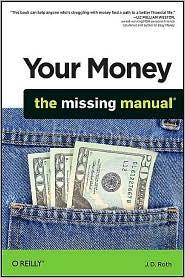
Your Money: The Missing Manual
by
J.D. Roth
Published 18 Mar 2010
And it may seem old-fashioned, but don't forget walking and biking as ways to get around (and burn a few calories). Or check out the public transportation in your area. If those options won't cut it, look into getting a scooter (you can read about one Get Rich Slowly reader's scooter-based lifestyle at http://tinyurl.com/GRS-scooter.) Or check out car-sharing organizations like Zipcar (www.zipcar.com). Note If the idea of a car-free lifestyle intrigues you, pick up a copy of How to Live Well Without Owning a Car (Ten Speed Press, 2006) by Chris Balish. It includes tips for getting to work without a car, as well as some hints on what do with all the money you'll save! Finding Deals on Vacation and Travel As you learned in Chapter 1, experiences are more likely to make you happy than Stuff.
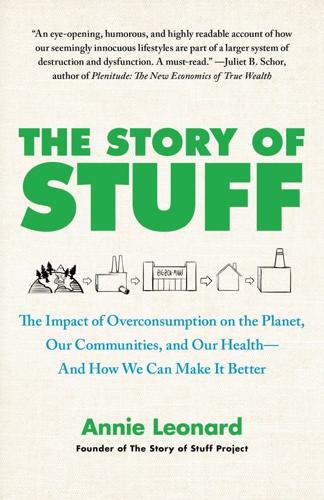
The Story of Stuff: The Impact of Overconsumption on the Planet, Our Communities, and Our Health-And How We Can Make It Better
by
Annie Leonard
Published 22 Feb 2011
Rather than our status being signaled by the clothes we wear, the cars we drive, and the size of our homes, can’t status be based upon kindness, experience, and wisdom? Let’s get creative, people! And we can get back to that essential social activity known as sharing. Car-sharing programs such as Zipcar, tool-lending libraries like the one offered by the City of Berkeley, and good old-fashioned borrowing between neighbors are great strategies for less resource intensive ways to meet our needs. This approach has the added benefit of building community and strengthening interpersonal relationships, which psychologists and social scientists have proven to be an important factor in mental health and happiness.
…
Shell, 33 Women’s Voices for the Earth, 262 Woods, Tiger, 165 Worker health and safety, 47, 49–50, 59, 60, 62, 68, 84–87, 108, 122–124, 134, 160 Working hours, 246–247 World Bank (International Bank for Reconstruction and Development), 38, 39, 128–132, 137, 140, 216 World Bank Bonds Boycott (WBBB), 39 World Bank Group, 38–39 World Health Organization, 13, 59, 222, 223 World Trade Organization (WTO), 128–129, 132–136, 140, 255 World War II, 128 World Wildlife Fund, 40 Worldwatch Institute, 67, 149 Wuppertal Institute for Climate, Environment and Energy, 41 Xylene, 60 Yasuní rainforest, 30–31 Youth Conservation Corps (YCC), 6 Zambia, 130 Zero waste programs, 216, 234–236 Zinc, 59 Zipcar, 43 ABOUT THE AUTHORS Annie Leonard, born in Seattle in 1964, learned to love nature in the forests of the Pacific Northwest. When as a college student in New York City she saw her beloved trees turned to wastepaper and packaging, she followed them to the world’s largest dump, and found her calling.
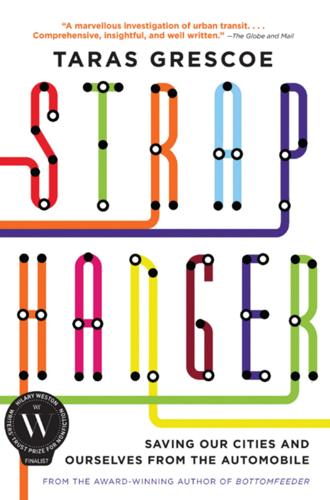
Straphanger
by
Taras Grescoe
Published 8 Sep 2011
In the kitchen, I met Froehlich’s partner, Susanna Gilbertson, who was busy trying to dissuade a giggling Zora from wedging herself beneath a set of shelves. “When our daughter was born,” said Froehlich, “we thought we’d give it a year and decide if we needed to buy a car.” “We talked about it a lot at first,” said Gilbertson. “The few times we’ve really needed a car, we’ve used Philly Car Share, which is like Zipcar. That seems to work fine.” Gilbertson said she relied on SEPTA more than Michael. “Mike takes Zora to day care on his bike, but I’m still a bit scared of cycling on Philly’s streets.” She commutes to her Center City job as a domestic violence educator on the trolley, and rides buses to get to workshops.
…
When I’m running late for an appointment, I can grab a Bixi a couple of hundred yards from our front door and pedal it the few blocks to the nearest métro station. People tell Erin and me that once we become parents, we’ll buckle and buy a car of our own. We’re not so sure. The rare times we really need a car—to make a run to a furniture store or to visit a friend’s cottage—we have a membership with Communauto, the local version of Zipcar. And going to Copenhagen has given me an idea. We’ve recently spotted a couple in our neighborhood who use a cargo bike, imported from Denmark, to shuttle their young children to and from school. For a fraction of the cost of an SUV, we could pedal our kids to day care, school, or the park. Erin and I have gone from wondering if we could get through our lives without owning a car to wondering why we ever thought we needed one.
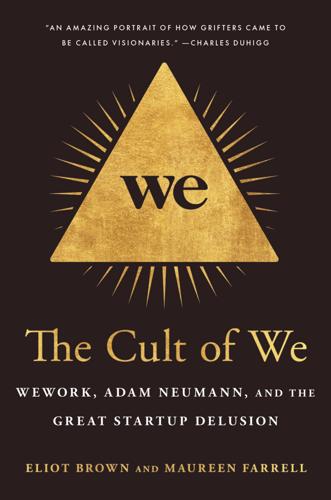
The Cult of We: WeWork, Adam Neumann, and the Great Startup Delusion
by
Eliot Brown
and
Maureen Farrell
Published 19 Jul 2021
He wanted to know how much they paid for all the various components of wood floor installation and how WeWork could do it cheaper. Rather than buying professional-quality furnishings, Orenstein and colleagues found themselves shuttling to Ikea in Zipcars, stuffing them full with tabletops and light fixtures. Sometimes they’d just take all of one type of tabletop in stock, and come back later to do the same once Ikea had restocked. On some Zipcar runs for supplies, the cars were so fully packed that the vehicles’ underbellies would scrape the pavement on bumpy roads. Neumann prized speed. The pace of expansion would impress future investors and bring in new revenue to cover costs.
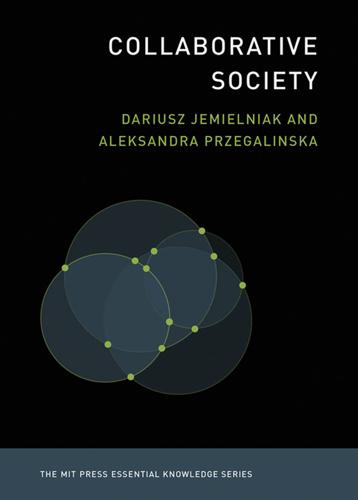
Collaborative Society
by
Dariusz Jemielniak
and
Aleksandra Przegalinska
Published 18 Feb 2020
Some new technologies allow for platforms that intermediate free-flow communication and governance between and by users, which foster not only community building but also the emergence of networked individualism, a kind of internet operating system for connection, in which the person “is the focus: not the family, not the work unit, not the neighborhood, and not the social group.”18 For example, as research by Fleura Bardhi and Giana M. Eckhart on the Zipcar car-sharing network emphasizes, instead of communal relations, participants tend to foster the opposite: a “lack of identification, ... negative reciprocity resulting in a big-brother model of governance, and a deterrence of brand community.”19 But others advocate the individualization of user experience, either by reducing communication into standardized forms or by replacing the need for the collective negotiation of rules and behavior.
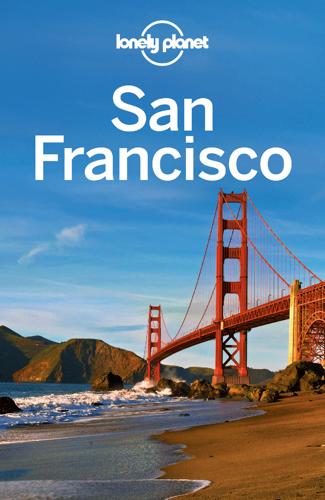
San Francisco
by
Lonely Planet
Major car-rental agencies include: Alamo Rent-a-Car ( 415-693-0191, 800-327-9633; www.alamo.com; 750 Bush St, Downtown; 7am-7pm; 2, 3, 4, 76; Powell-Mason, Powell-Hyde) Avis ( 415-929-2555, 800-831-2847; www.avis.com; 675 Post St, Downtown; 6am-6pm; 2, 3, 4, 76) Budget ( 415-292-8981, 800-527-0700; www.budget.com; 321 Mason St, Downtown; 6am-6pm; 2, 3, 4, 38) Dollar ( 800-800-5252; www.dollarcar.com; 364 O’Farrell St, Downtown; 7am-7pm; 2, 3, 4, 38) Hertz ( 415-771-2200, 800-654-3131; www.hertz.com; 325 Mason St, Downtown; 6am-6pm Mon-Thu, to 8pm Fri & Sat; 2, 3, 4, 38) Thrifty ( 415-788-6906, 800-367-2277; www.thrifty.com; 350 O’Farrell St, Downtown; 7am-7pm; 2, 3, 4, 38) Car Share Car-sharing is a convenient alternative to rentals that spares you pick-up/drop-off and parking hassles: reserve a car online for an hour or two or all day, and you can usually pick up/drop off your car within blocks of where you’re staying. It also does the environment a favor: fewer cars on the road means less congestion and pollution, especially with fuel-efficient and hybrid share-cars. Zipcar ( 866-494-7227; www.zipcar.com) rents Prius Hybrids and Minis by the hour for flat rates starting at $6.98 per hour, including gas and insurance, or by day for $69.30; a $25 application fee and $50 prepaid usage are required in advance. Drivers without a US driver’s license should follow instructions on the website.

The Zero Marginal Cost Society: The Internet of Things, the Collaborative Commons, and the Eclipse of Capitalism
by
Jeremy Rifkin
Published 31 Mar 2014
An increasing number of young people belong to car-sharing clubs in which they pay a small membership fee and, in return, are provided access to automobiles when they need them. Their membership comes with smart cards giving them access to vehicles scattered in various car parks across cities. Members reserve cars in advance over the Web or with a smartphone app. While some of the operations, like Zipcar and Chicago’s I-Go, are privately owned, many more are operated by nonprofit organizations, like Philly Car Share, City CarShare in San Francisco, and HourCar in Minneapolis. In 2012, 800,000 people in the United States belonged to car-sharing services. Globally, 1.7 million people are car sharing in 27 countries.2 A recent study by Frost and Sullivan Consultants forecasts more than 200 car-sharing operations across the European Union by 2020, with a car-sharing vehicle fleet expected to increase from 21,000 to 240,000 vehicles.
…
“Couchsurfing: Sharing Your Life,” Couchsurfing, 2013, https://www.couchsurfing.org/n/about (accessed June 19, 2013). 38. Cody Kittle, “Adventures in Couch Surfing.” 39. “Couchsurfing: Statistics.” 40. Katherine Boyle, “Why Buy that Dress, Movie, Car or Bike When You Can Rent?” Washington Post, March 4, 2012, http://articles.washingtonpost.com/2012-03-04/lifestyle/35449189_1 _zipcar-rent-ties (accessed June 15, 2013). 41. “History and Background,” The Freecycle Network, http://www.freecycle.org/about/back ground (accessed June 27, 2013). 42. Sarah Perez, “Kids’ Clothing Consignment Service ThredUP Prepares to Take on Threadflip, Poshmark & More with Move into Women’s Apparel,” TechCrunch, February 20, 2013, http://techcrunch.com/2013/02/20/kids-clothing-consignment-service-thredup-prepares-to-take-on -threadflip-poshmark-more-with-move-into-womens-apparel/ (accessed June 18, 2013). 43.
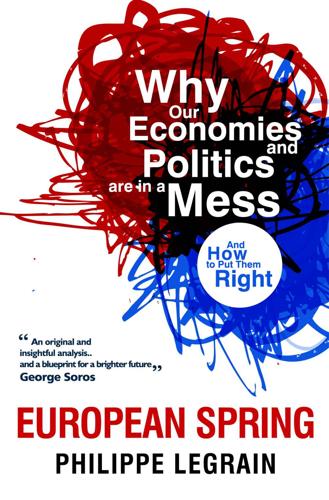
European Spring: Why Our Economies and Politics Are in a Mess - and How to Put Them Right
by
Philippe Legrain
Published 22 Apr 2014
Car-sharing services have mushroomed too. Some are, in effect, more flexible car-rental companies that allow you to hire a vehicle by the hour off the street. The world’s biggest, America’s Zipcar, snapped up European rivals such as Britain’s Streetcar and Spain’s Avancar, before itself being bought by Avis, a traditional car-rental company, in 2013.554 Others allow people to hire out their own car. One is Paris-based Buzzcar, founded by the founder of Zipcar. Tamyca is a German equivalent. (Whipcar, a British one, closed in 2013.) Still others offer taxi-like services, notably Uber, that can call on additional drivers at peak times.
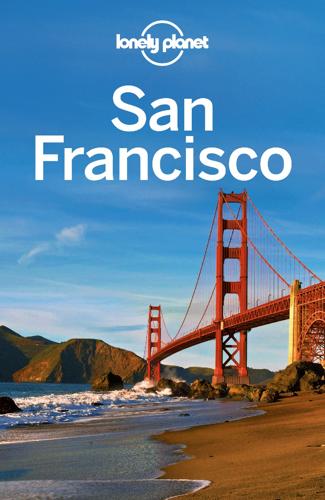
San Francisco
by
Lonely Planet
Major car-rental agencies include: Alamo Rent-a-Car ( 415-693-0191, 800-327-9633; www.alamo.com; 750 Bush St, Downtown; 7am-7pm; 2, 3, 4, 76; Powell-Mason, Powell-Hyde) Avis ( 415-929-2555, 800-831-2847; www.avis.com; 675 Post St, Downtown; 6am-6pm; 2, 3, 4, 76) Budget ( 415-292-8981, 800-527-0700; www.budget.com; 321 Mason St, Downtown; 6am-6pm; 2, 3, 4, 38) Dollar ( 800-800-5252; www.dollarcar.com; 364 O’Farrell St, Downtown; 7am-7pm; 2, 3, 4, 38) Hertz ( 415-771-2200, 800-654-3131; www.hertz.com; 325 Mason St, Downtown; 6am-6pm Mon-Thu, to 8pm Fri & Sat; 2, 3, 4, 38) Thrifty ( 415-788-6906, 800-367-2277; www.thrifty.com; 350 O’Farrell St, Downtown; 7am-7pm; 2, 3, 4, 38) Car Share Car-sharing is a convenient alternative to rentals that spares you pick-up/drop-off and parking hassles: reserve a car online for an hour or two or all day, and you can usually pick up/drop off your car within blocks of where you’re staying. It also does the environment a favor: fewer cars on the road means less congestion and pollution, especially with fuel-efficient and hybrid share-cars. Zipcar ( 866-494-7227; www.zipcar.com) rents Prius Hybrids and Minis by the hour for flat rates starting at $6.98 per hour, including gas and insurance, or by day for $69.30; a $25 application fee and $50 prepaid usage are required in advance. Drivers without a US driver’s license should follow instructions on the website.
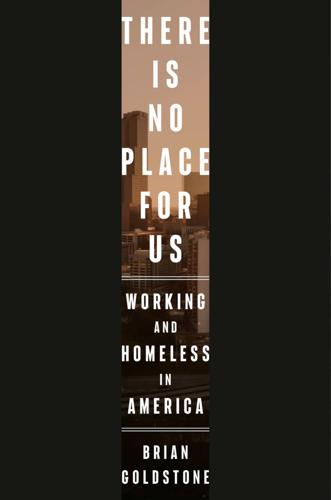
There Is No Place for Us: Working and Homeless in America
by
Brian Goldstone
Published 25 Mar 2025
It had been fourteen years since they had first listened to the album, parked outside Natalia’s apartment in a sedan Maurice had borrowed from his cousin. Then, as now, he beamed as Natalia rapped along with the explicit lyrics. She still knew every word. * * * — They had moved to Atlanta on December 31, 2013, laughing at the corny symbolism of starting a new life in a new city on this particular date. Their rented Zipcar was a cocoon of optimism. During the ten-hour drive from D.C., Shantel and Anthony enumerated in fantastic detail all that they expected to do and see in this place they’d never even visited. Two months earlier, when Natalia learned that the real estate firm she worked for was opening an office in Atlanta, she and Maurice jumped at the chance to relocate.
…
Maxx, 34 Toler, Lynn, 104 Toyota Avalon, 65, 339 Toyota Camry, 96–97, 125, 144–45, 353 Travis, 78, 165, 197, 223–24, 250–51, 253, 257, 275, 278, 279, 283 Trisha, 53, 60, 110–11, 176, 287 Trump, Donald, 111, 142, 266–67, 284 Turbo (Christopher), 162 Twelve Hotel, 173 21 Savage, 37 Tyler Perry Studios, 103–4 Tyneria, 109 Tyson, Cicely, 334 U Uber, 27, 198–88, 273, 296, 298, 309, 326 Uber Eats, 125, 127, 151, 155, 229 Ultimate Medical Academy, 29–30 unemployment, 183, 359 United Inn, 71–72 United Way, 74, 168, 257 Universal Declaration of Human Rights, 361 University Homes, 56 University of Illinois-Springfield, 186 University of South Florida, 11 “unlock value,” 126 “unsheltered,” 166 UPS, xviii Urban Outfitters, 92 “urban pioneers,” 116 V Val, 235–36 Valdosta State University, 177 Valencia, 204–6, 251–52, 274, 275, 283 Vanderbilt University, 357 Vernando, 278, 284 Vero Beach, 68–71 Veronica, 277–78, 280 Victoria Heights, 26–27, 122, 155, 243 Villages of East Lake, 6, 175 virtual schooling, 146, 153, 236 Vulnerability Index-Service Prioritization Decision Assistance Tool (VI-SPDAT), 85–86 W Waffle House, 39 Walgreens, 218 Walker, Celeste, xxi, 37–47, 77–87, 234–39, 245–48, 283 cancer of, 77–79, 80, 83–84, 86, 143–44, 149, 225 childcare business of, 148–49, 153–55 COVID-19 pandemic and, 147–49, 237, 246–47 debt, 79–80 at Dixie Hills rooming house, 301–5, 306–7 at Efficiency Lodge, 37–38, 44–47, 78–82, 147–49, 154–55, 162–68, 204–6, 224–25, 274–75, 280, 353 Gateway Center and, 82–87, 245–46, 356 at Howard Johnson, 40, 41, 236–37, 245, 248 KFC job, 143–44, 149 Novem job of, 39, 41 Passion Foods business of, 45–46, 306 Pink and, 162–68, 274–75, 278 ProLogistix job of, 41, 45 in Tampa, 305–7 Westover Drive house fire, 39–42, 43, 79–80 Walker, Jalen, 38–42, 44, 46, 79, 149, 153–54, 205, 234–38, 302, 306–7, 356 Walker, Micah, 38, 39, 41–42, 44, 47, 77, 79, 84, 149, 153, 154, 205, 224, 234–38, 302, 304–7, 356 Walker, Nyah, 38–42, 44, 46, 79, 154, 205, 224, 236–39, 246, 249–50, 251, 257, 274–75, 304, 306–7, 353 Wall Street, 126 Walmart, 45, 75–76, 120, 191, 225–26, 311, 365 War on Poverty, 18 Washington, D.C., xvii, 25, 91–93, 239–40 Washington High School, 53 Washington Post, 57 water feature, 58 welfare, 136–39 welfare reform, 137–39, 175 WeLive, 303 Wells, Carla, 184–91 background of, 186–87 as Kara’s case manager, 185–86, 187–91, 193, 211, 231, 348–49 Wells, Kyle, 186, 190–91 Wells, Leon W., 118 Wells, Naomi, 187 Wells, Nia, 187 Wellswood Apartments, 118–19 Westover Drive, 39–42, 43 WhatsApp, 277, 279, 283, 285 white flight, 25, 56, 118–19 Whitlock Avenue, 282 Whitney, The, 99–100, 122–29, 155, 240, 243, 244, 310, 316 Wilbourn Sisters Designs, 180 Wilkinson, Aaliyah, 60, 110–12, 113, 173, 175, 269, 334, 335–36 Wilkinson, Alonzo, 174, 295–99 Wilkinson, Brittany “Britt,” xxi, 3–12, 110–20, 169–79, 325–37, 355–56 airport job of, 3–4, 6–7, 10–12 background of, 5–6 COVID-19 pandemic and, 169–70 early life of, 173–77, 331–32 at East Lake Meadows, 5–6, 10, 55, 170 eviction, 259–61, 266, 268–70, 286–88 at Gladstone Apartments, 112–14, 117–20, 169–72, 178–79 housing voucher, 7–9, 10, 51–52, 54–55, 59, 60–63, 110, 116, 178, 295 at Janeka’s apartment, 268–69, 296, 325–26, 327–31 Milwaukee trip, 294–98 at QLS Gardens Apartments, 51–55, 59–63, 113, 169–70, 178 at The Skylark, 266–68 Thanksgiving dinner, 110–11 Wilkinson, Cassandra “Cass,” 4–6, 9–10, 11–12, 57, 60, 110–12, 173, 269–70, 295–96, 333–34 eviction, 259–61, 287–88 Wilkinson, Desiree, 3–4, 9, 10–12, 51–54, 59–61, 110–11, 170, 177–79, 258–59, 268–69, 295–98, 326, 327, 329–36, 365 Wilkinson, Devin, 110–12, 173, 174, 331 Wilkinson, Josiah, 11, 110–11, 175, 176, 287–88 Wilkinson, Kyrie, 3–4, 8, 9, 11, 51–54, 59–61, 110–11, 113, 170, 178–79, 258–59, 268, 270, 294–98, 326, 327, 329–36, 365 Williams, Phyllis, 67 Willy’s Mexicana Grill, 150, 151 Wonder, Stevie, 30–31 Woodland Middle School, 141–42 Woodruff Park, 160 WoodSpring Suites, 241 work ethic, 17, 86 working homeless, use of term, xvii World of Coca-Cola, 194 Y Yasmine, 178, 328, 331–32 Yelp, 70, 341 Young Entrepreneur Convention, 11 Youth Guidance, 186 Yung Mal, 37 Z Zacharias, Ravi, 181 Zack, 268–69 Zelle, 216 Zillow, 54, 225 Zimbabwe Sculpture: A Tradition in Stone, 11 Zipcar, 25 zoning, 190, 264–67, 303, 363 ZRS Management, 127 Zyniah, 198–99, 200, 204–6, 223 A B C D E F G H I J K L M N O P Q R S T U V W X Y Z About the Author Brian Goldstone is a journalist whose longform reporting and essays have appeared in Harper’s Magazine, The New Republic, The California Sunday Magazine, and Jacobin, among other publications.
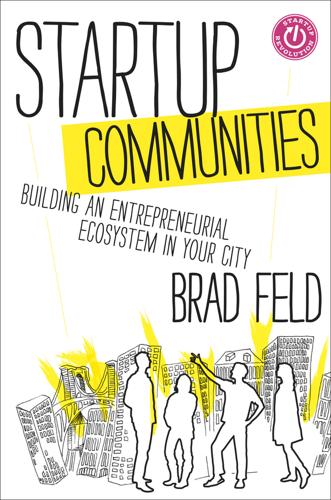
Startup Communities: Building an Entrepreneurial Ecosystem in Your City
by
Brad Feld
Published 8 Oct 2012
Brad Feld has been a pioneer in developing regional ecosystems, first with TechStars, and more recently as one of the leaders on the Startup Colorado regional initiative. He has taken what he has learned and created this book to help shape the thinking about best practices for developing startup communities. At America Online (AOL), Zipcar, and LivingSocial, I’ve experienced firsthand the significant contribution that a strong entrepreneurial ecosystem has to a business. While Silicon Valley is the iconic example, we are seeing success and potential in other places as well, like Washington, D.C.; Chicago; Denver; Boston; Seattle; Portland; Austin; Raleigh; and Nashville.
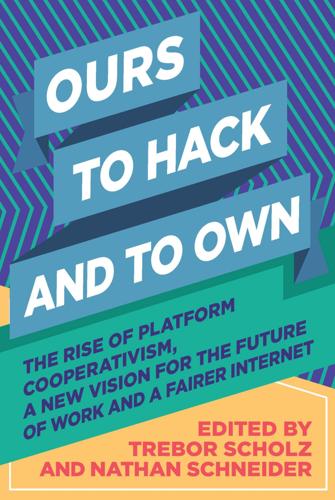
Ours to Hack and to Own: The Rise of Platform Cooperativism, a New Vision for the Future of Work and a Fairer Internet
by
Trebor Scholz
and
Nathan Schneider
Published 14 Aug 2017
But the work required to sustain such structures can limit involvement to those with the time and skills to do so. The interaction designer for platform co-ops should therefore work to enable participants to create and maintain “lighter,” but no less sustainable, communities. At the outset of what is now called the sharing economy, many systems were membership-based: for instance, Zipcar. Current mainstream sharing economy systems require participants to have an online account, but most have dropped the rhetoric of “member.” The dominant players continue to brand themselves as a community, while users experience the systems more like customers. There is an opportunity for platform co-op designers to revive the project of establishing genuine community.
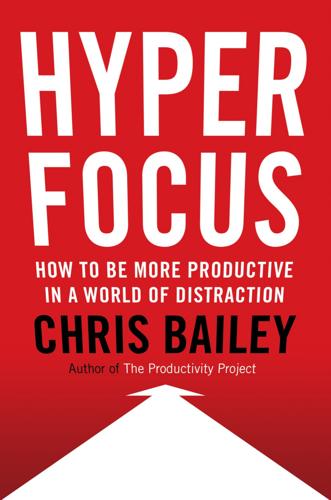
Hyperfocus: How to Be More Productive in a World of Distraction
by
Chris Bailey
Published 31 Jul 2018
daily in meetings: Infocom, “Meetings in America: A Study of Trends, Costs, and Attitudes Toward Business Travel and Teleconferencing, and Their Impact on Productivity” (Verizon Conferencing white paper). the modern office: Chris Bailey, “The Five Habits of Happier, More Productive Workplaces” (Zipcar white paper, October 19, 2016). “compendium of information”: Shalini Misra et al., “The iPhone Effect: The Quality of In-Person Social Interactions in the Presence of Mobile Devices,” Environment and Behavior 48, no. 2 (2016): 275–98. “connection, and relationship quality”: Andrew K. Przybylski and Netta Weinstein, “Can You Connect with Me Now?

Principles of Corporate Finance
by
Richard A. Brealey
,
Stewart C. Myers
and
Franklin Allen
Published 15 Feb 2014
In the view of the law, it is a legal person that is owned by its shareholders. As a legal person, the corporation can make contracts, carry on a business, borrow or lend money, and sue or be sued. One corporation can make a takeover bid for another and then merge the two businesses. Corporations pay taxes—but cannot vote! BEYOND THE PAGE ● ● ● ● ● Zipcar’s articles brealey.mhhe.com/c01 In the U.S., corporations are formed under state law, based on articles of incorporation that set out the purpose of the business and how it is to be governed and operated.4 For example, the articles of incorporation specify the composition and role of the board of directors.5 A corporation’s directors are elected by the shareholders.
…
In other countries, it is more common for large corporations to remain in private hands, and many public companies may be controlled by just a handful of investors. The latter category includes such well-known names as Fiat, Peugeot, Benetton, L’Oréal, and the Swatch Group. BEYOND THE PAGE ● ● ● ● ● Zipcar’s bylaws brealey.mhhe.com/c01 A large public corporation may have hundreds of thousands of shareholders, who own the business but cannot possibly manage or control it directly. This separation of ownership and control gives corporations permanence. Even if managers quit or are dismissed and replaced, the corporation survives.
…
F., 467n, 470n Zero-coupon bonds, 55–56, 61 Zero-dividend companies, 401 Zero-maintenance hedges, 677–679 Zero-stage financing, 371–375 Zero-sum game, 659–660 Zheng, L., 884n Zhengzhou Commodity Exchange, 667 Zhu, N., 857 Zhu, Q., 884n Ziemba, W. T., 332, 332n, 885n Zingales, Luigi, 10n, 368, 459, 459n, 470, 470n, 864n, 864–865, 873, 873n, 875n, 878 Zipcar, 387 Zitzewitz, E., 338n “Zombie” firms, 875 Z-scores, 598n

Architects of Intelligence
by
Martin Ford
Published 16 Nov 2018
How long will it take to have something like what we have with Uber today, a mass driverless product where you could be in Manhattan or San Francisco and it will pick you up somewhere and take you to another place you specify? RODNEY BROOKS: It’s going to come in steps. The first step may be that you walk to a designated pick-up place and they’re there. It’s like when you pick up a Zipcar (an American car-sharing company scheme) today, there are designated parking spots for Zipcars. That will come earlier than the service that I currently get from an Uber where they pull up and double park right outside my house. At some point, I don’t know whether it is going to be in my lifetime, we’ll see a lot of self-driving cars moving around our regular cities but it’s going to be decades in the making and there’s going to be transformations required, but we haven’t quite figured out yet what they’re going to be.

Designing Search: UX Strategies for Ecommerce Success
by
Greg Nudelman
and
Pabini Gabriel-Petit
Published 8 May 2011
Even better, despite the high-tech focus, Greg’s empathy for the user shines through in the way he frames searching and shopping as high-touch social experience. In short, whether you and your team are carefully refining cross-channel integration for established brick and mortars like REI and Wal-Mart, or innovating like madmen for new brands like Groupon and Zipcar, this book will help you to escape the death of the mall and embrace the vivacious, pleasurable, and profitable life of the bazaar. —Peter Morville Introduction With all the books on search and finding, why do you need yet another one? Because search is one of the oldest, most fundamental, yet challenging and rapidly evolving problems facing humanity today.
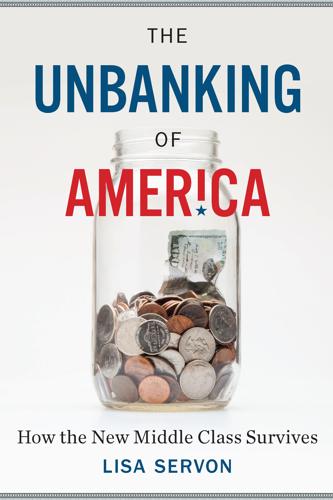
The Unbanking of America: How the New Middle Class Survives
by
Lisa Servon
Published 10 Jan 2017
This economy values shared resources and collaboration over accumulation and ownership, and it operates as a system of providers and users, although people often act in both roles. Providers offer goods and services to be shared, and users rent, pay for, or barter for what’s being offered. Best known for services like Zipcar, Lyft, and Airbnb, it extends to crowdfunding as well as the sharing of equipment and media. Advances in technology—mobile apps and web platforms—allow individuals to connect and then facilitate services and transactions. While almost less than one in ten adults has participated in the sharing economy as providers, consumers under age thirty-five make up 38 percent of the total.
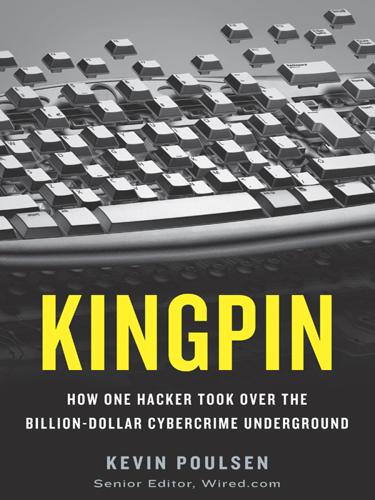
Kingpin: How One Hacker Took Over the Billion-Dollar Cybercrime Underground
by
Kevin Poulsen
Published 22 Feb 2011
He was “Daniel Chance” now, just another displaced software drone relocating to the Bay Area. The real Chance was fifty years old and bearded, while Max was clean shaven with long hair—but the fake driver’s license and genuine money order were enough to get him in. The next evening, Max checked out a red Mustang from his neighborhood Zipcar and packed it with his computer gear. For all his paranoia, he didn’t notice the Secret Service agents tailing him on the drive to the Oakwood and watching from the street as he moved into his new safe house. A month later, Max jolted awake, shot upright in bed, and blinked into the darkness of the flat.
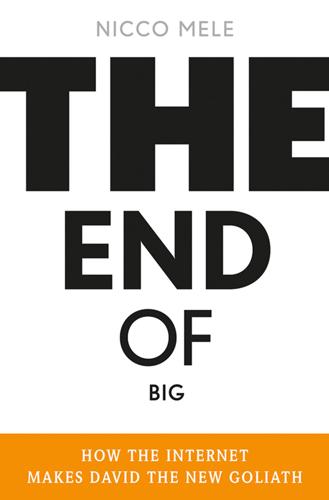
The End of Big: How the Internet Makes David the New Goliath
by
Nicco Mele
Published 14 Apr 2013
Freecycle has 5.7 million members across 85 countries. (Once, while working on a political campaign and short on cash, I furnished an entire apartment complete with refrigerator and washing machine from Freecycle.) By 2015, more than 10 million people in the United States and Europe will belong to a car-sharing service like Zipcar.41 AirBnB, one of several Web sites that allow people to share their empty guest bedrooms with strangers, now lists more available rooms in New York City than the largest hotel in town. Our economy and our civilization are at a critical juncture. As Bill McKibben related in Rolling Stone magazine: “June [2012] broke or tied 3,215 high-temperature records across the United States.
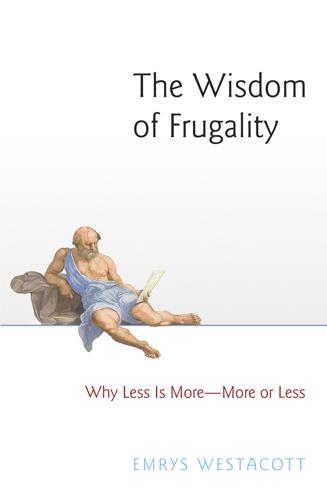
The Wisdom of Frugality: Why Less Is More - More or Less
by
Emrys Westacott
Published 14 Apr 2016
According to some accounts, the millennial generation (roughly those born between 1980 and 2000) exhibit some signs of this trend. They are less interested in home ownership, happy to share cars rather than buy them, and savvy at using technology to save money and keep things simple through using companies like Zipcar (transport), Airbnb (accommodation), and thredUP (clothes). The pendulum is changing direction; a cultural sea change is at hand. Maybe. I for one would be happy to believe that the frugal zealots and voluntary simplifiers are capable of pioneering a general shift in habits and values. They certainly perform a valuable social function, calling attention to the follies of, and trying to apply the brakes to, what they see as a runaway consumer culture, the culture criticized by Juliet Schor, Robert Frank, and others.
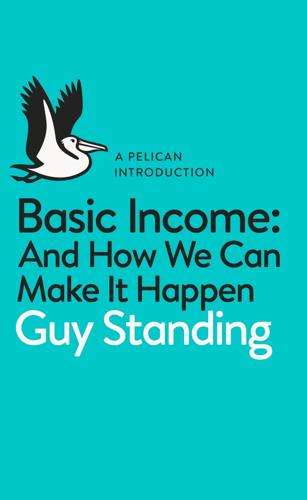
A Pelican Introduction: Basic Income
by
Guy Standing
Published 3 May 2017
Supporters in this fourth wave include: Nobel Prize winners James Buchanan, Herbert Simon, Angus Deaton, Christopher Pissarides and Joseph Stiglitz; academics Tony Atkinson, Robert Skidelsky and Robert Reich, former Secretary of Labour under Bill Clinton; prominent economic journalists Sam Brittan and Martin Wolf; and leading figures in the BIEN movement, such as German sociologist Claus Offe and the Belgian philosopher Philippe van Parijs. Latterly, the idea has been taken up by Silicon Valley luminaries and venture capitalists, some putting up money for the cause, as we shall see. They include Robin Chase, co-founder of Zipcar, Sam Altman, head of the start-up incubator Y Combinator, Albert Wenger, a prominent venture capitalist, Chris Hughes, co-founder of Facebook, Elon Musk, founder of SolarCity, Tesla and SpaceX, Marc Benioff, CEO of Salesforce, Pierre Omidyar, founder of eBay, and Eric Schmidt, Executive Chairman of Alphabet, Google’s parent.

We Are Never Meeting in Real Life
by
Samantha Irby
Published 14 Apr 2017
And don’t forget: DRINK A SHITLOAD OF COLD MEDICINE!!! The Real Housewife of Kalamazoo The only time I fantasize about jettisoning my fast-paced, action-packed, exciting city for the Purell-ed, easy-to-park-your-oversized-vehicle embrace of the suburbs is when I think about how nice it would be to never have to race the motherfucking Zipcar from Target to the Whole Foods hot bar to the Laundromat in under three hours ever fucking again. Strip malls are boring and CHILDREN ARE SO FUCKING LOUD, but there is something to be said for the ability to deposit your car right in front of the window that you will be hawkishly staring out of for half the night to make sure no one so much as breathes on your windshield.
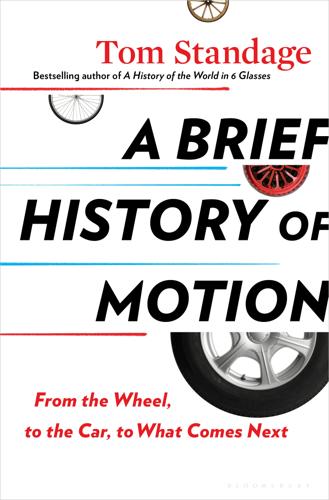
A Brief History of Motion: From the Wheel, to the Car, to What Comes Next
by
Tom Standage
Published 16 Aug 2021
McKinsey, a consultancy, estimates that the global micromobility market will be worth $300 billion to $500 billion by 2030. Of course, the weather may be unsuitable, or the trip may be being made by several people, or with heavy or bulky items. And what if you need a car for a day trip, or a weekend? For such cases, the smartphone has made possible a new twist on car rental. Car-sharing services such as Zipcar let drivers rent a car by the minute, hour, or day. A smartphone app shows cars available nearby, often parked in specially designated bays. Users unlock the vehicle using their phone, use the car for as long as needed, return it to another bay, and are billed accordingly. For urbanites who rarely use cars, such services mean they no longer need to own one, but still have access to one when needed.

How to Fix the Future: Staying Human in the Digital Age
by
Andrew Keen
Published 1 Mar 2018
The old left, in particular, he tells me, is intellectually bankrupt, which may explain why many traditional socialists, particularly in the labor unions, haven’t embraced the universal basic income idea. The case for a universal basic income is also shared by many technologists and entrepreneurs, who see it as an essential feature—perhaps even the central social security pillar—of tomorrow’s networked society. Robin Chase, the former CEO of both Zipcar and Buzzcar and a leading evangelist for the sharing economy, tells me that universal basic income represents a kind of investment that will allow us to “tap into people’s talents.” There will, she promises me, be a “huge uptick in happiness, creativity, and productivity” after its introduction. More ominously, Stowe Boyd, a Boston-based influential technology commentator and researcher who describes himself as a “post-futurist,” warns me that unless we introduce universal basic income, there will be “homelessness sixteen deep in the streets.”
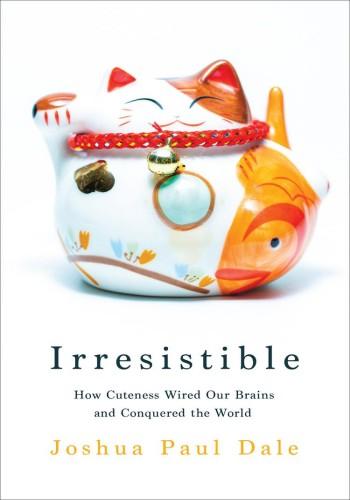
Irresistible: How Cuteness Wired our Brains and Conquered the World
by
Joshua Paul Dale
Published 15 Dec 2023
The New York Times asks, before advising, ‘Try playing pickleball’ – a game that I remember from school.4 Cuteness seems to be showing up in the adult world in other ways, too. On a recent trip to Seattle, my home town, I was surprised to find that inanimate objects seemed to have come to life while I was away. In my hotel a velvet bag below the sink was labelled: ‘Shh! The hairdryer is sleeping.’ Outside, the sign for a share-car parking lot read, ‘Zipcars live here.’ A train pulling into a station stated, ‘The doors will open on my right.’ This trend to treat objects as conscious agents deserving of empathy was familiar to me – it’s a long-standing tradition in Japan. Now it seemed to be spreading to the US. Like cuteness, anthropomorphism is a cultural trend that wouldn’t have existed in the first place if we hadn’t had the ability to see objects, or other creatures, as capable of thinking and even inspiring empathy.
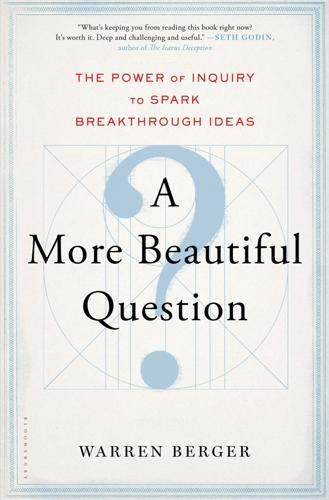
A More Beautiful Question: The Power of Inquiry to Spark Breakthrough Ideas
by
Warren Berger
Published 4 Mar 2014
Those paying close attention might have noticed that just a few years prior to this, lots of people held similar assumptions about cars—you could buy them, you could rent them, but there was no practical way to share them. Then an entrepreneur named Robin Chase asked, Why not?—and subsequently introduced Zipcar. Gebbia told me that part of the reason he and Chesky believed this was a problem worth solving—the reason, he suspects, that they saw what others missed—was that they had been on both sides of the problem. “We knew what it was like to come to town needing a place to stay, and we knew what it was like to have extra space that we needed to rent,” Gebbia said.
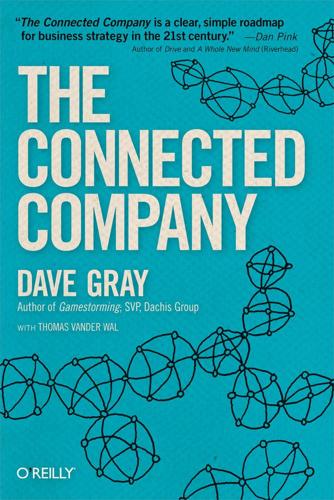
The Connected Company
by
Dave Gray
and
Thomas Vander Wal
Published 2 Dec 2014
But in a densely populated urban environment, a car quickly becomes more trouble than it’s worth. A permanent parking space in New York costs more than a house in many other areas. Density creates demand for more services, like taxis, limousine services, buses, and subways. It also creates opportunities for new services. For example, Zipcar is a car-sharing service that gives customers shared access to a pool of cars located throughout their city. RelayRide and Whipcar are peer-to-peer services that allow car owners to rent their cars to neighbors by the hour or by the day. Uber connects a network of professional limo drivers with city dwellers, who can order a car by SMS or mobile phone app; orders are routed to the nearest available driver, payments are automated, and driver tips are included, creating a simple, easy, seamless customer experience.
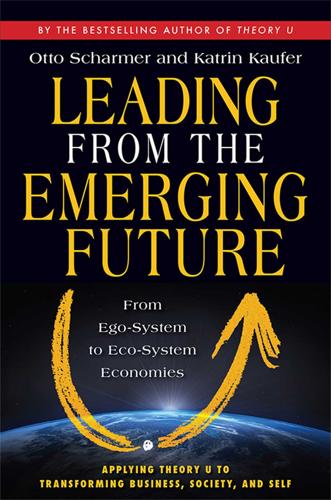
Leading From the Emerging Future: From Ego-System to Eco-System Economies
by
Otto Scharmer
and
Katrin Kaufer
Published 14 Apr 2013
This is fueling massive shift, where usage trumps possession. I believe it will be referred to as a revolution, so to speak, when society, faced with great challenges, makes a seismic shift from individual getting and spending toward the rediscovery of collective good.”74 Here are a few examples of the early stages of that seismic shift. Zipcar, a car-sharing service founded in 2000 in Cambridge, Massachusetts, had 670,000 members in 2012. Netflix, founded in 1997, allows its 23 million members to share access to DVDs. Zimride is a social network for ride-sharing at MIT that allows students, employees, and faculty to coordinate shared car rides.
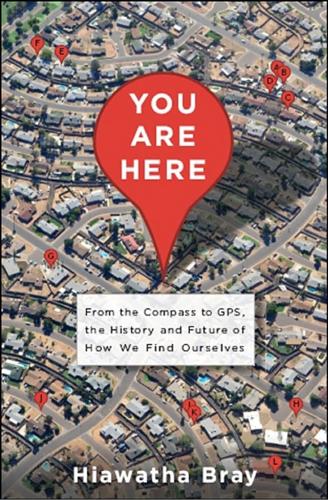
You Are Here: From the Compass to GPS, the History and Future of How We Find Ourselves
by
Hiawatha Bray
Published 31 Mar 2014
It was the simplest way to capture the talents of Where 2’s employees and especially its founders, two brothers from Denmark, Lars and Jens Rasmussen. Backed with ample Google capital, the Rasmussens built their original product into Google Maps, a superb online mapping service that has overtaken AOL’s MapQuest as the Internet’s favorite geoservice. To understand Google Maps’ dominance, don’t visit the website. Instead, visit a company like Zipcar, which uses a Google map to display locations where its vehicles can be found. Or browse the countless personal websites and blogs where people attach Google maps of their homes, their favorite vacation spot, the location of the church picnic. Google was not content with handing out free geographic information on its own site.
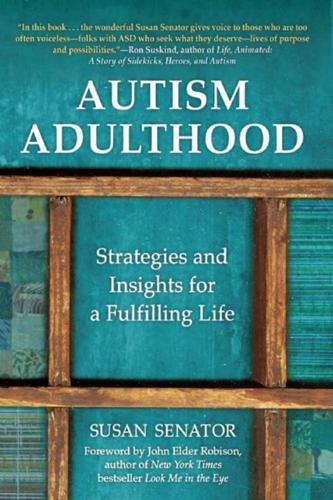
Autism Adulthood: Strategies and Insights for a Fulfilling Life
by
Susan Senator
Published 4 Apr 2016
I thought of how they could go on walks with their caregiver (three young men could share one using Adult Foster Care money, if they qualified) to all Nat’s familiar haunts, buying brownies at the coffee shop, candy bars at the pharmacy. It would be so easy for them to live there without even having to buy a car for the house because they could walk to the supermarket. They could join ZipCar if they needed wheels. They could use The Ride, which is run by the T for people with disabilities; it is a van that picks riders up directly from their homes and takes them to work. Even though at the time Nat was probably not quite ready for The Ride, his using it became another goal in my mind.
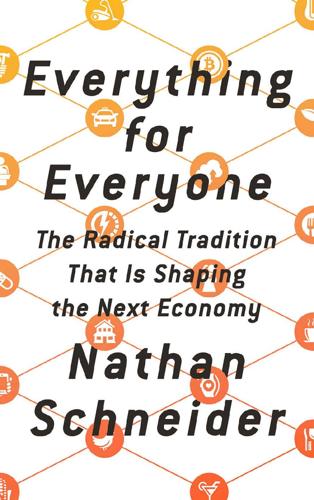
Everything for Everyone: The Radical Tradition That Is Shaping the Next Economy
by
Nathan Schneider
Published 10 Sep 2018
Capitalism’s creative destruction may have ravaged our communities for centuries with salvos of individualism, competition, and mistrust, but now it was ready to sell the benefits of community back to us on our smartphones. Without owning any guestrooms of its own, Airbnb was by then more valuable than Hyatt; Zipcar, which rents cars by the hour, had been bought by the international car-rental company Avis Budget. The sharing economy was also changing the way at least some people worked. Online labor brokers such as Amazon’s Mechanical Turk enticed hundreds of thousands of people to take up digital piecework—data entry, transcribing audio, running errands—without expectation of paid leave, health insurance, or even a minimum wage.

Insane Mode: How Elon Musk's Tesla Sparked an Electric Revolution to End the Age of Oil
by
Hamish McKenzie
Published 30 Sep 2017
Revenue from fuel taxes will go down, presumably to be replaced by other sources of income. Parking revenue—including fines—may well all but disappear. Speeding tickets and driver registrations will be greatly reduced. These developments are going to affect how governments make money and citizens spend it. Robin Chase, the former CEO of car-sharing company Zipcar, and now the executive chairman of vehicle-communications company Veniam, has called for a universal basic income to offset the losses that will be brought on by an era of automation. Such guaranteed income would allow “more people the opportunity to focus on purposeful, passion-driven work,” she wrote in 2016.
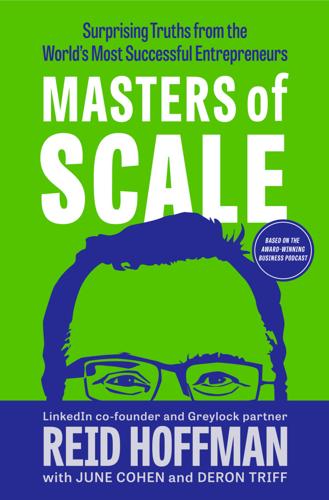
Masters of Scale: Surprising Truths From the World's Most Successful Entrepreneurs
by
Reid Hoffman
,
June Cohen
and
Deron Triff
Published 14 Oct 2021
There were some signs of demand for Airbnb, in that there were a lot of young people who wanted to travel, and needed to do it cheaply, and were happy to sleep on someone’s couch; “couch surfing” was a thing. And there was also a trend at the time toward collaborative consumption—with companies like ZipCar pioneering shared car ownership. But the idea of renting someone else’s room in their apartment for a night—that was definitely new. The translation of patterns into business ideas is at the core of what it means to be an entrepreneur. And no matter how quickly you translate those patterns into ideas, chances are other people will be doing the same thing.
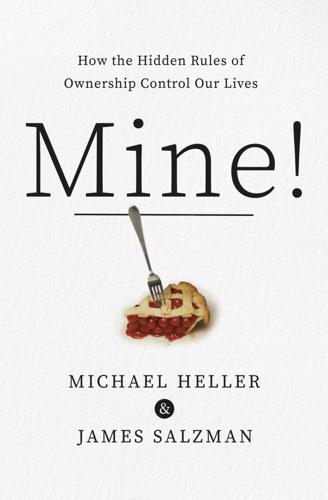
Mine!: How the Hidden Rules of Ownership Control Our Lives
by
Michael A. Heller
and
James Salzman
Published 2 Mar 2021
It’s now possible to ask whether value can be created the other 96 percent of the time, when the car is idle. Is there a business opportunity here? Turo, Getaround, Maven, and other start-ups sure hope so—they want renters to bypass Hertz and Avis and instead take your private car out of the driveway. It’s Zipcar, but for every car. As one tech reporter fantasized, “In a world where property is networked and programmable, and ultra-fast micro-payments can happen automatically, and software records and enforces who owns what, the pool of possible transactions is potentially infinite.” Getting married and don’t want to own a pricey wedding dress?
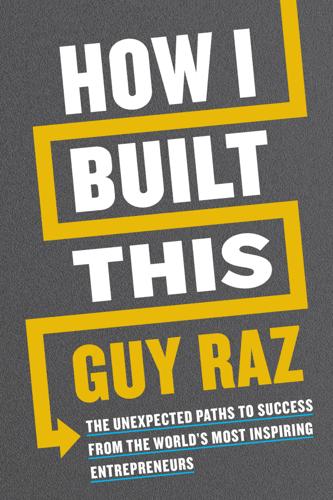
How I Built This: The Unexpected Paths to Success From the World's Most Inspiring Entrepreneurs
by
Guy Raz
Published 14 Sep 2020
Like Jenn Hyman who, in 2009, went out to raise a $1.75 million seed round for an online designer dress rental business she called Rent the Runway, where women could browse dresses that might cost thousands of dollars to buy, but that they could rent for a fraction of the cost. A dress would then show up at a customer’s home, she’d wear it for whatever occasion had brought her to the site to begin with, and then she’d ship the dress back when she was done with it. It was like Zipcar meets Netflix meets Zappos, with what would eventually become the country’s largest dry-cleaning service on the back end. Today, Rent the Runway has more than 1,200 employees and does more than $100 million in revenue, but in 2009 the responses Jenn and her co-founder, Jennifer Fleiss, got from investors were less than encouraging, sometimes even startling.

Coastal California
by
Lonely Planet
Major international car-rental companies include: Alamo ( 877-222-9075; www.alamo.com) Avis ( 800-331-1212; www.avis.com) Budget ( 800-527-0700; www.budget.com) Dollar ( 800-800-3665; www.dollar.com) Enterprise ( 800-261-7331; www.enterprise.com) Fox ( 800-225-4369; www.foxrentacar.com) Hertz ( 800-654-3131; www.hertz.com) National ( 877-222-9058; www.nationalcar.com) Thrifty ( 800-847-4389; www.thrifty.com) If you’d like to minimize your carbon footprint, a few major car-rental companies (eg Avis, Budget, Enterprise, Fox, Hertz and Thrifty) offer ‘green’ fleets of hybrid or biofueled rental cars, but these fuel-efficient models are in short supply. Reserve well in advance and expect to pay significantly higher rates. Also consider the following: Simply Hybrid ( 323-653-0011, 888-359-0055; www.simplyhybrid.com) In Los Angeles. Free delivery and pick-up from some locations with three-day minimum rental. Zipcar ( 866-494-7227; www.zipcar.com) Currently available in 21 California locations, this car-sharing club charges usage fees (per hour or daily), including free gas, insurance (damage fee of up to $500 may apply) and limited mileage. Apply online (foreign drivers OK); annual membership $50, application fee $25. To find and compare independent car-rental companies, try Car Rental Express (www.carrentalexpress.com).

Western USA
by
Lonely Planet
A few major car-rental companies (including Avis, Budget, Enterprise, Hertz and Thrifty) offer ‘green’ fleets of hybrid or biofueled rental cars, but they’re in short supply. Reserve well in advance and expect to pay significantly more for these models. Also try: Simply Hybrid ( 323-653-0011, 888-359-0055; www.simplyhybrid.com) In Los Angeles. Free delivery and pick-up from some locations with a three-day minimum rental. Zipcar ( 866-494-7227; www.zipcar.com) Available in 22 California cities (mostly along the coast), this car-sharing club charges usage fees (per hour or daily), including free gas, insurance (damage fee of up to $500 may apply) and limited mileage. Apply online (foreign drivers OK); annual membership $50, application fee $25.
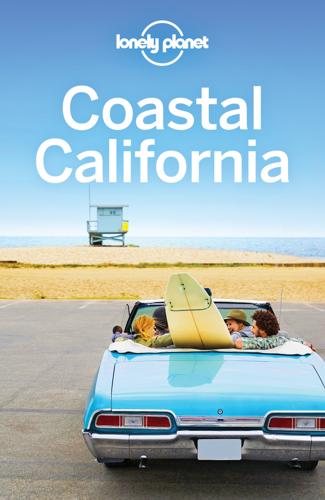
Coastal California Travel Guide
by
Lonely Planet
Car Rental (%310-645-3993; www.supercheapcar.com) No surcharge for drivers ages 21 to 24; nominal daily fee applies for drivers ages 18 to 21 (full-coverage insurance required). Locations in the San Francisco Bay Area, LA and Orange County. Thrifty (%800-847-4389; www.thrifty.com) Zipcar (%866-494-7227; www.zipcar.com) Currently available in the San Francisco Bay Area, LA, San Diego and Sacramento, this car-sharing club charges usage fees (per hour or day), including free gas, insurance (a damage fee of up to $1000 may apply) and limited mileage. Apply online (foreign drivers accepted); application fee $25, annual membership from $70.
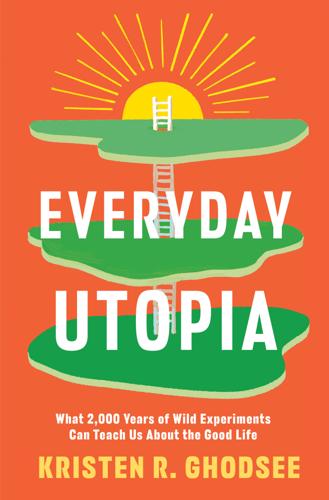
Everyday Utopia: What 2,000 Years of Wild Experiments Can Teach Us About the Good Life
by
Kristen R. Ghodsee
Published 16 May 2023
Why not expand these practices to include toy libraries or tool libraries? We could have shared pools of kitchen items or landscaping equipment. Figure 5.3. Free book exchange in Pennsylvania. In some ways we already see steps being taken in this direction by start-ups in the so-called sharing economy; businesses like Zipcar, Citi Bike, HomeExchange, and Rent the Runway are finding ways to monetize either our desire to have less stuff or, more cynically, our inability to afford all of the stuff we want on our shrinking incomes in the precarious gig economy. But to the extent that young people avail themselves of these new services, they are accustoming themselves to the idea that property can be shared in common even if, for now at least, that sharing must be mediated by a for-profit company.
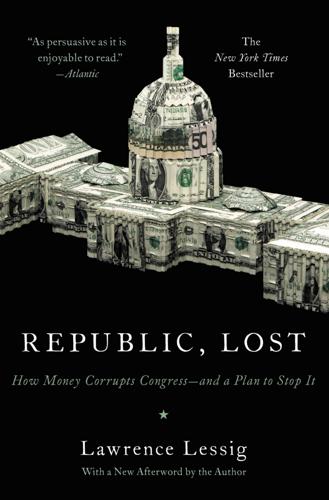
Republic, Lost: How Money Corrupts Congress--And a Plan to Stop It
by
Lawrence Lessig
Published 4 Oct 2011
Vaccaro 0 9,200 9,200 Federal Realty Investment Trust 0 8,900 8,900 Cetrulo & Capone 0 8,900 8,900 Dimeo Construction 0 8,700 8,700 Airline Pilots’ Assn. 9,500 0 9,500 American Hospital Assn. 7,500 1,000 8,500 Massachusetts Mutual Life Insurance 10,000 0 10,000 Palmetto Group 0< Bsiz p/td> 8,000 8,000 O’Neill, Athy & Casey 0 10,750 10,750 Robinson & Cole 1,500 6,150 7,650 Amalgamated Transit Union 7,500 0 7,500 Brotherhood of Locomotive Engineers 7,500 0 7,500 Amgen Inc. 5,000 2,500 7,500 American College of Emergency Physicians 7,500 0 7,500 American College of Surgeons 7,500 0 7,500 Carpenters & Joiners Union 7,500 0 7,500 Brown Brothers Harriman & Co. 0 7,400 7,400 Alternate Concepts Inc. 0 7,400 7,400 Edwards, Angell et al. 2,400 4,900 7,300 Scansoft Inc. 0 7,200 7,200 Commonwealth of Massachusetts 0 7,060 7,060 International Assn. of Fire Fighters 7,000 0 7,000 Global Companies 0 7,000 7,000 National Air Traffic Controllers’ Assn. 7,000 0 7,000 Sheet Metal Workers’ Union 12,000 0 12,000 Textron Inc. 7,000 0 7,000 Beal Co. 0 5,800 5,800 Manulife Financial 6,50 Bign=" p0 250 6,750 Ads Ventures 0 6,650 6,650 Partners Healthcare 0 15,400 15,400 Rasky/Baerlein Group 0 6,550 6,550 Haleakala National Bank 0 6,100 6,100 Endo Pharmaceuticals 6,000 0 6,000 Metlife Inc. 6,000 0 6,000 RMD 0 6,000 6,000 Roche Holdings 6,000 0 6,000 National Assn. of Home Builders 6,000 0 6,000 Nat’l Assn./Insurance & Financial Advisors 6,000 0 6,000 Marty Meehan for Congress Cmte. 6,000 0 6,000 Boeing Co. 6,000 0 6,000 Zipcar Inc. 0 5,800 5,800 BBH & Co. 0 5,800 5,800 Goodwin Procter LLP 0 5,900 5,900 Comcast Corp. 1,000 5,000 6,000 Century Bank 0 5,300 5,300 Trinity Financial 0 5,300 5,300 CWC Builders 0 5,300 5,300 New England Development 0 5,300 5,3 Bnt> Winn Development 0 5,300 5,300 Boston University 0 5,900 5,900 AECOM Technology Corp. 1,000 4,200 5,200 Kearney, Donovan & McGee 0 5,150 5,150 Credit Union National Assn. 5,000 0 5,000 Bart’s Bridge PAC 5,000 0 5,000 American Optometric Assn. 5,000 0 5,000 KPMG LLP 5,000 0 5,000 American College of Cardiology 5,000 0 5,000 American Assn. of Orthopaedic Surgeons 5,000 0 5,000 Bs-ser p BRIDGE PAC 5,000 0 5,000 National Rural Letter Carriers’ Assn. 5,000 0 5,000 Ocean State PAC 5,000 0 5,000 Maloney Properties 0 5,000 5,000 Marine Engineers Beneficial Assn. 5,000 0 5,000 American Academy of Ophthalmology 5,000 0 5,000 American Council of Life Insurers 3,000 2,000 5,000 Biogen Idec 5,000 0 5,000 Seafarers International Union 5,000 0 5,000 Teamsters’ Union 5,000 550 5,500 Bs-ser p American Federation of Teachers 5,000 0 5,000 Penguin PAC 5,000 0 5,000 Operating Engineers’ Union 10,000 0 10,000 Silk PAC 5,000 0 5,000 Ironworkers’ Union 5,000 0 5,000 Laborers’ Union 5,000 0 5,000 USA Farm Worker PAC 5,000 0 5,000 National Assn. of Letter Carriers 5,000 0 5,000 National Beer Wholesalers’ Assn. 5,000 0 5,000 Donoghue, Barrett & Singal 0 5,000 5,000 Synergy PAC 5,000 0 5,000 United Parcel Service 5,000 0 5,000 What does this list say?
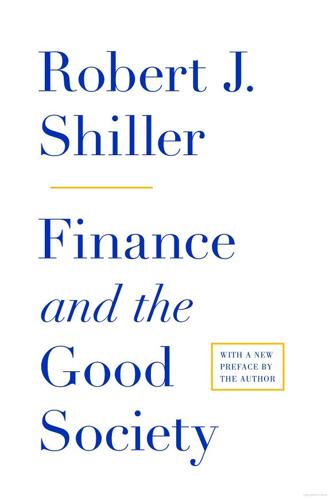
Finance and the Good Society
by
Robert J. Shiller
Published 1 Jan 2012
For example, he predicted that some of us will record our entire lives, running video recorders all the time and storing our entire video biographies for future viewing. That idea made for thought-provoking reading, but it hasn’t yet become a reality. What Gates did not predict were numerous other fundamental developments, including the web sites eBay (founded in 1995, the very year his book appeared), Wikipedia, Facebook.com, LinkedIn.com, Zipcar.com, CouchSurfing.org, and a million others that have changed the way we live our lives. He shouldn’t be faulted for failing to predict these—no one could have. Instead we should consider the process through which such innovations happen, and why they happen more in certain environments than in others.
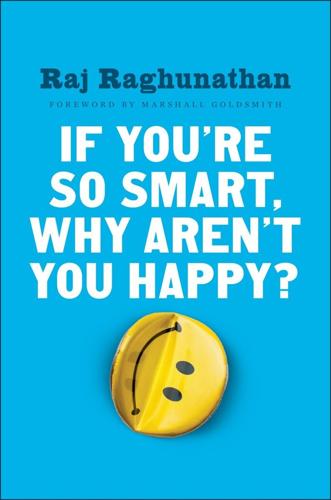
If You're So Smart, Why Aren't You Happy?
by
Raj Raghunathan
Published 25 Apr 2016
That is, one person’s flow doesn’t have to come at the cost of another’s. By contrast, because extrinsic rewards are limited, an increase in one person’s wealth, power, or fame has to come at the cost of another’s.* What Disrupts Flow Think of any invention—from airplanes and computers to Scotch tape and Zipcars—and you can bet that flow was involved in all of them. And yet, many of us are unaware of this fact. Instead, we believe that our achievements are due to our drive to be successful or superior. That is, we tend to attribute our achievements to the desire for worldly success when, in fact, flow is the real hero.
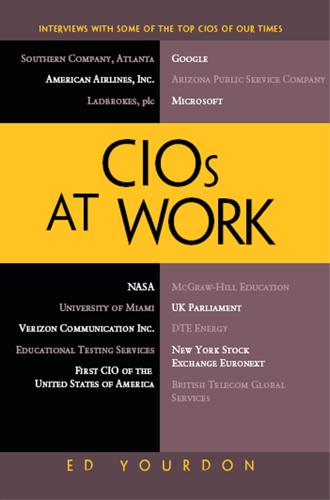
CIOs at Work
by
Ed Yourdon
Published 19 Jul 2011
You know, innovation can come from anywhere, ’cause it’s a digital super-interconnected world. Yourdon: Right. That’s an area that I’ve been trying to explore and I’ve had great trouble doing, but I’ll give you an example: I was hoping to be able to talk to the CIO of, let’s say, Avis or Hertz on one side and Zipcar on the other side—’cause there’s an example where technology has facilitated an entirely different business model. Do you see that kind of disruption taking place in the telecommunications industry? Gurnani: Well, it has and I think we’ve already gone through a couple of waves of disruption. Mobile is huge, and you look at how the ecosystem continues to evolve and change.

Lonely Planet Washington, Oregon & the Pacific Northwest
by
Lonely Planet
KOA (www.koa.com) offers generally excellent RV-oriented campgrounds, while a good source for general RV-travel tips is www.rvtravel.com. CAR SHARING There are an ever-changing number of car-sharing programs in the US. These programs usually require a membership fee (one-time and/or annual), plus a per-hour car-rental charge. Two of the biggest are Zipcar and Car2go, but there are many that operate only within a city or a few cities. They can be an economical way to rent (or share) a car if you only need wheels for an hour at a time. Rental Major international rental agencies have offices throughout the Pacific Northwest. To rent a car, you must have a valid driver’s license, (usually) be at least 21 years of age and present a major credit card or a large cash deposit.

USA Travel Guide
by
Lonely, Planet
Some major national companies, including Avis, Budget and Hertz, offer ‘green’ fleets of hybrid rental cars (eg Toyota Priuses, Honda Civics), although you’ll usually have to pay a lot extra to rent a more fuel-efficient car. Some independent local agencies, especially on the West Coast, also offer hybrid-vehicle rentals. Try Southern California’s Simply Hybrid (www.simplyhybrid.com) and Hawaii’s Bio-Beetle (Click here). For car-sharing rentals in cities and towns in more than 30 states, Zipcar ( 866-494-7227; www.zipcar.com) charges hourly/daily rental fees with free gas, insurance and limited mileage included; prepayment is required. Check the website for locations and to apply (some foreign drivers are OK). No one-way rentals are allowed. MOTORCYCLE & RECREATIONAL VEHICLE (RV) If you dream of cruising across America on a Harley, EagleRider ( 888-900-9901; www.eaglerider.com) has offices in major cities nationwide and rents other kinds of adventure vehicles, too.